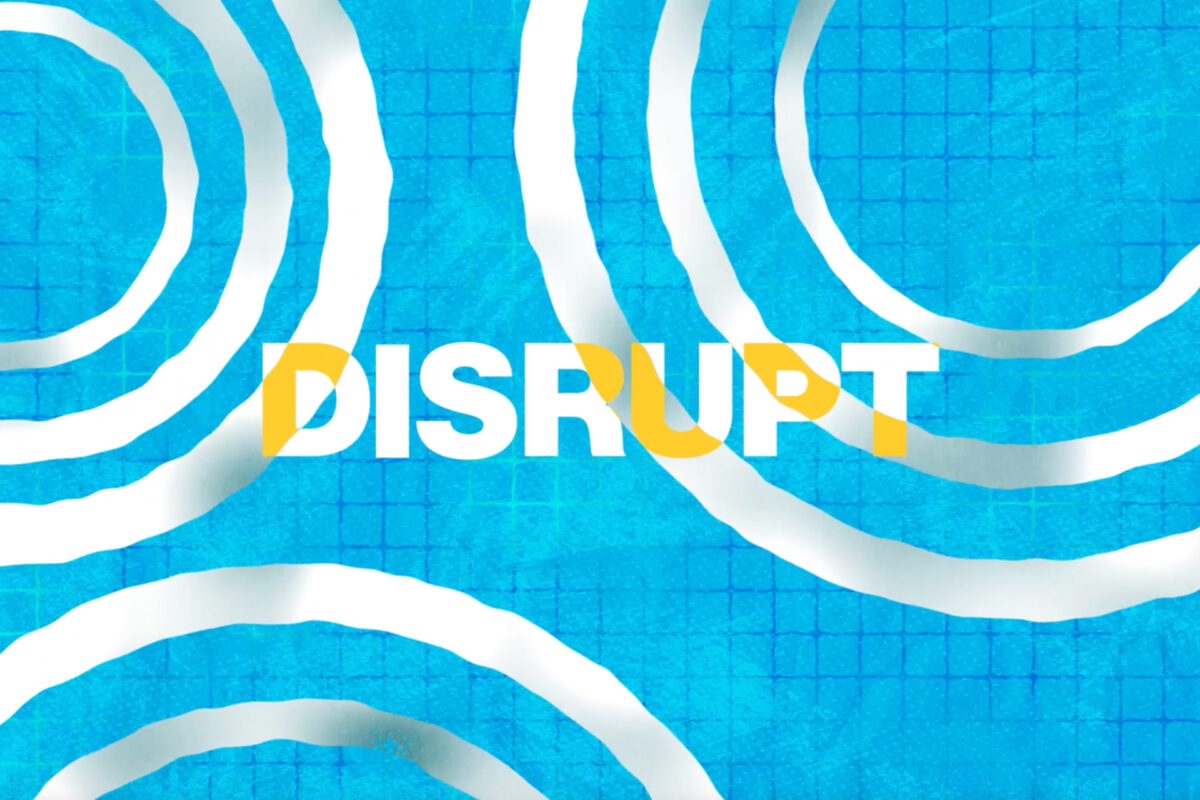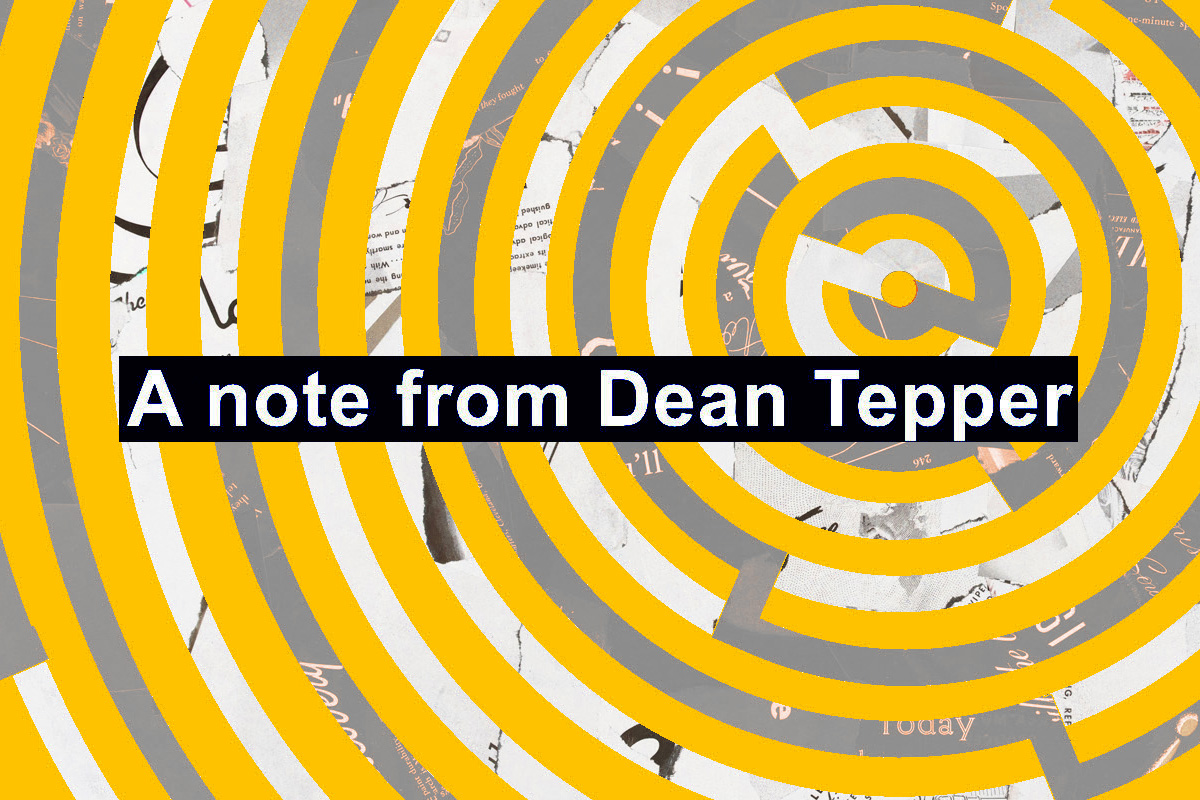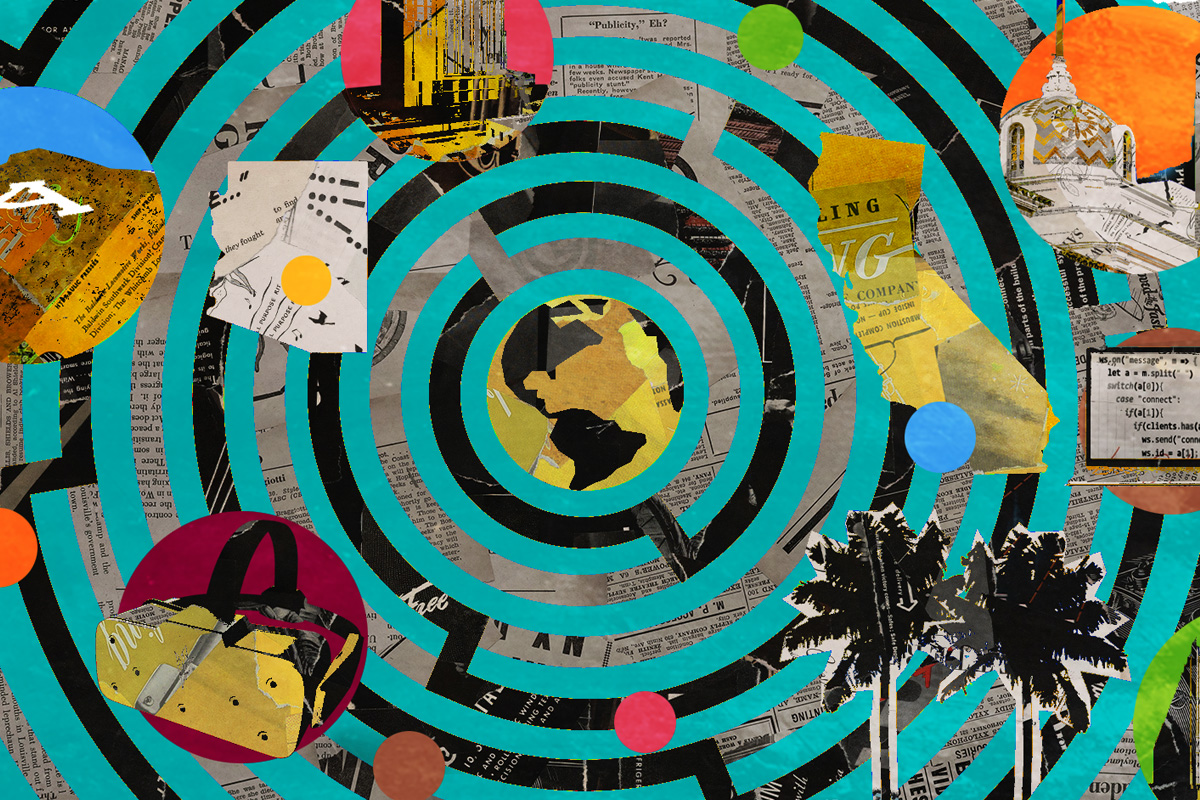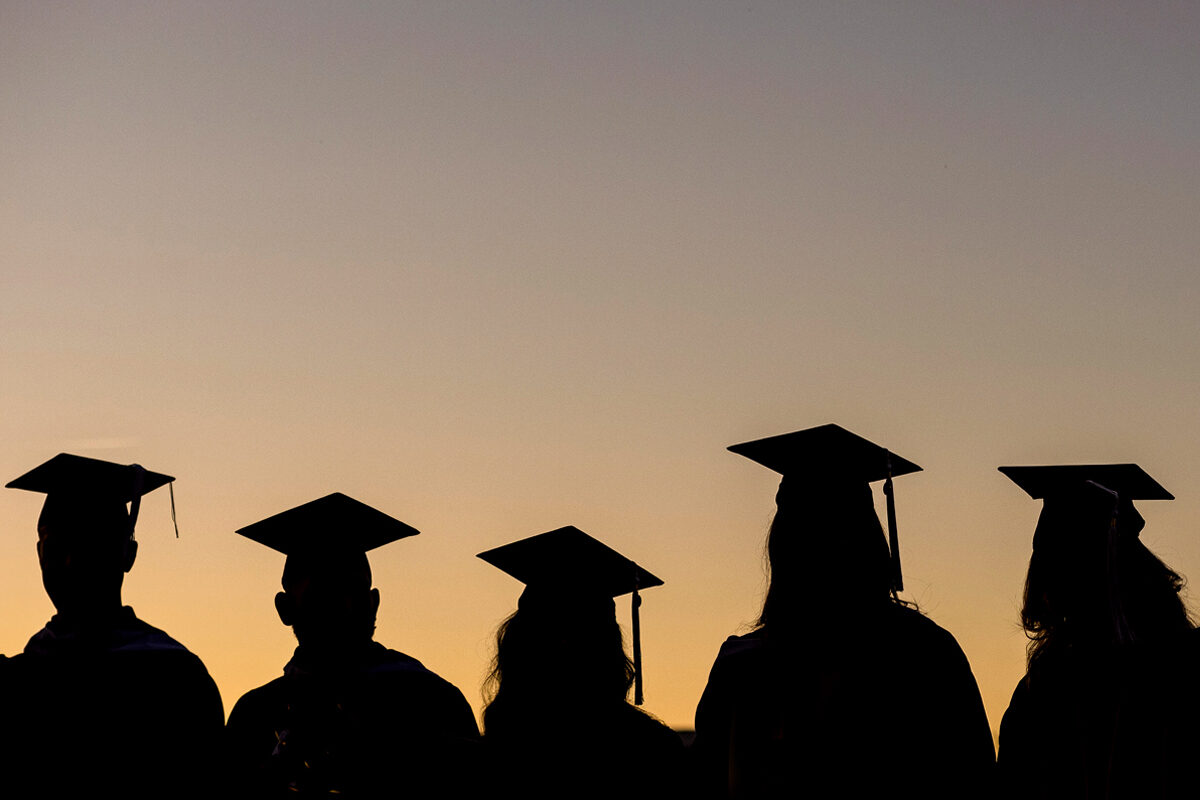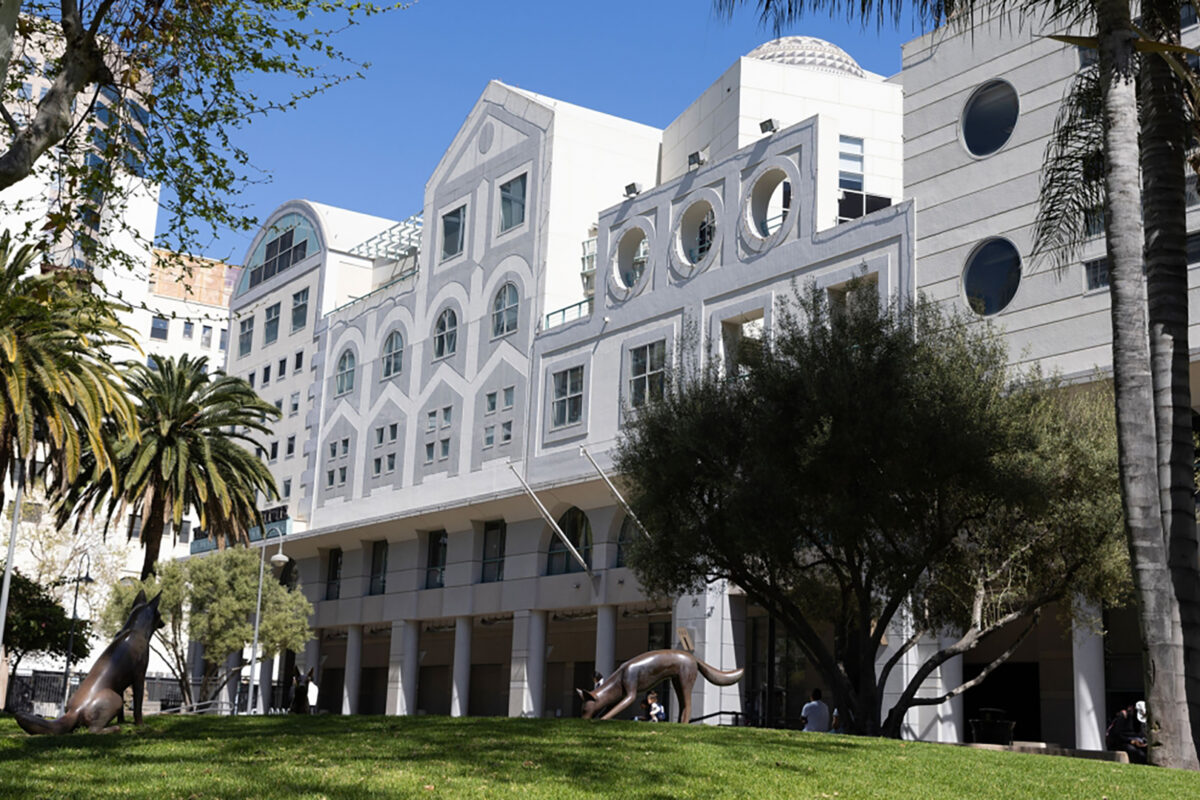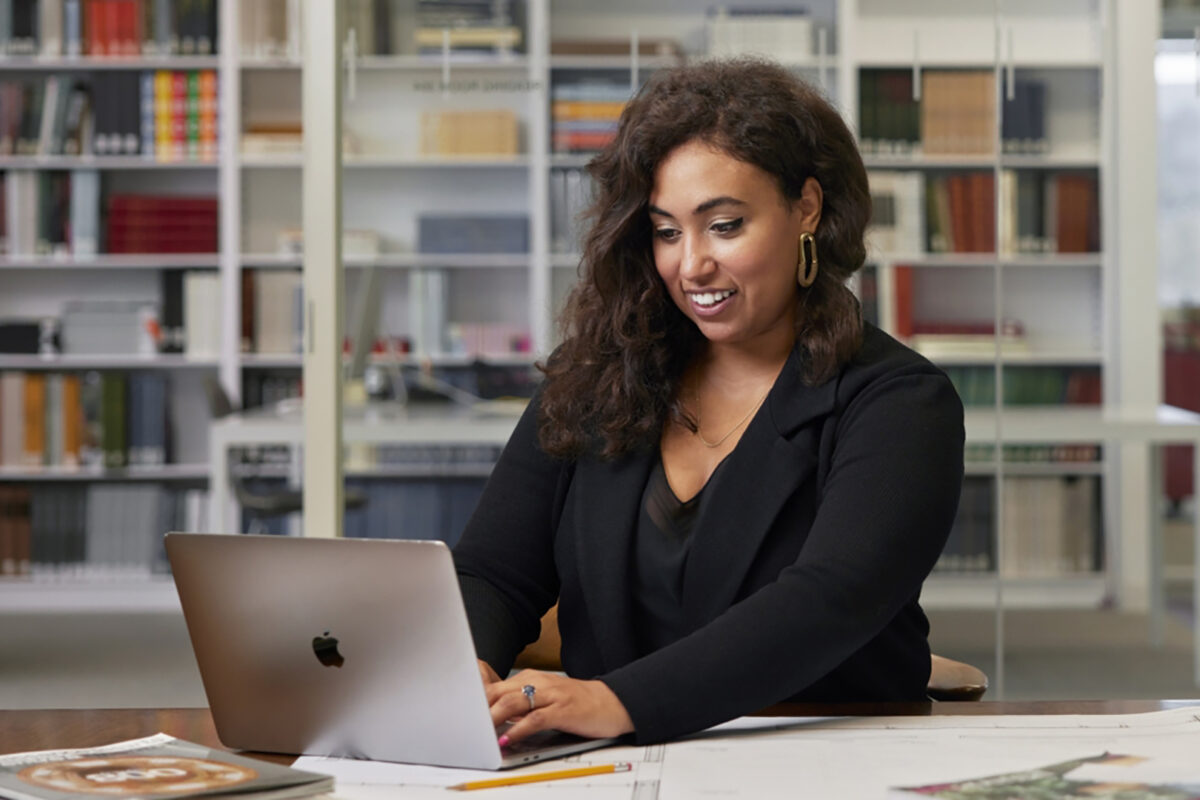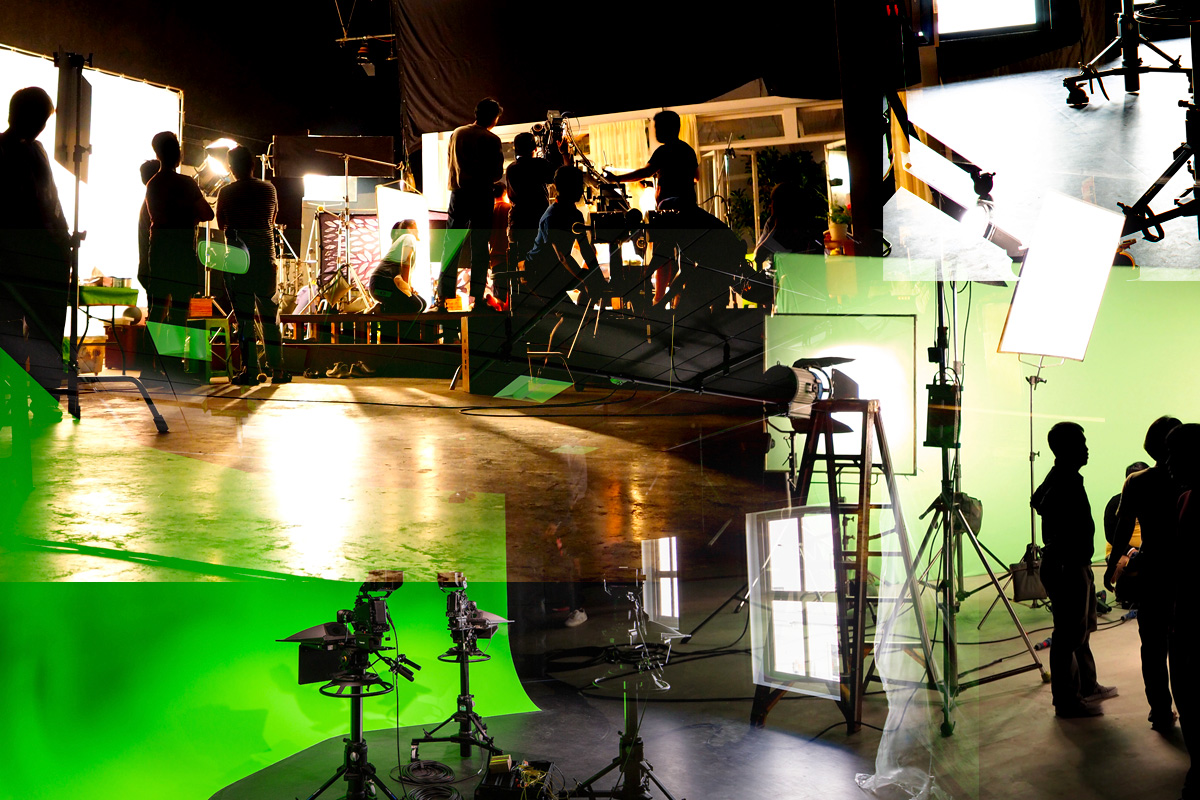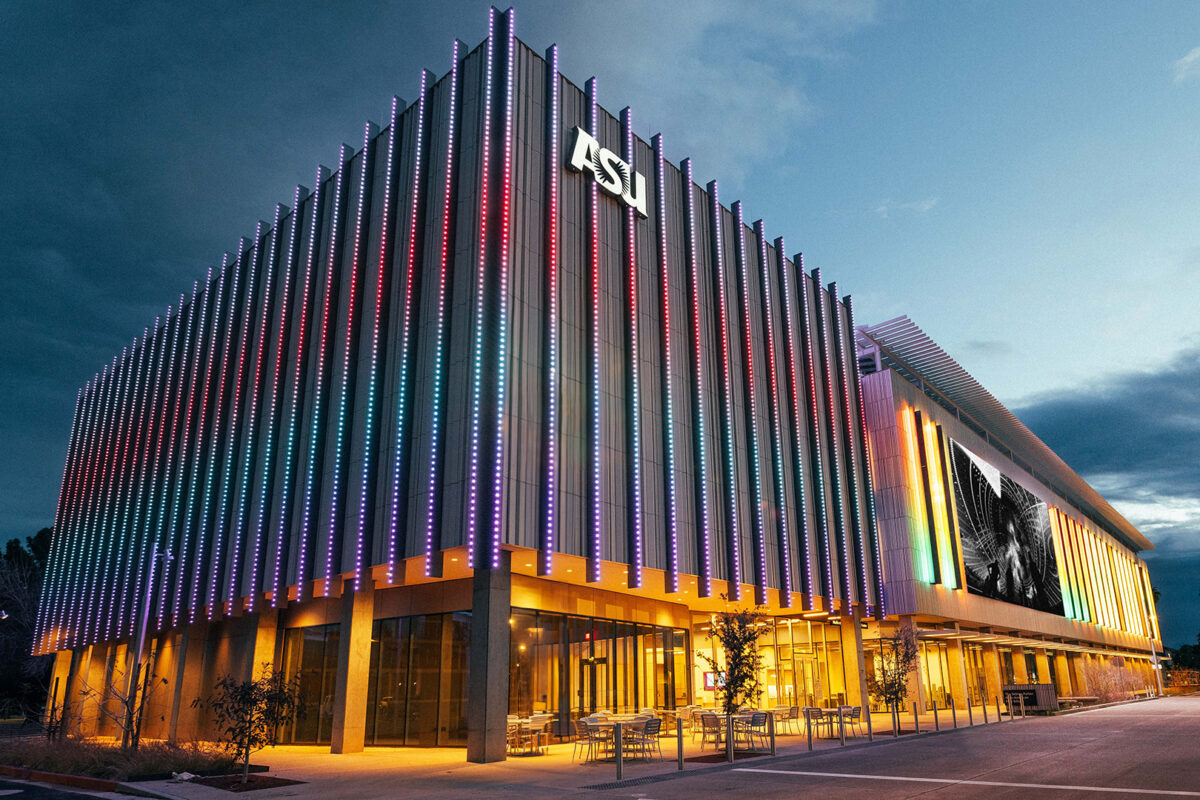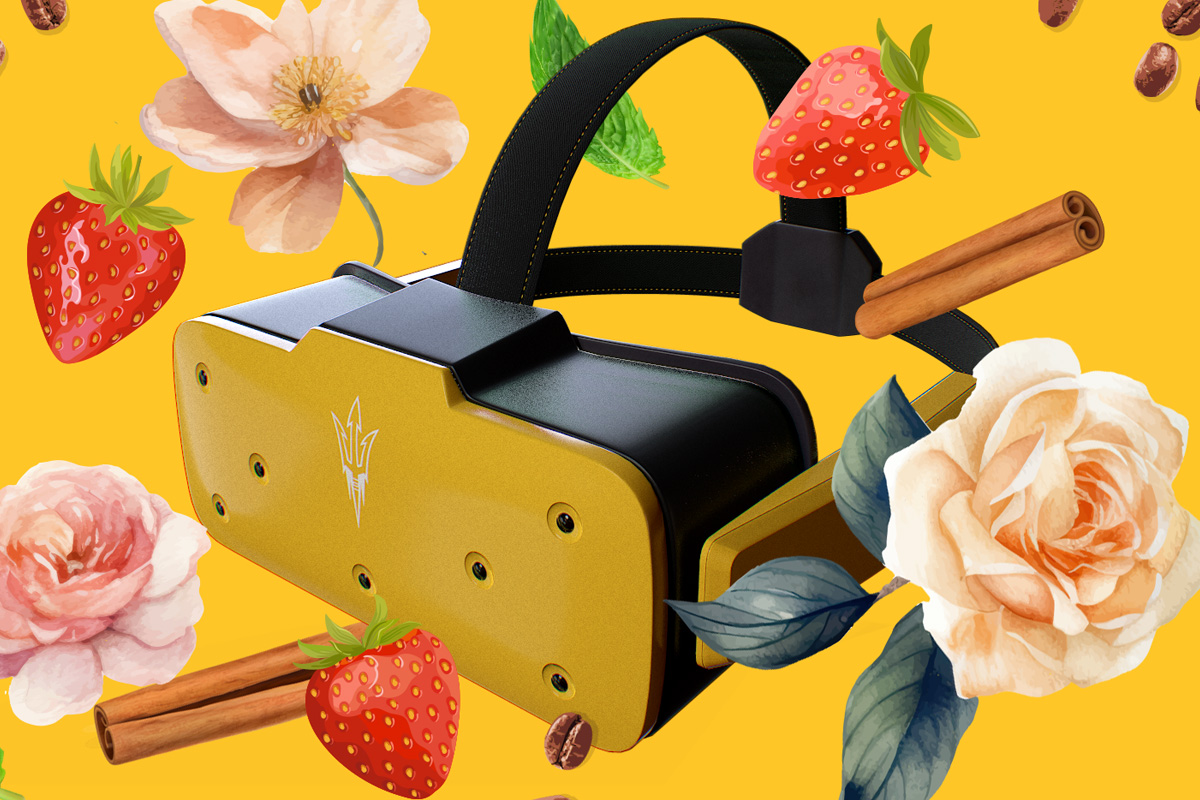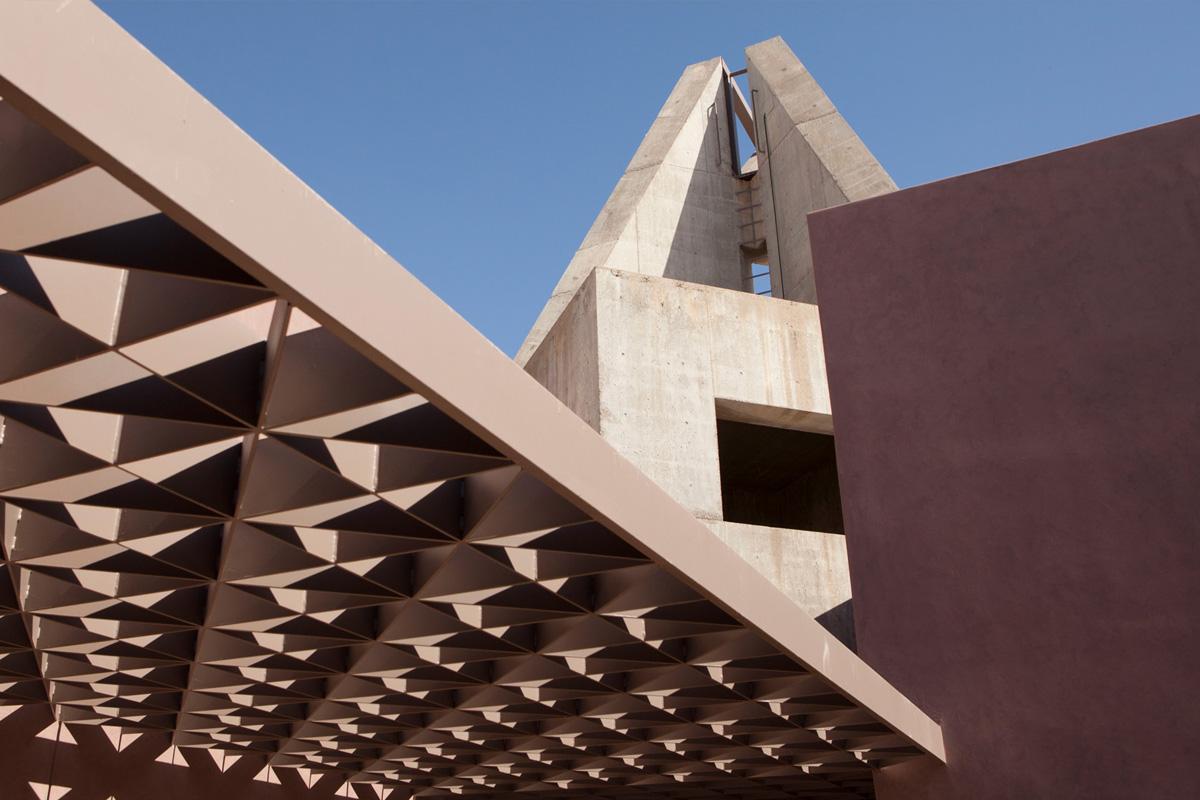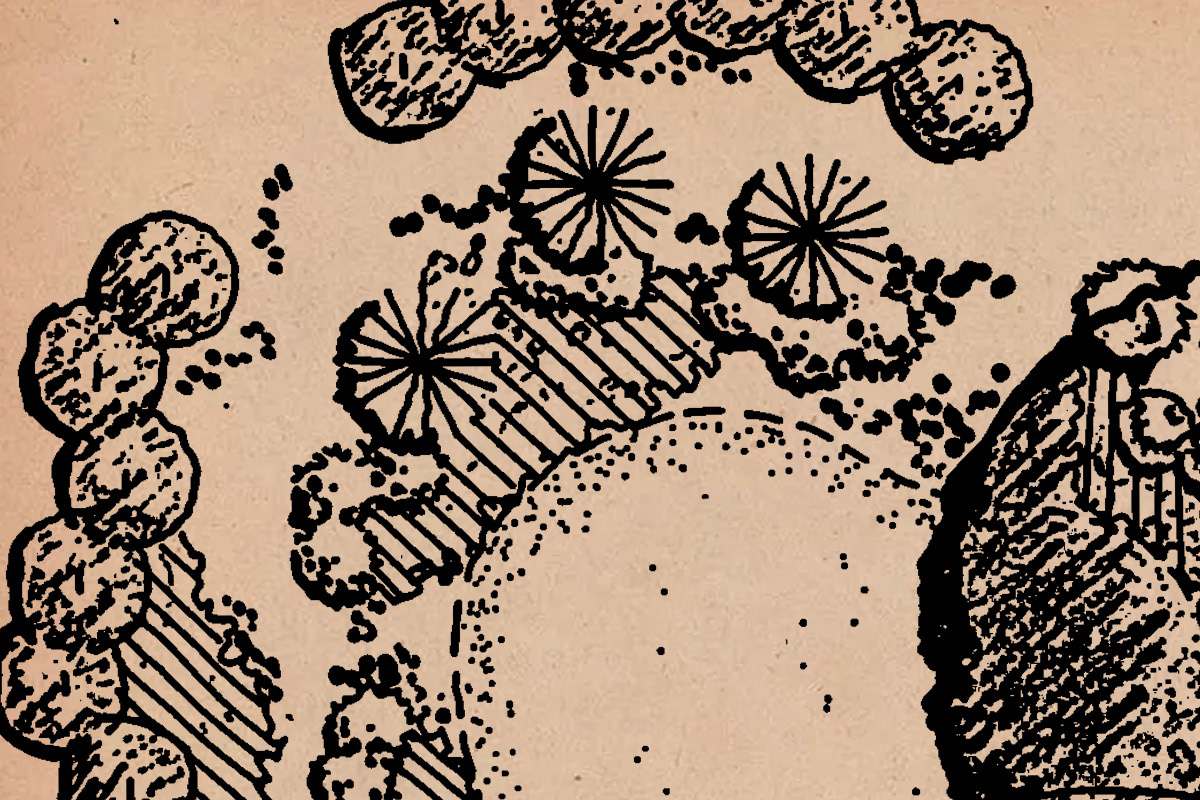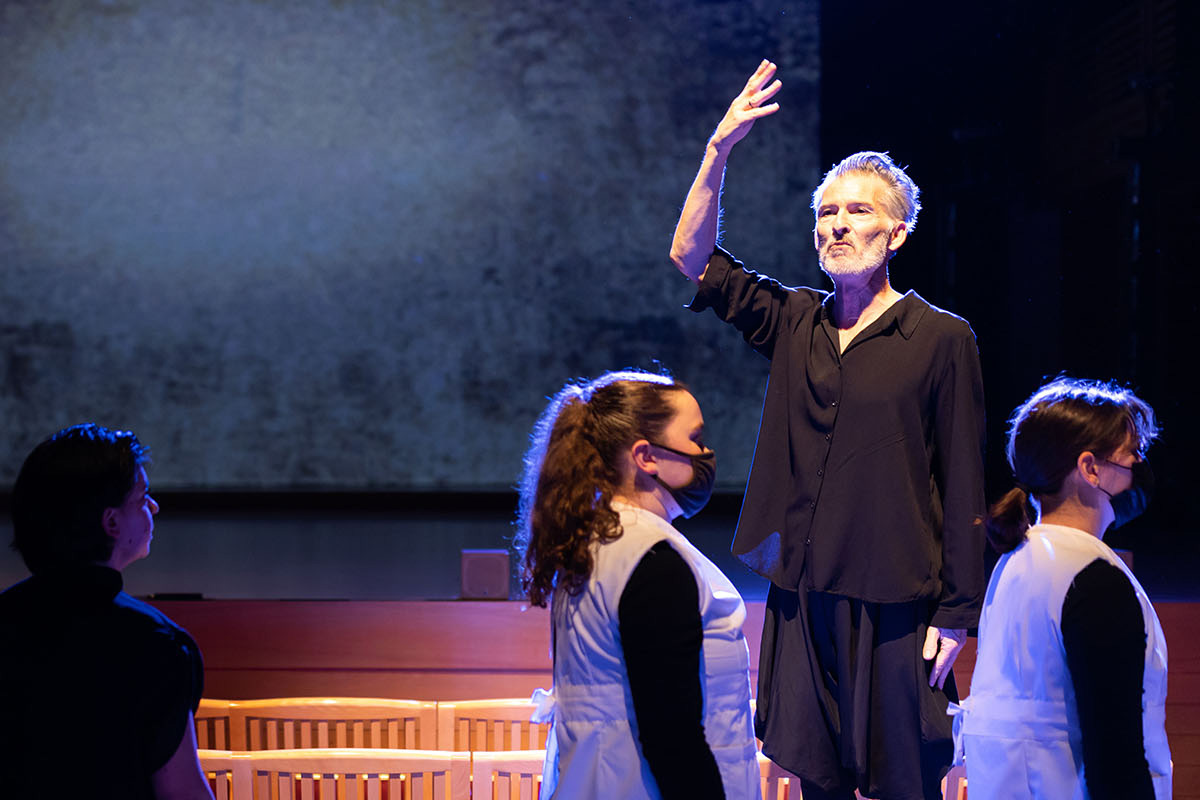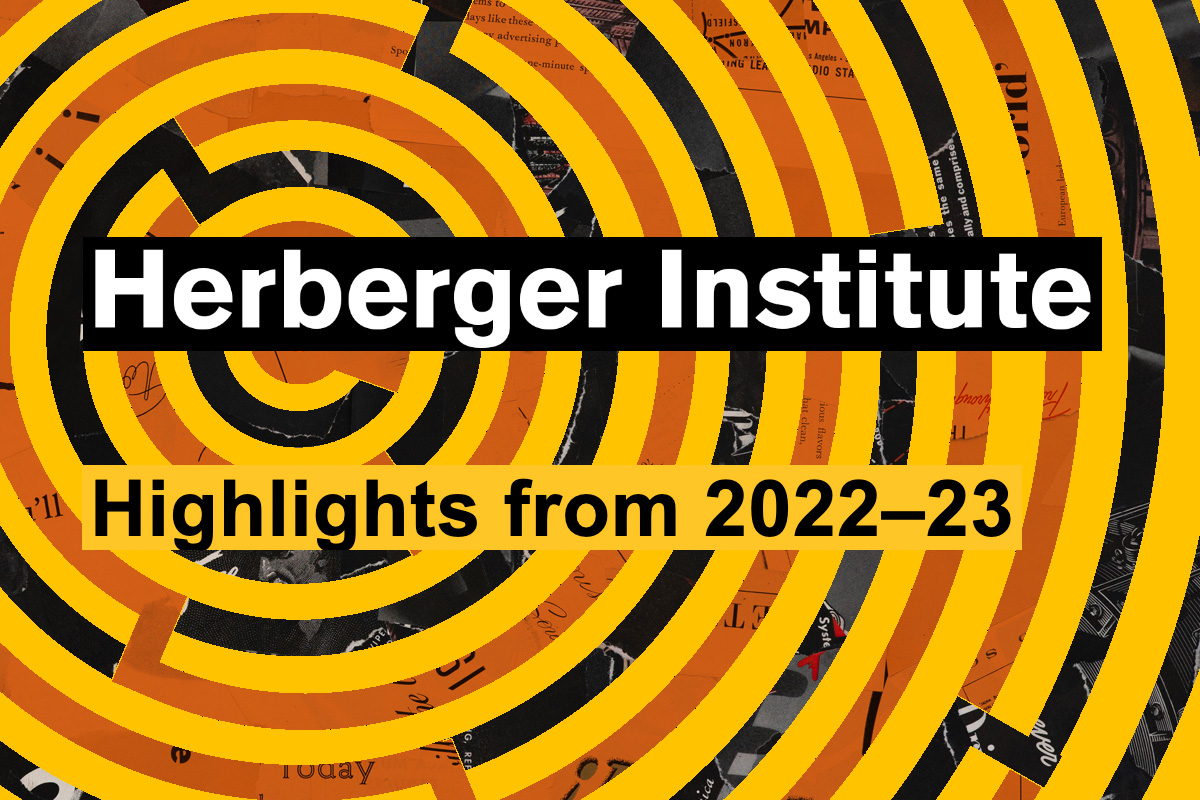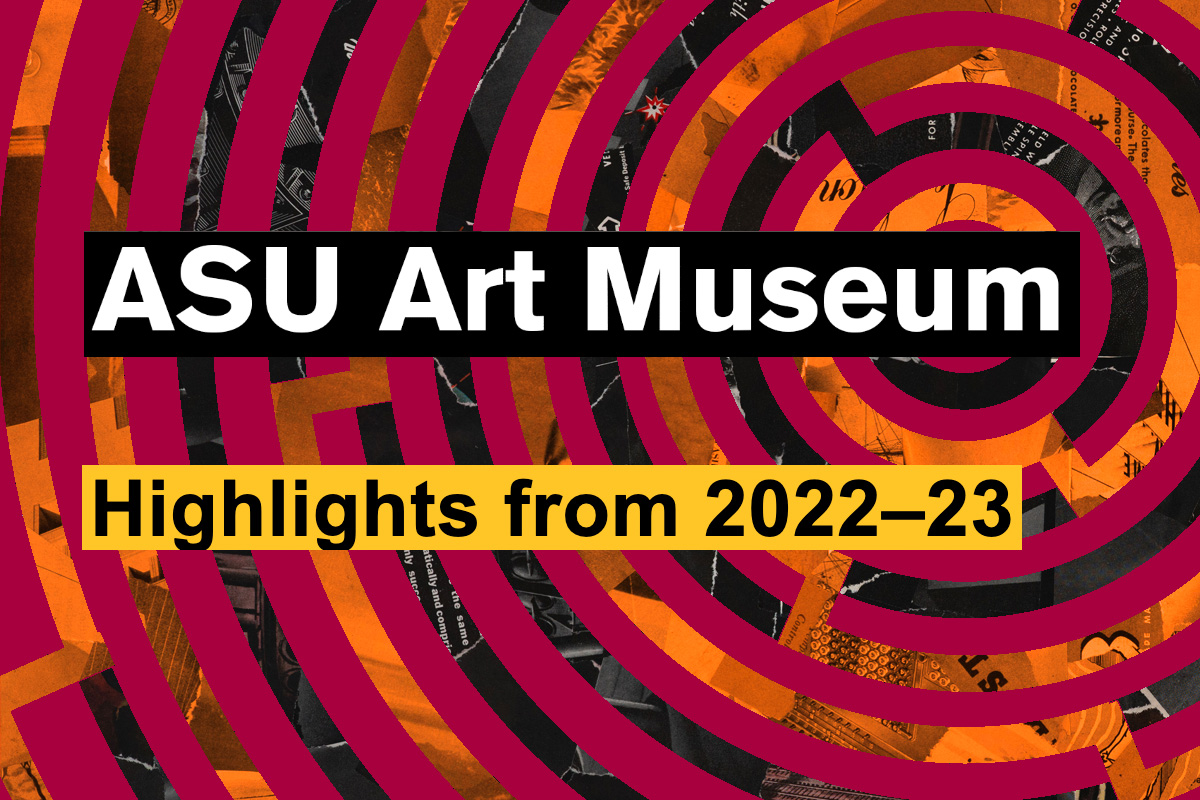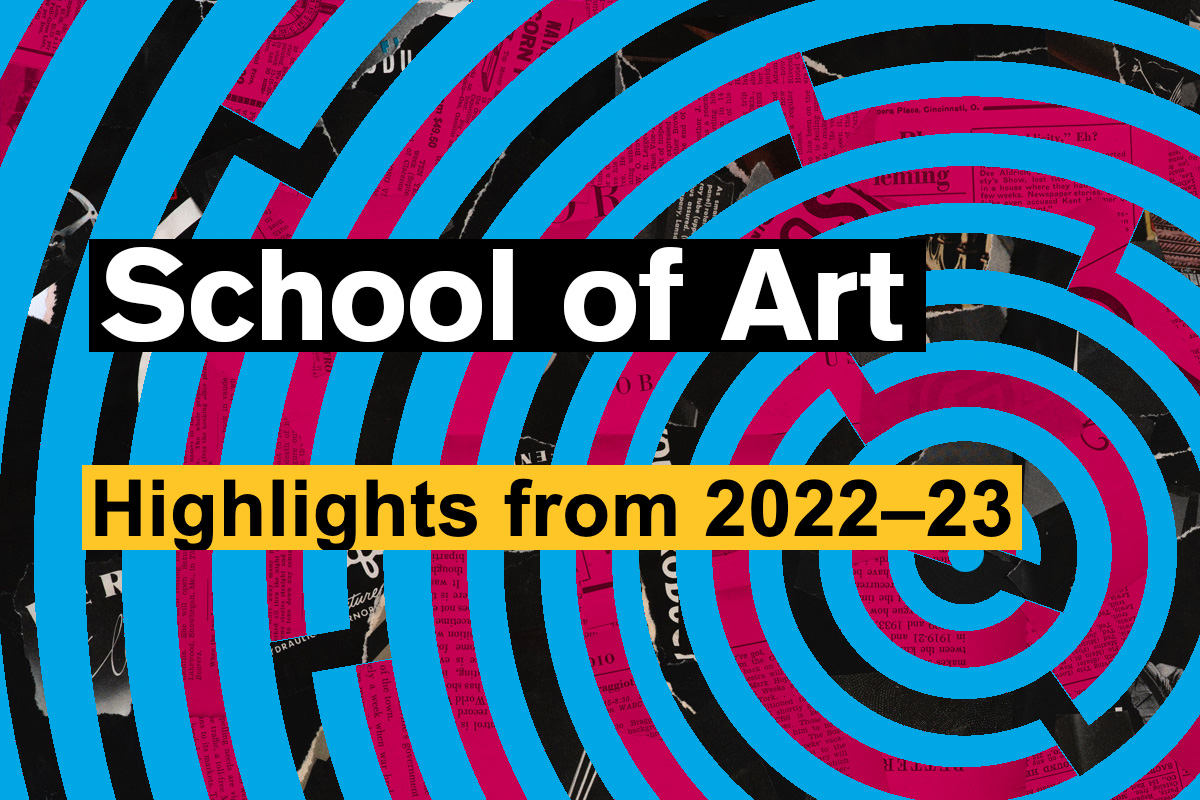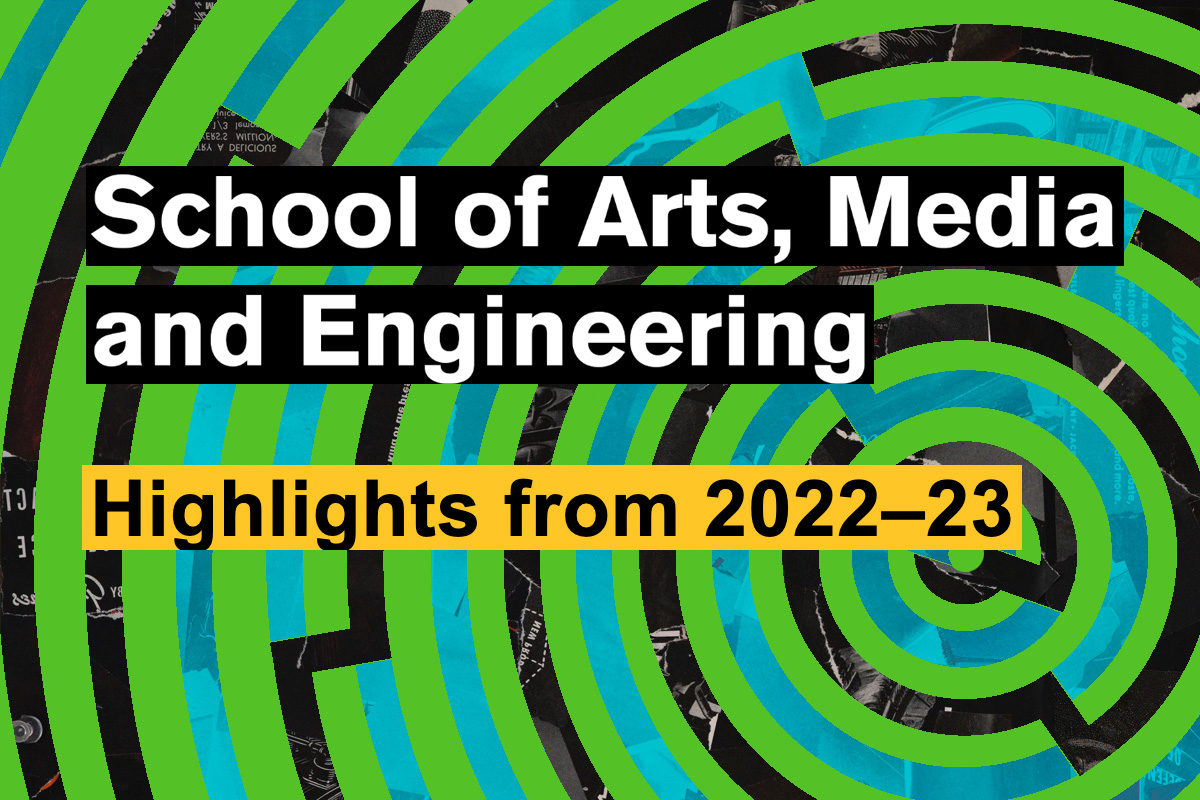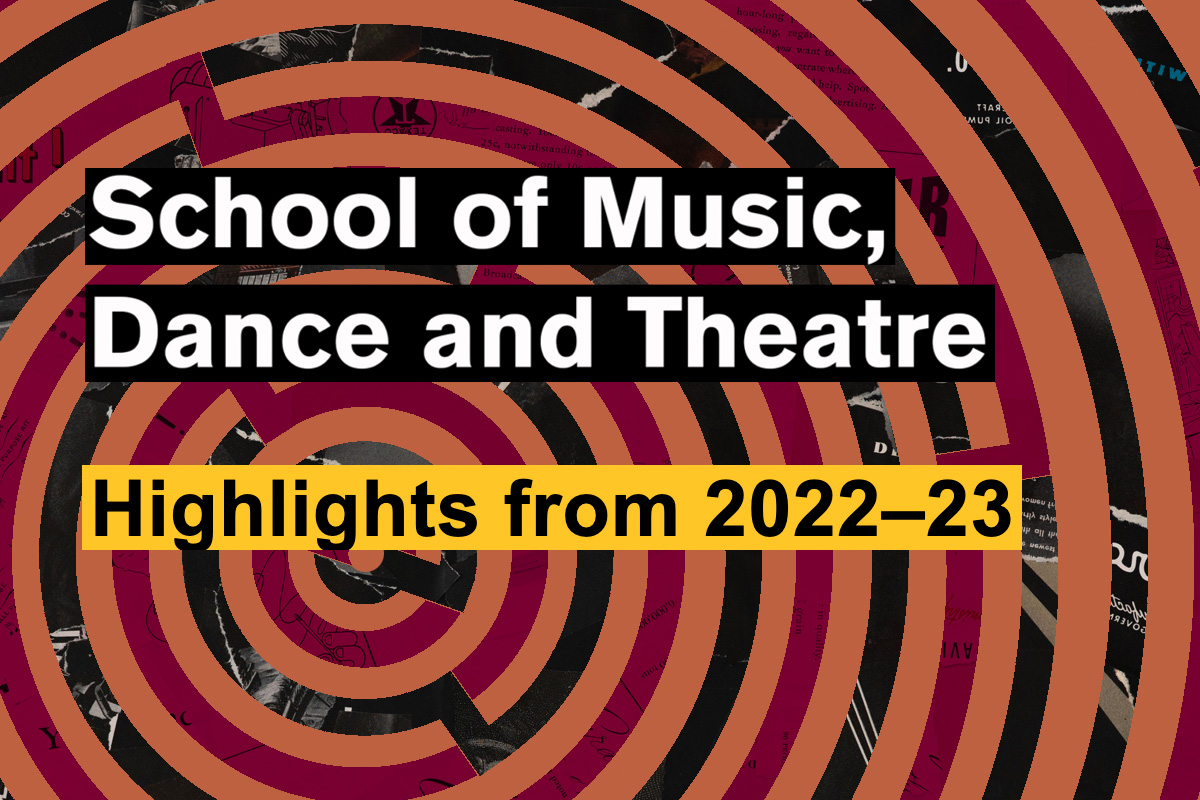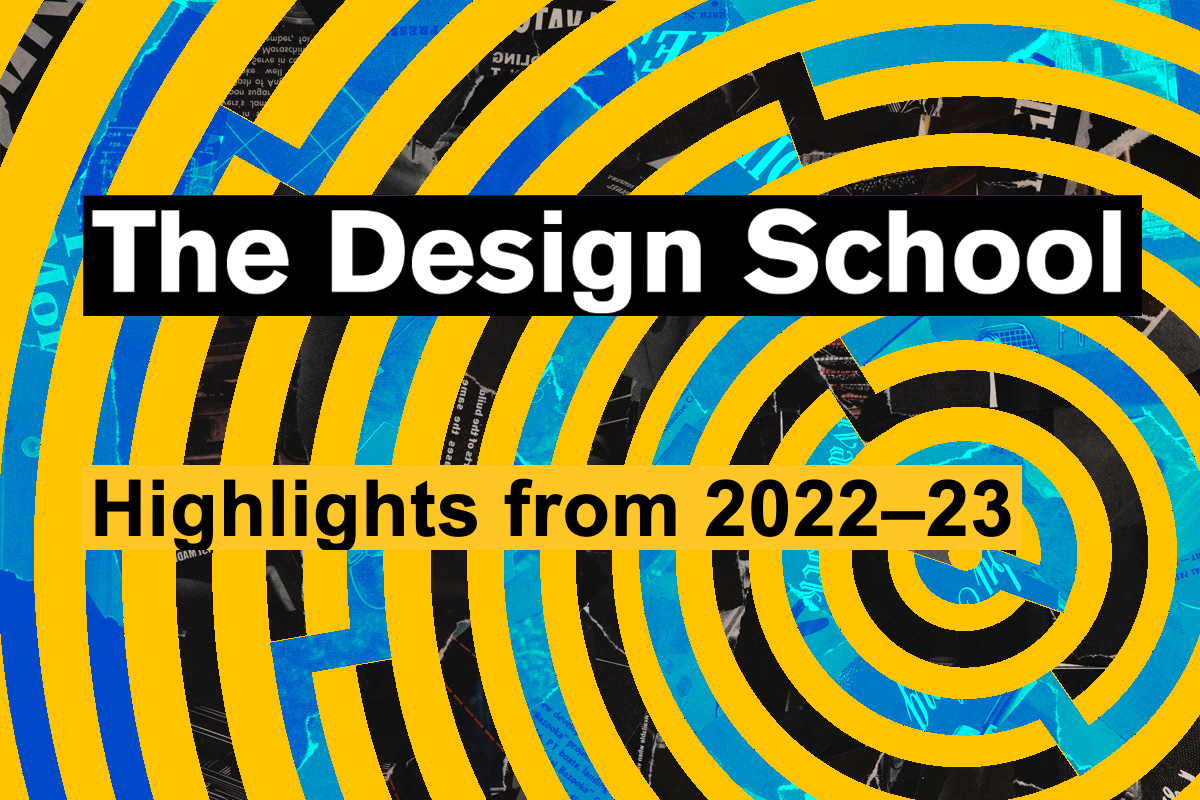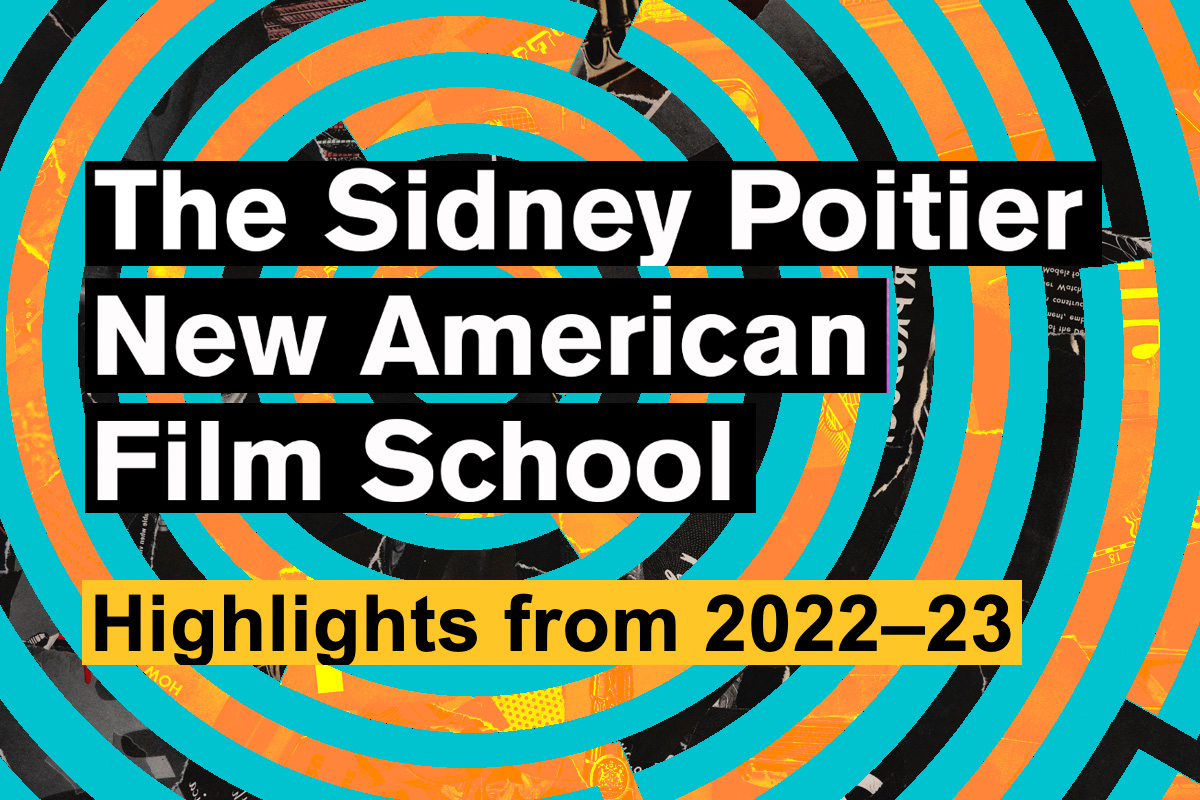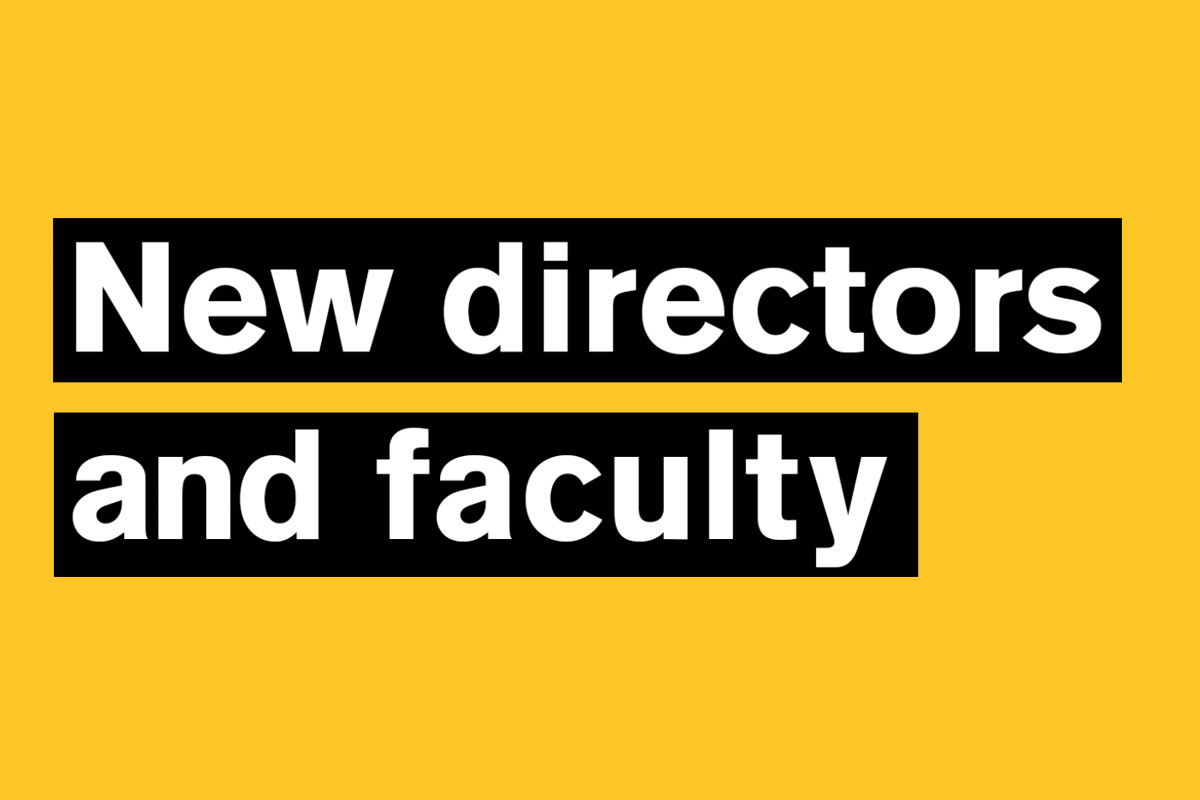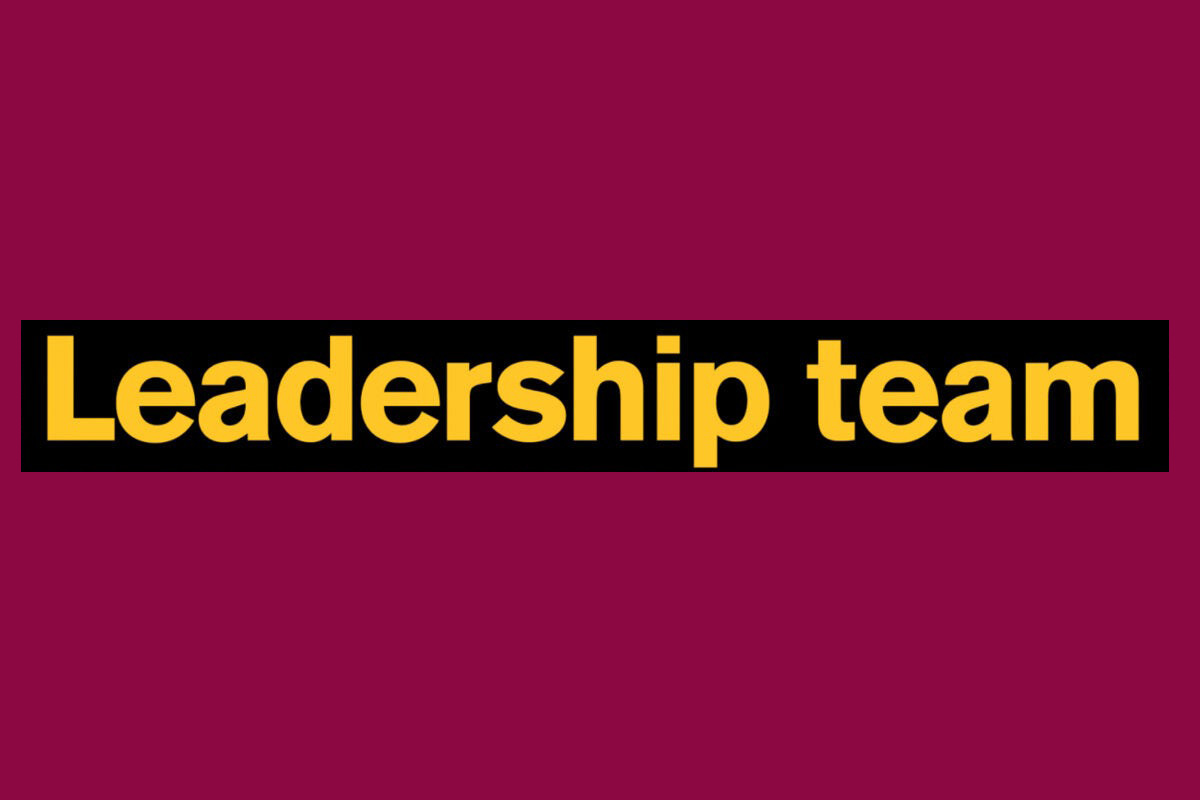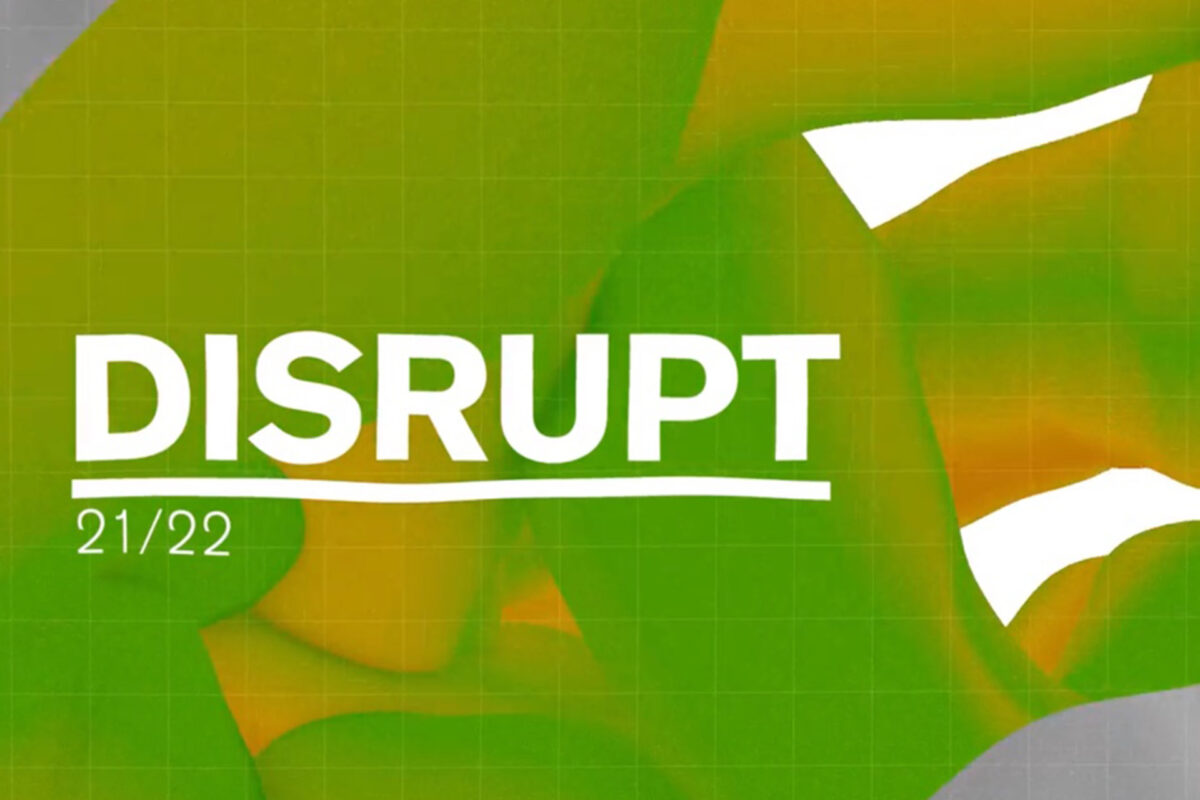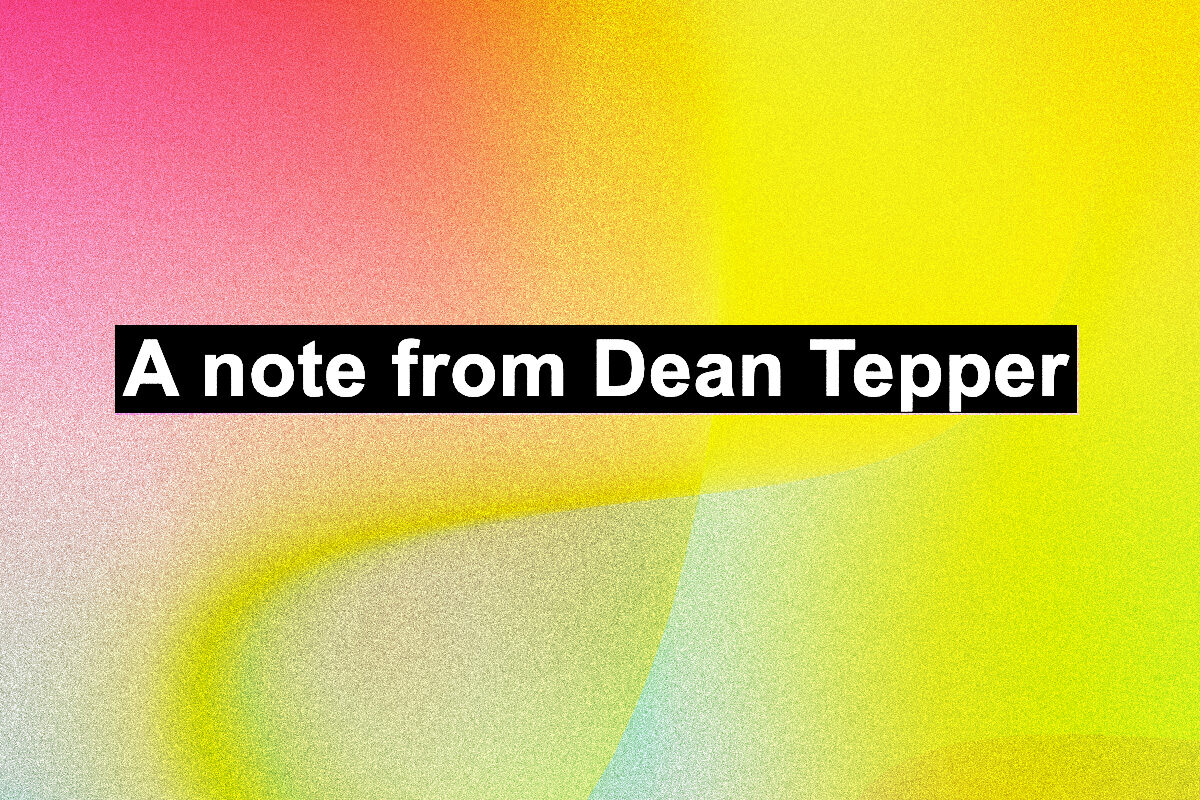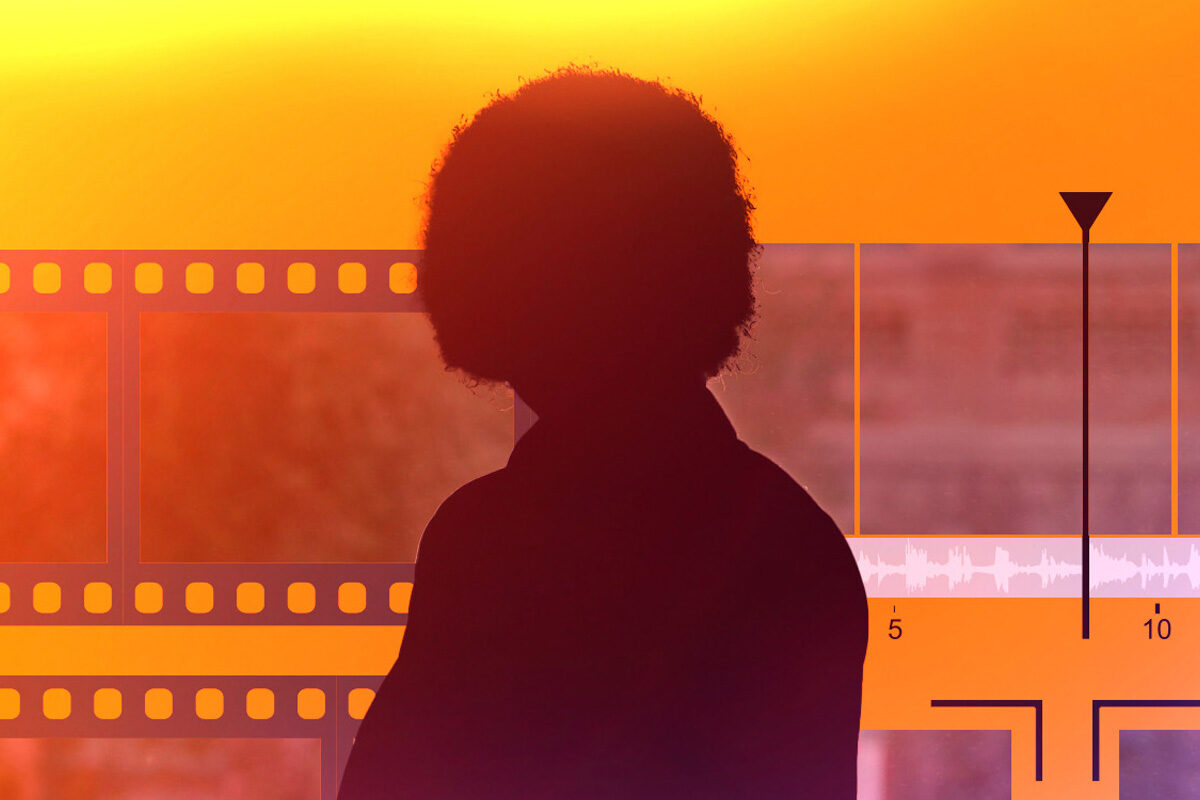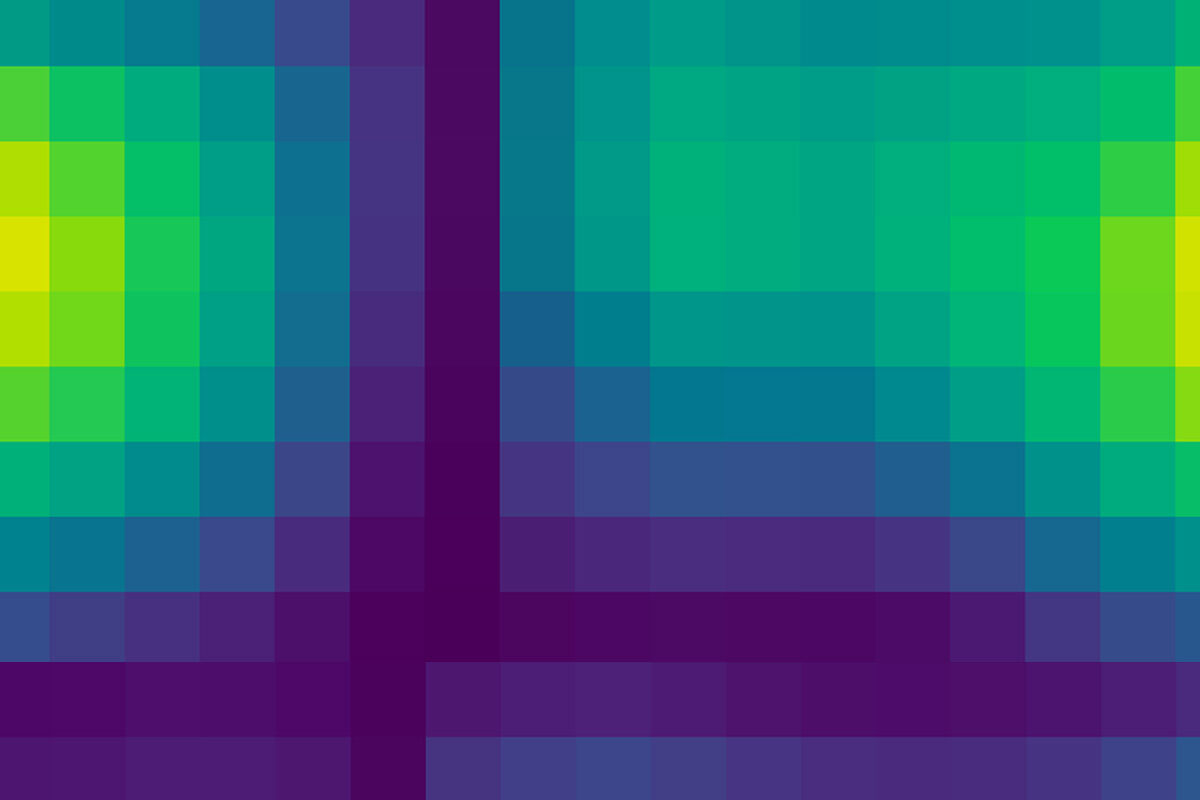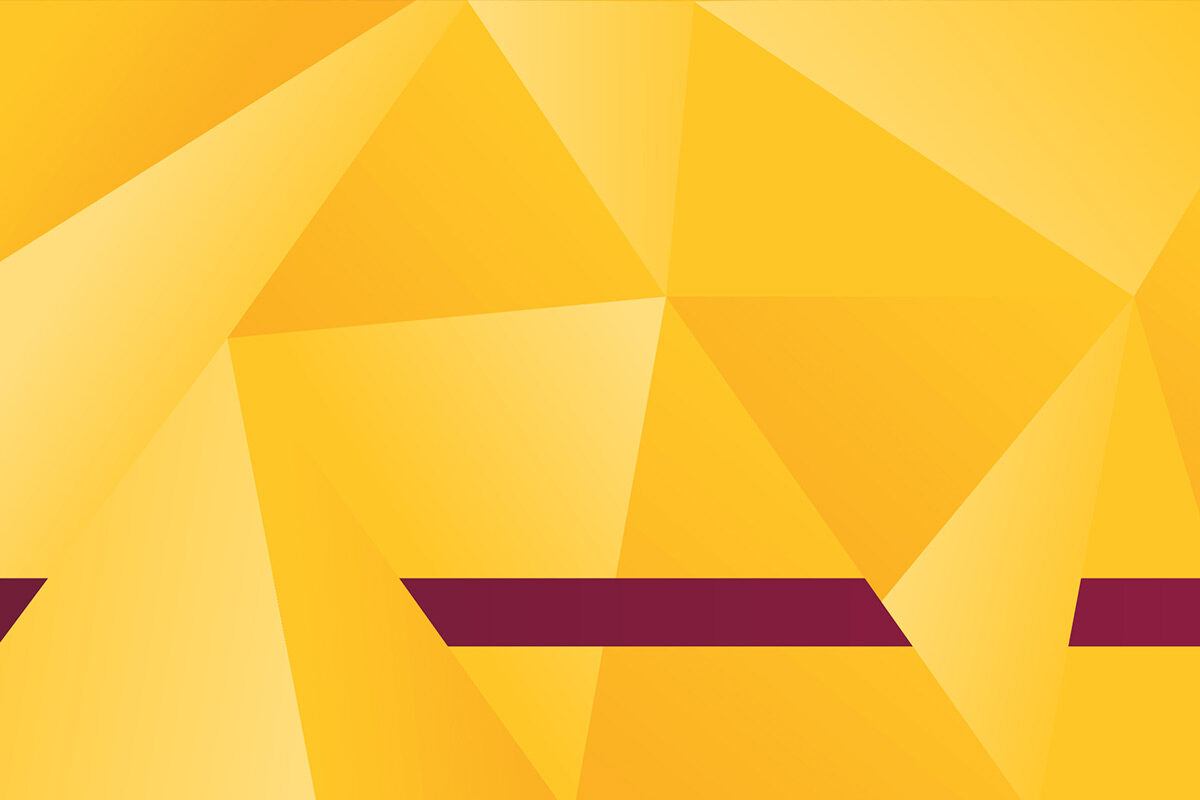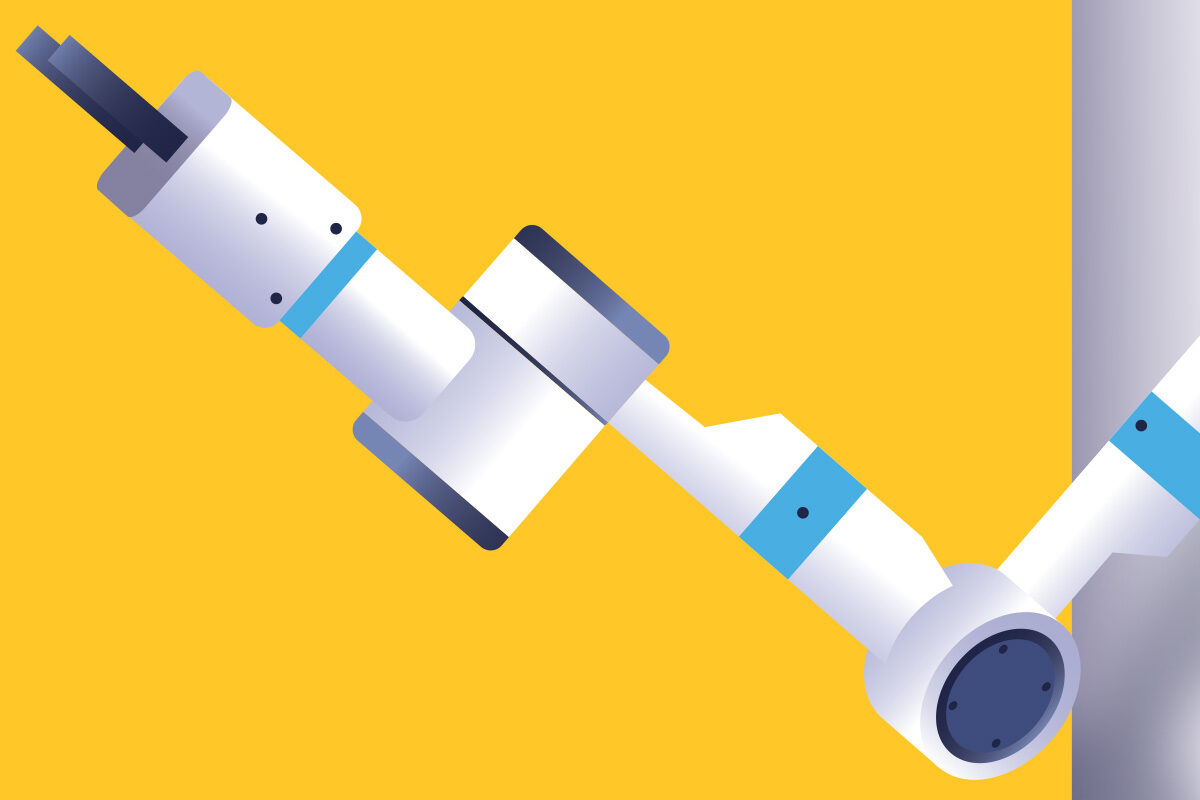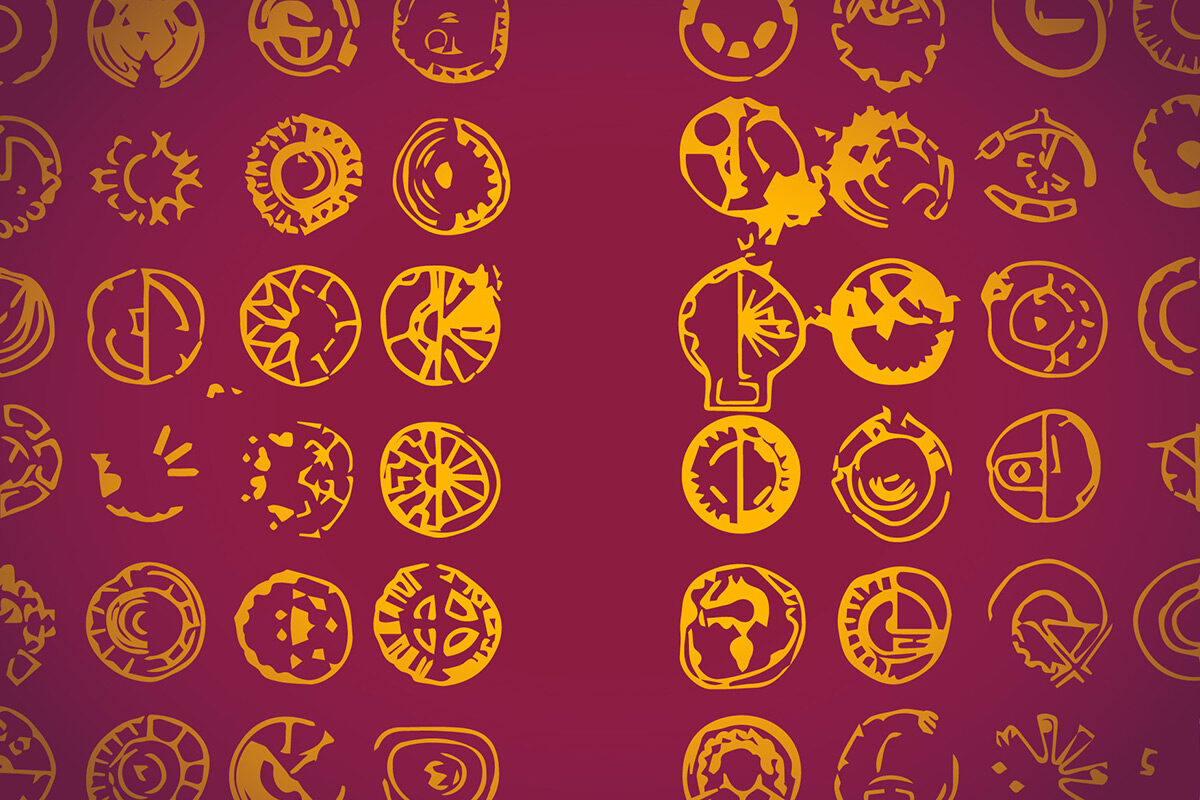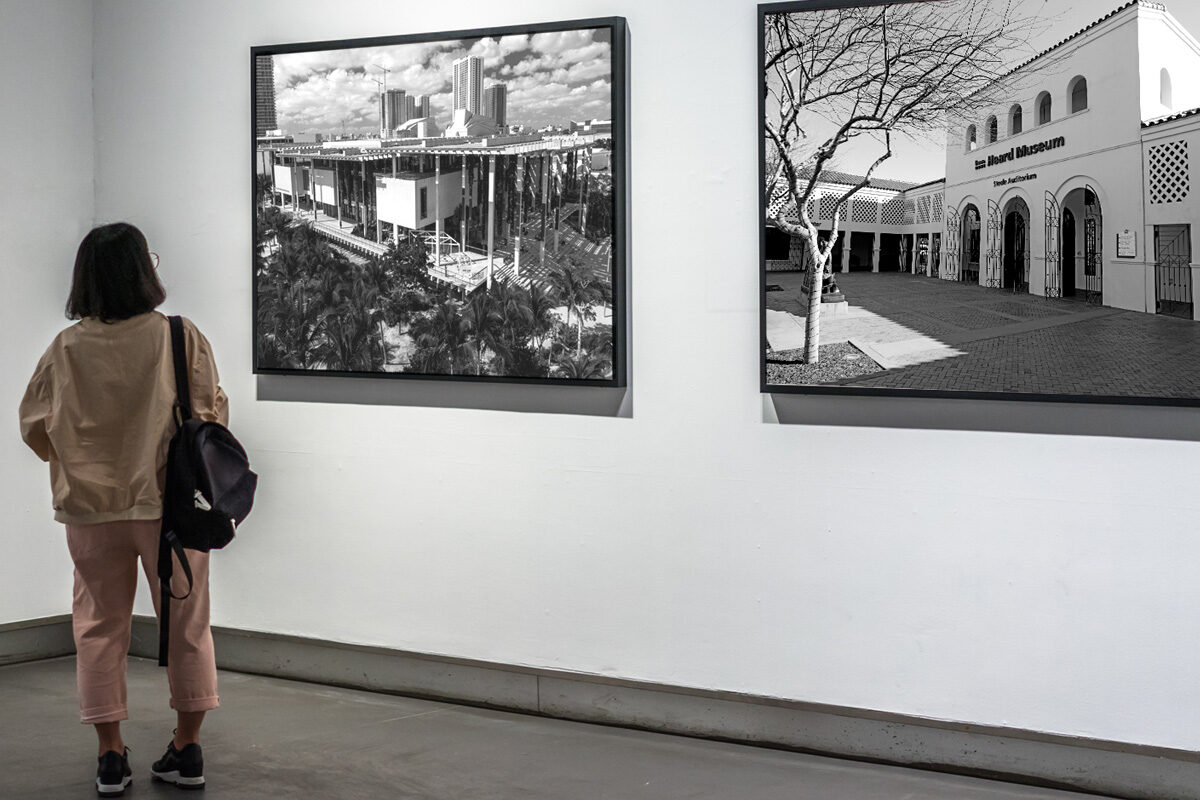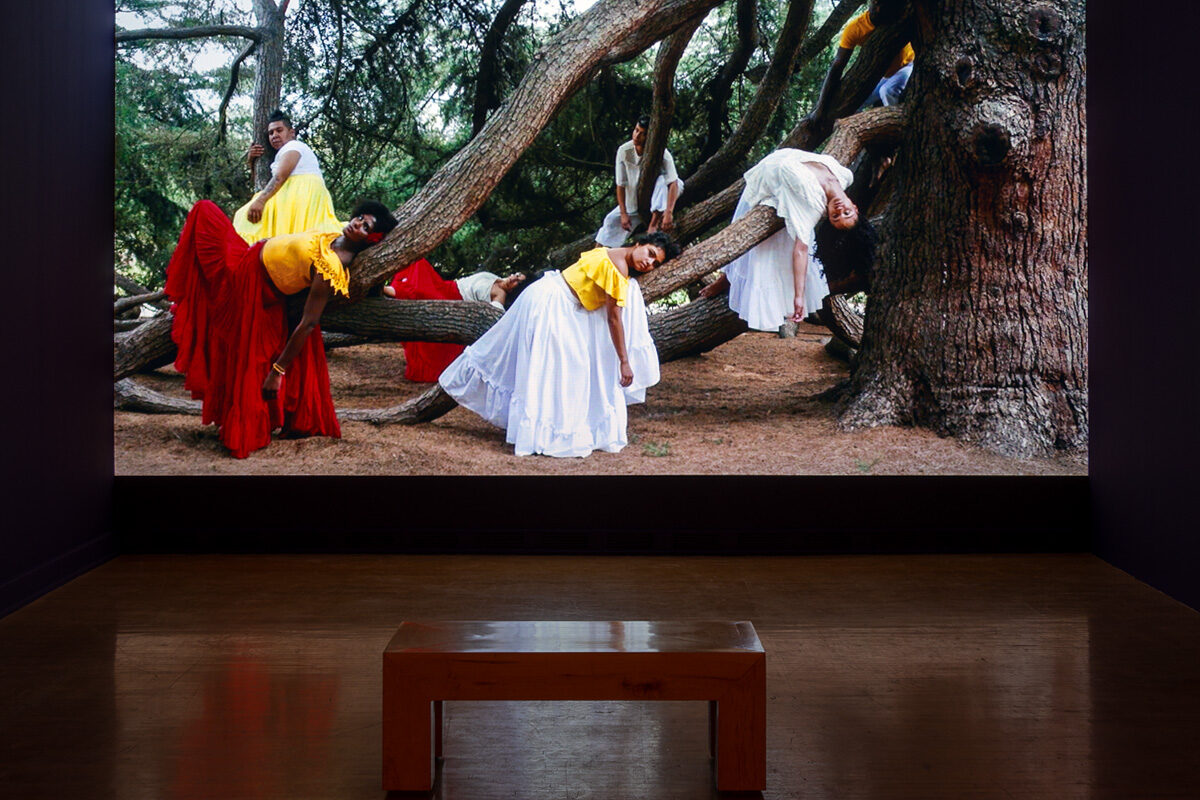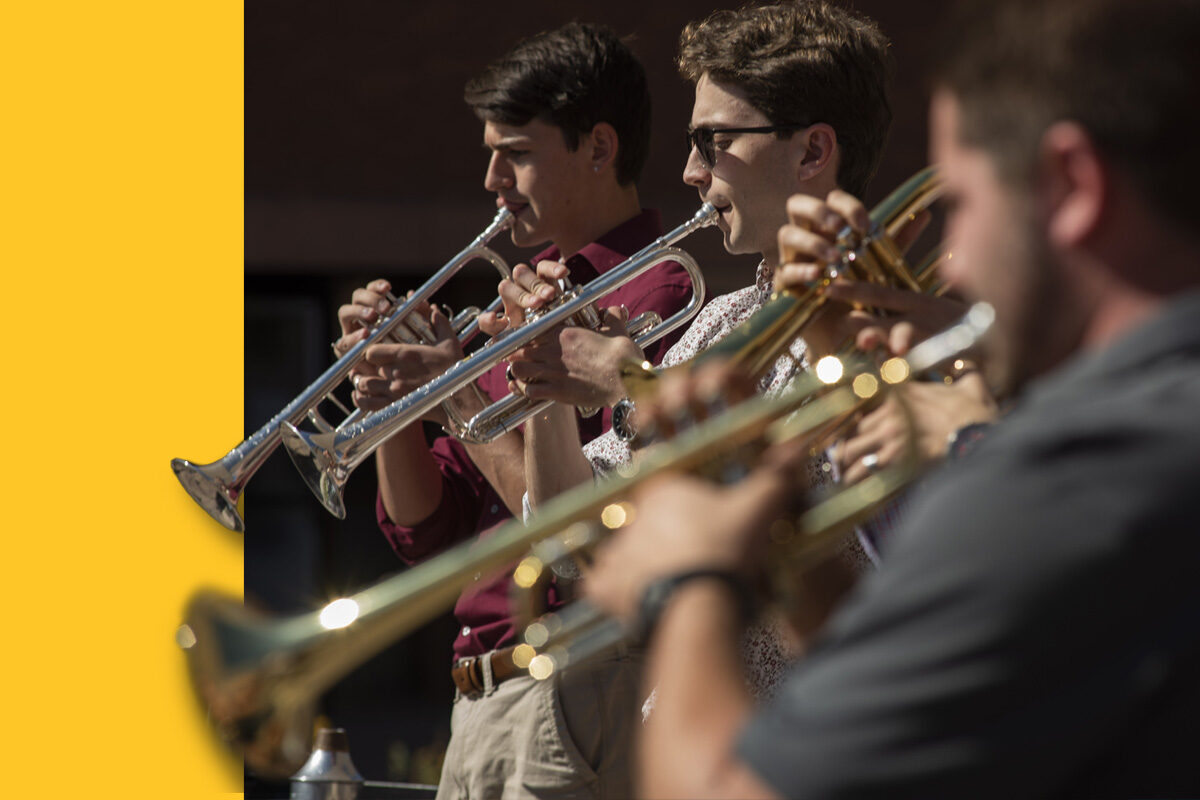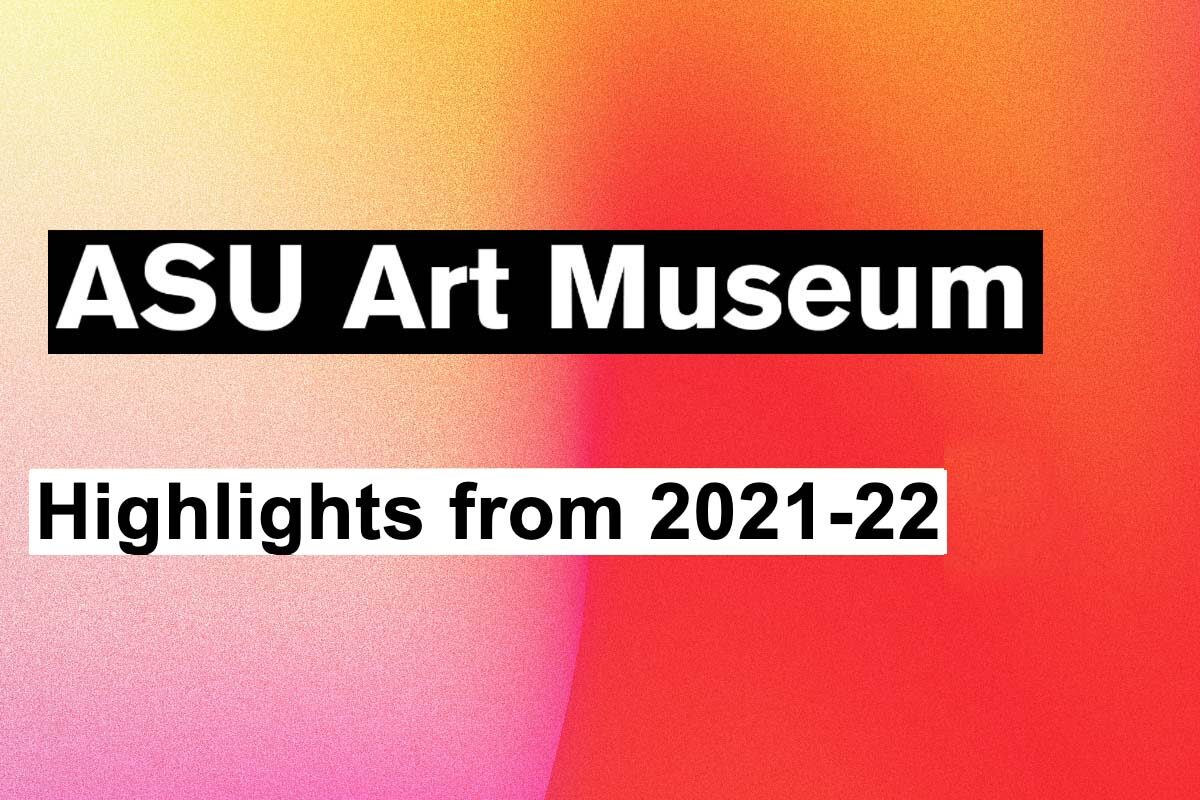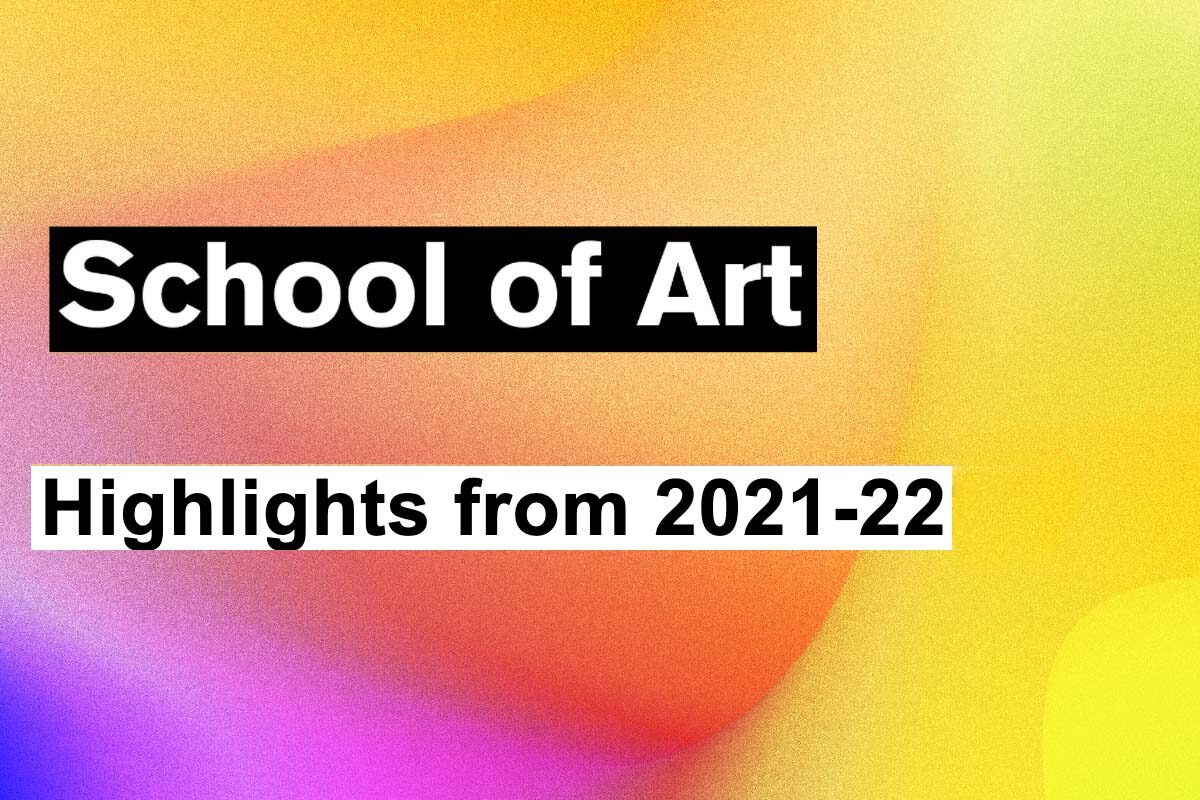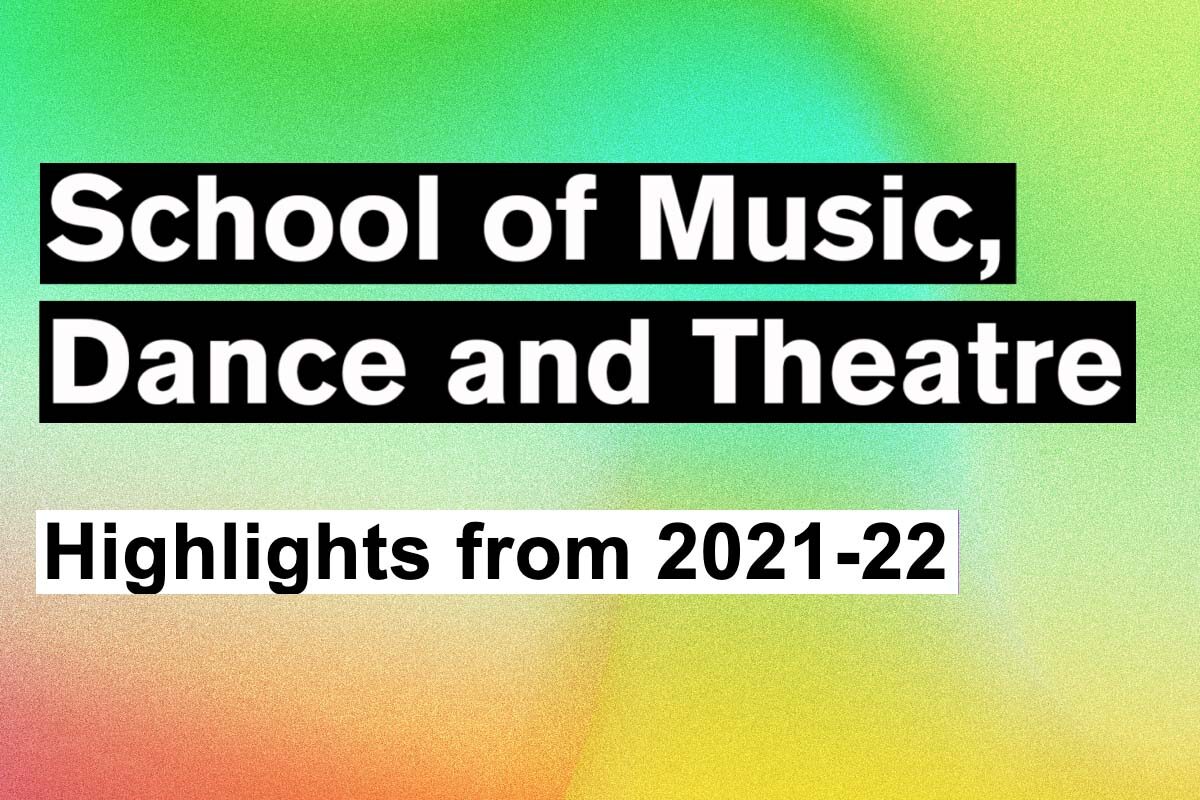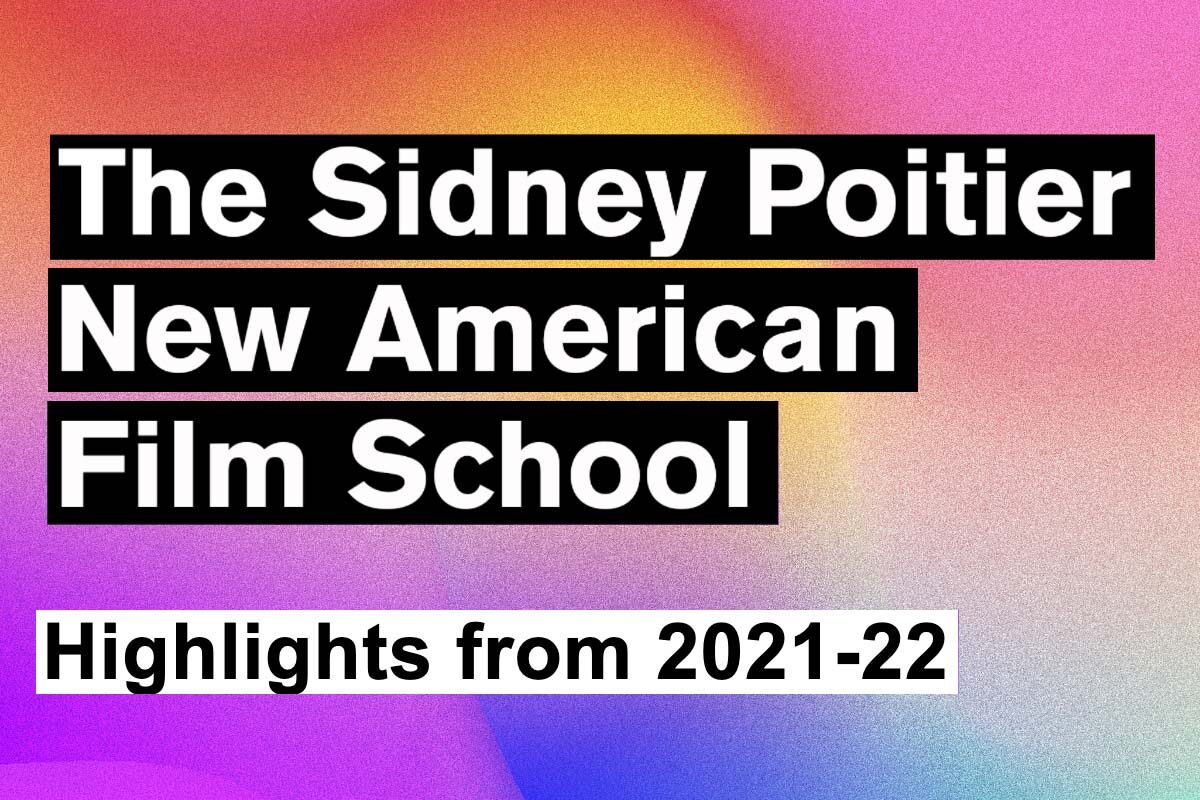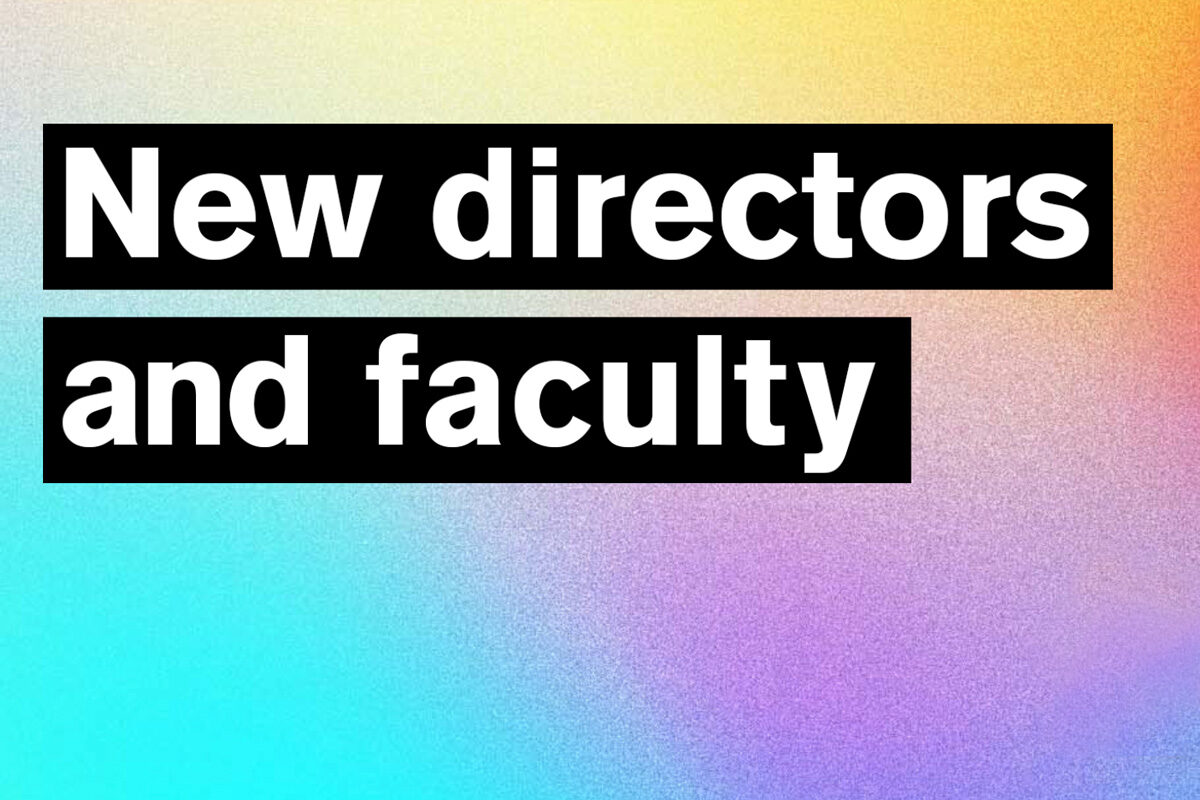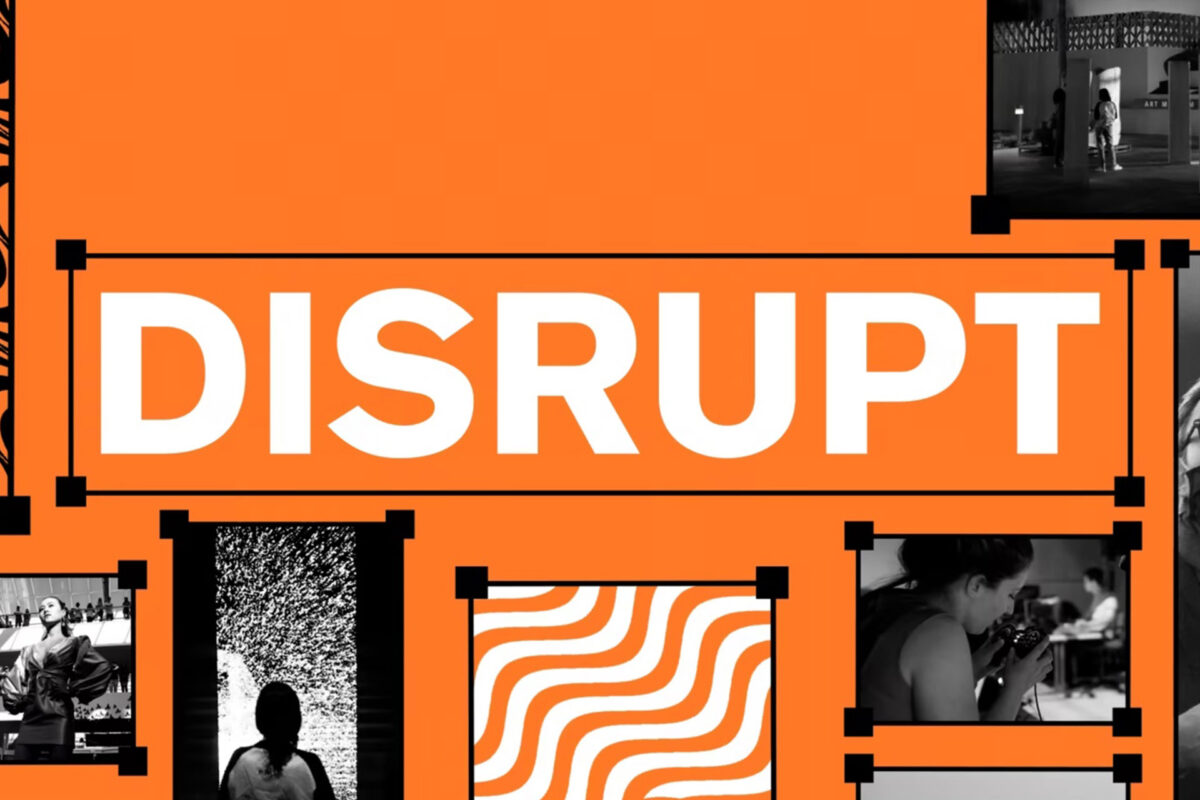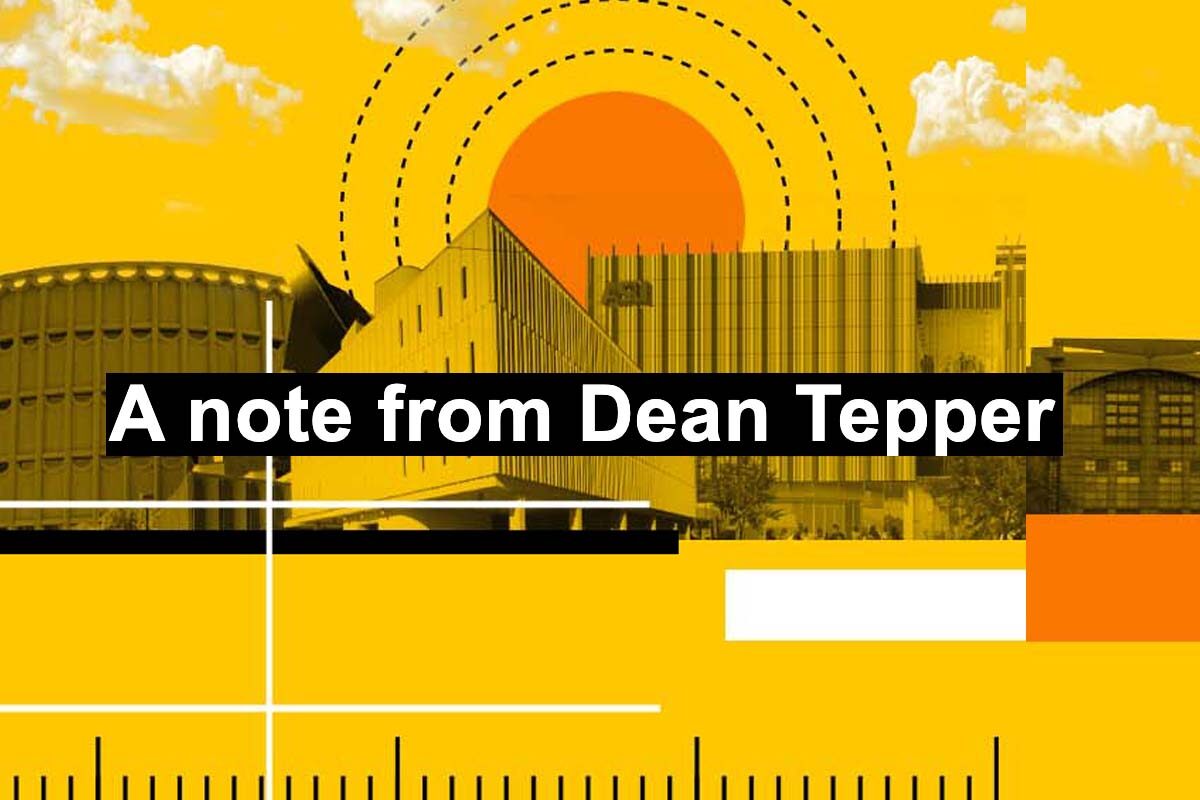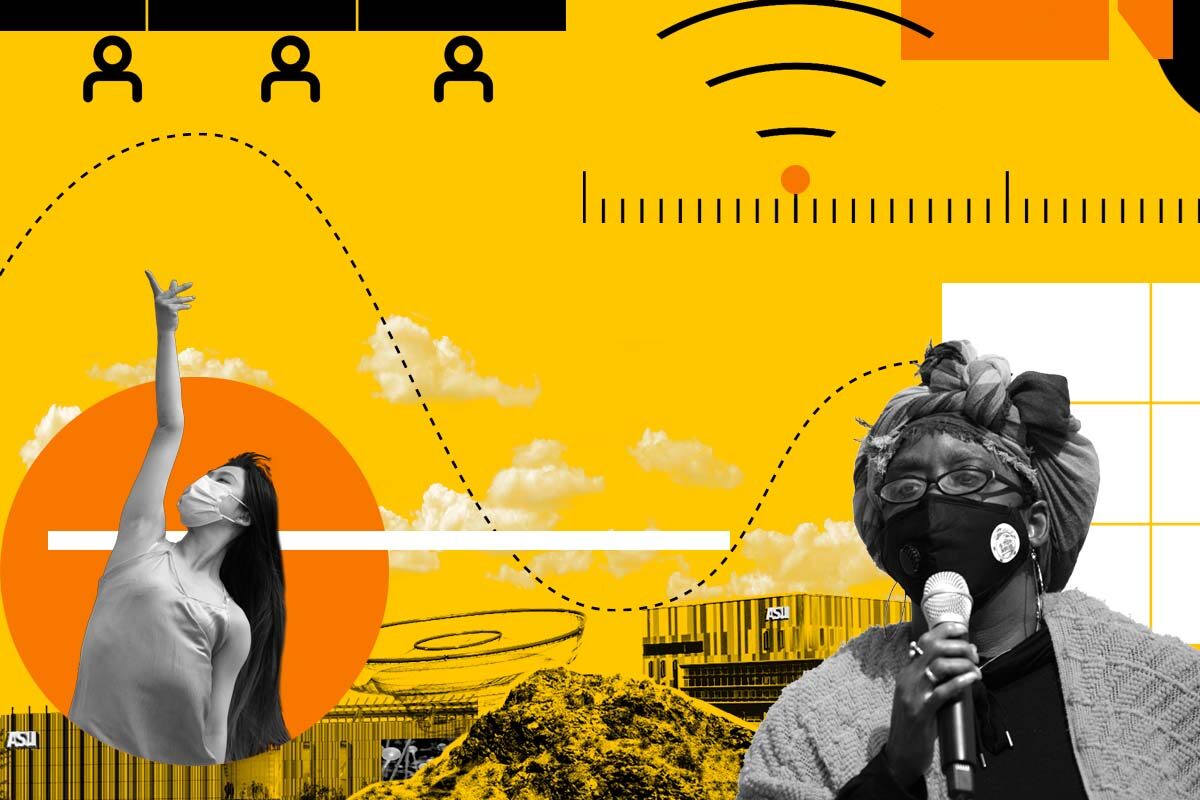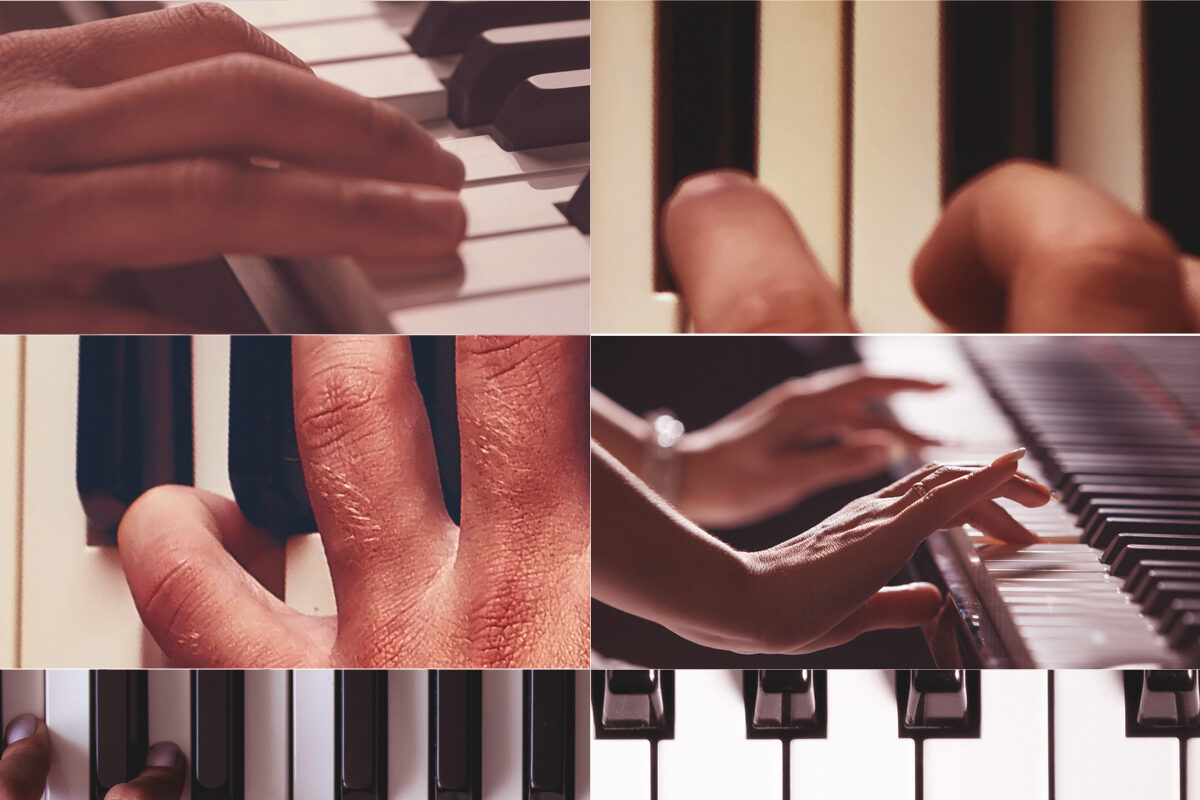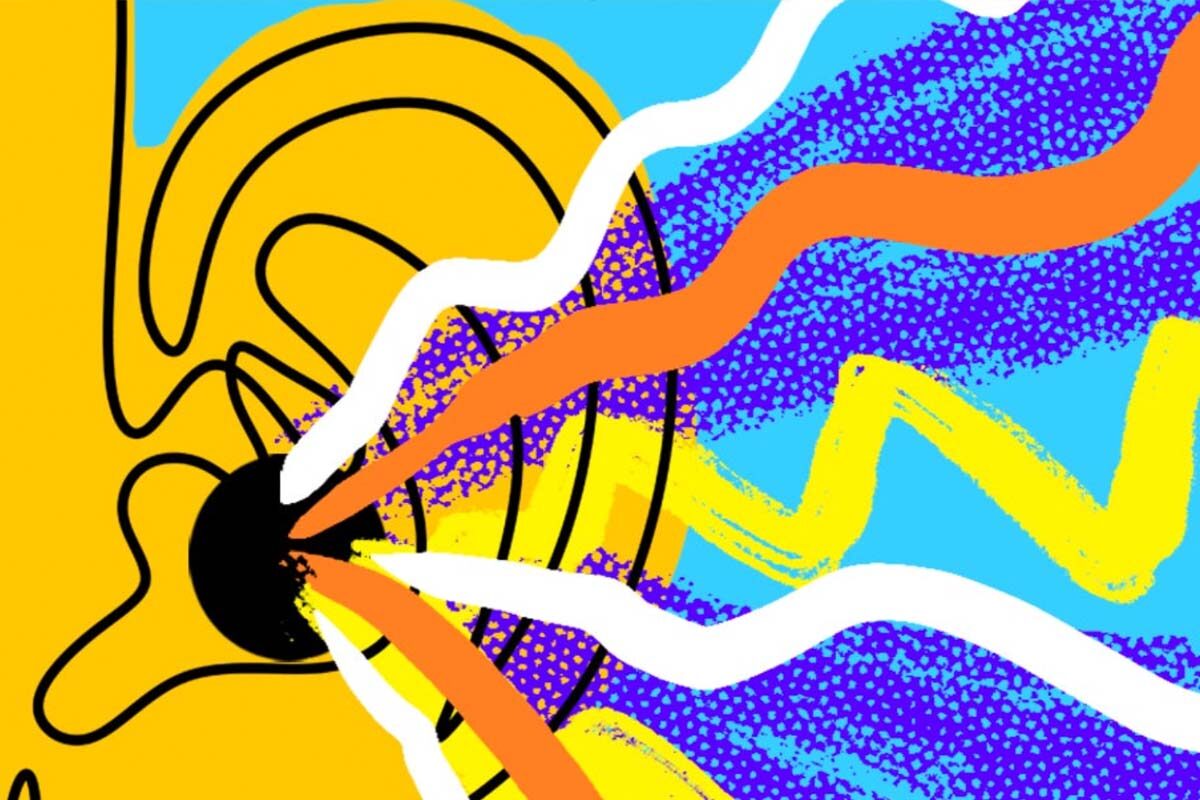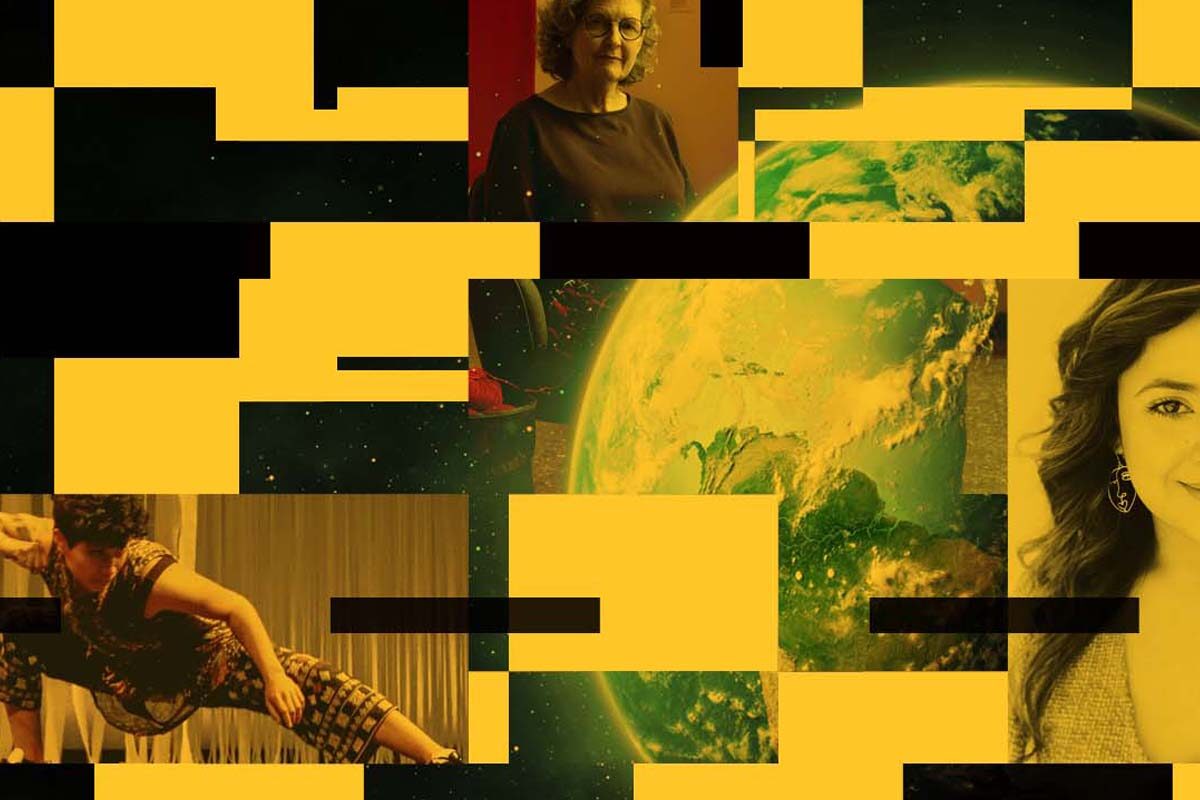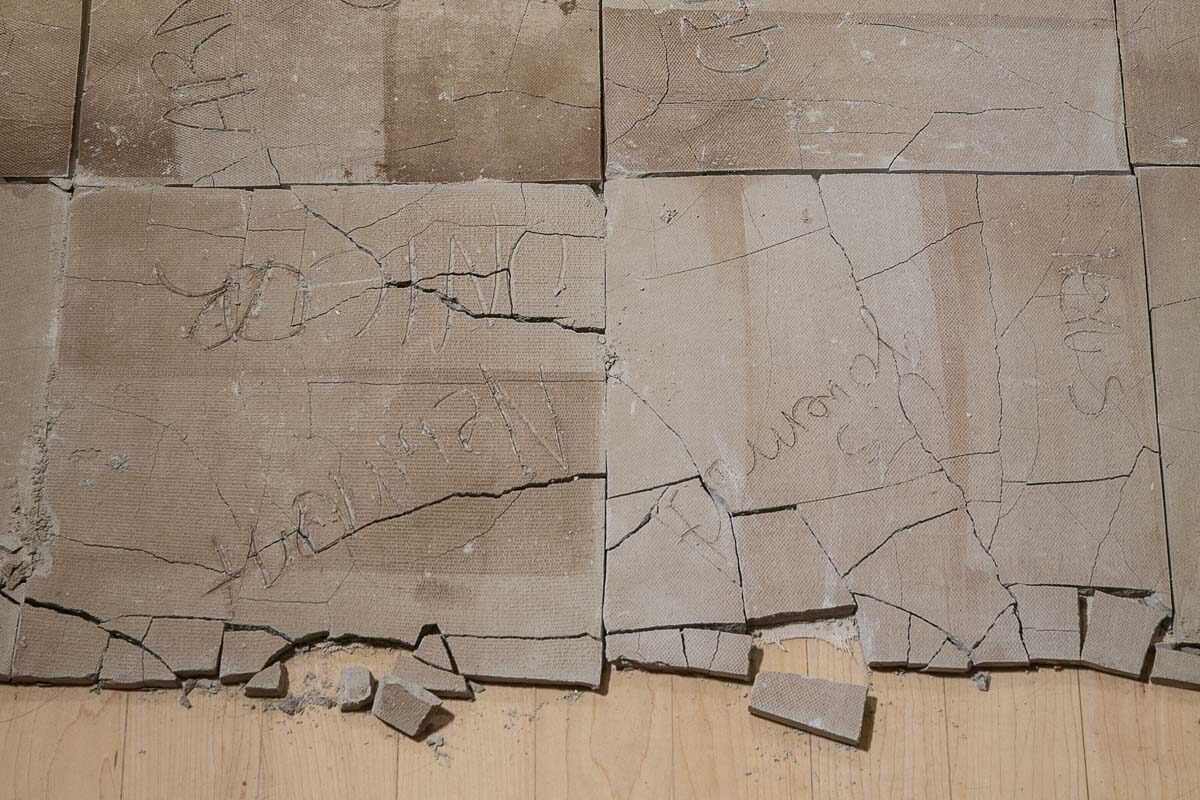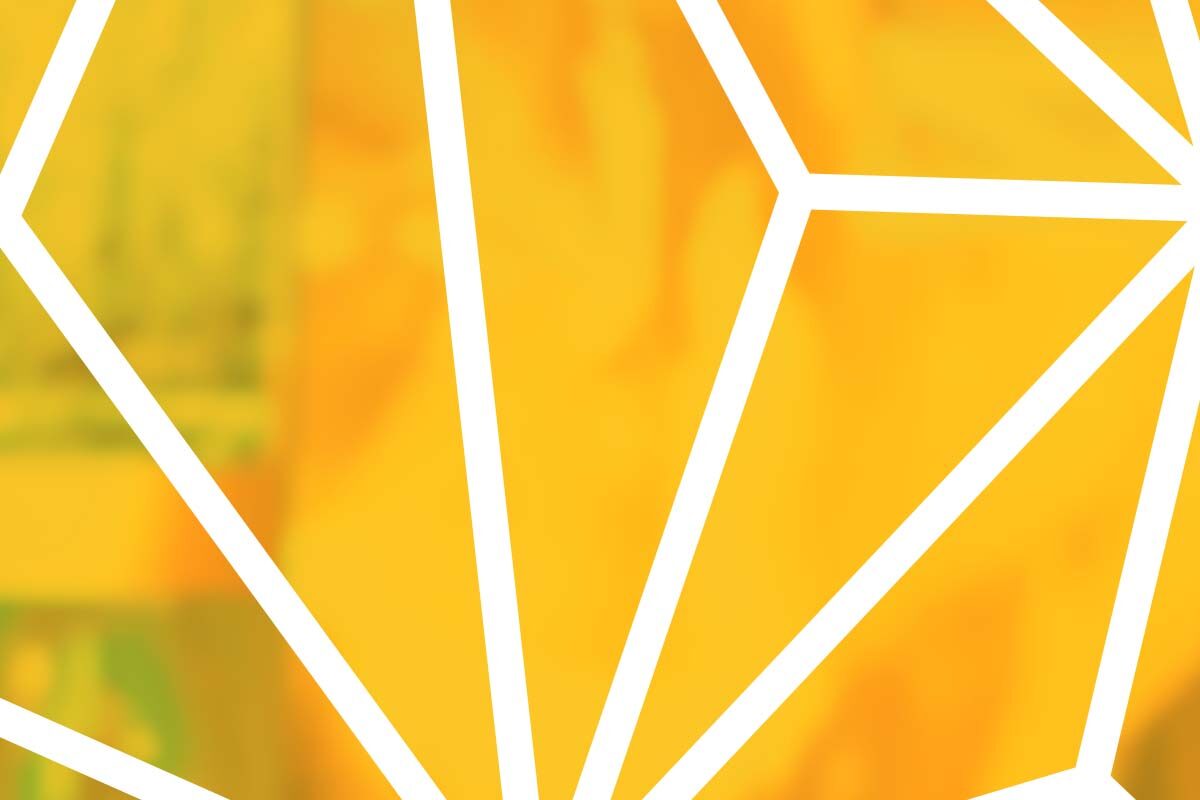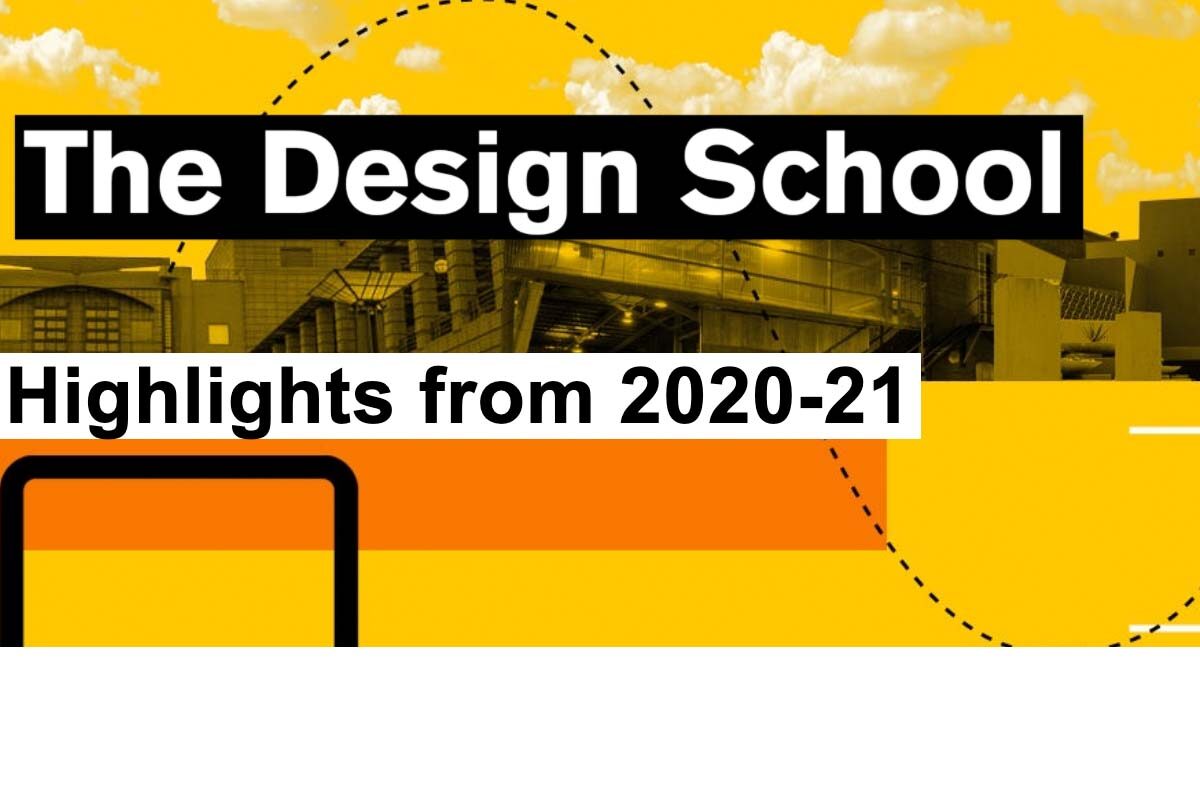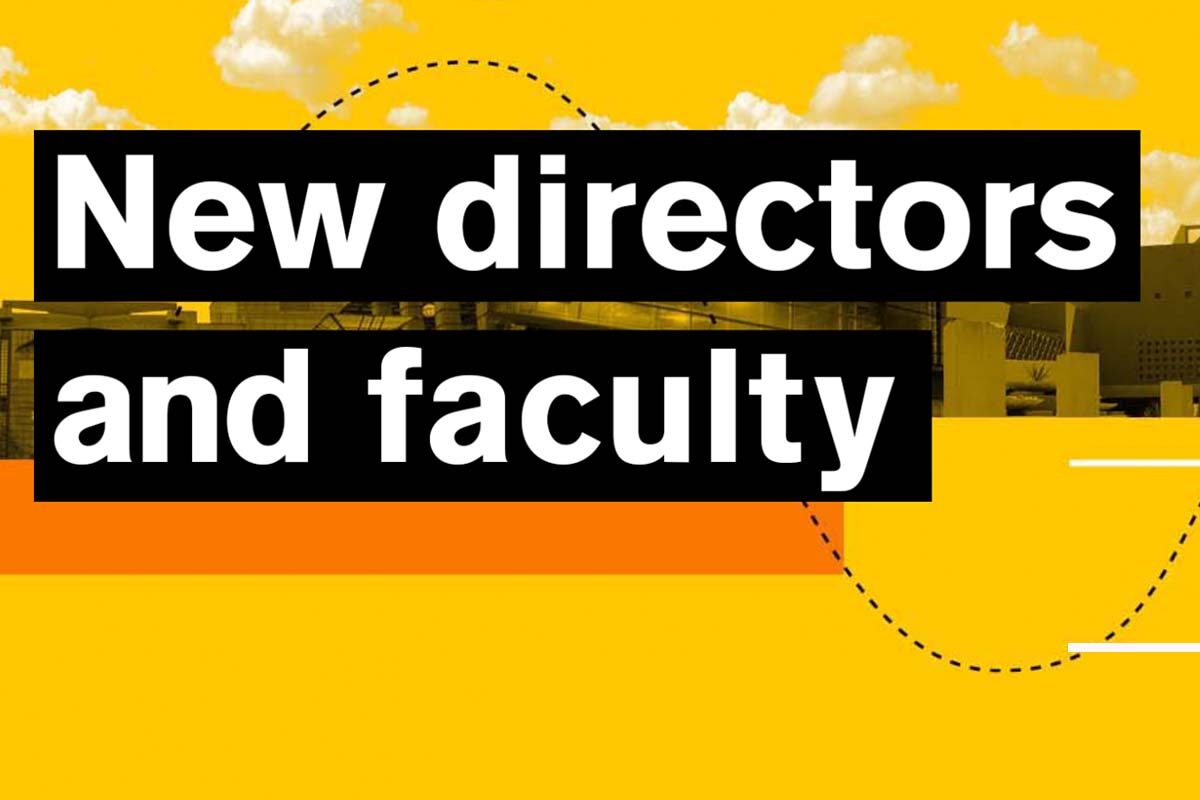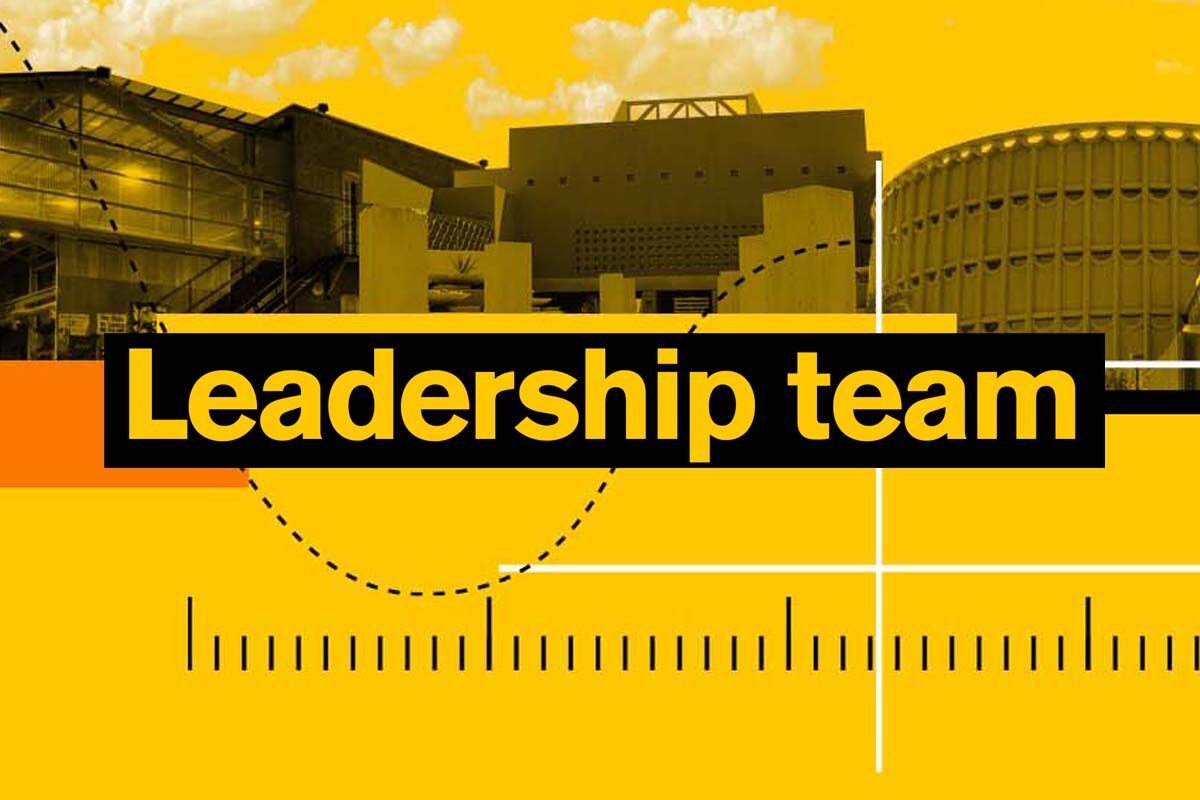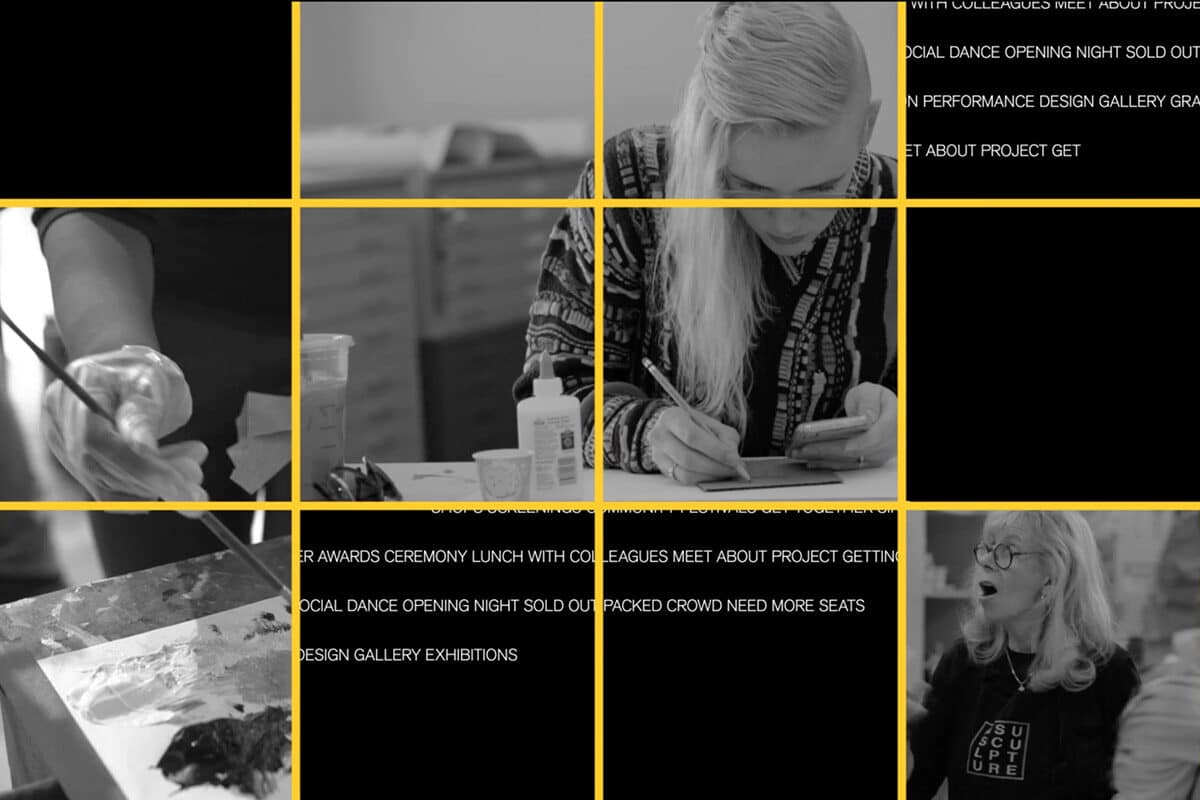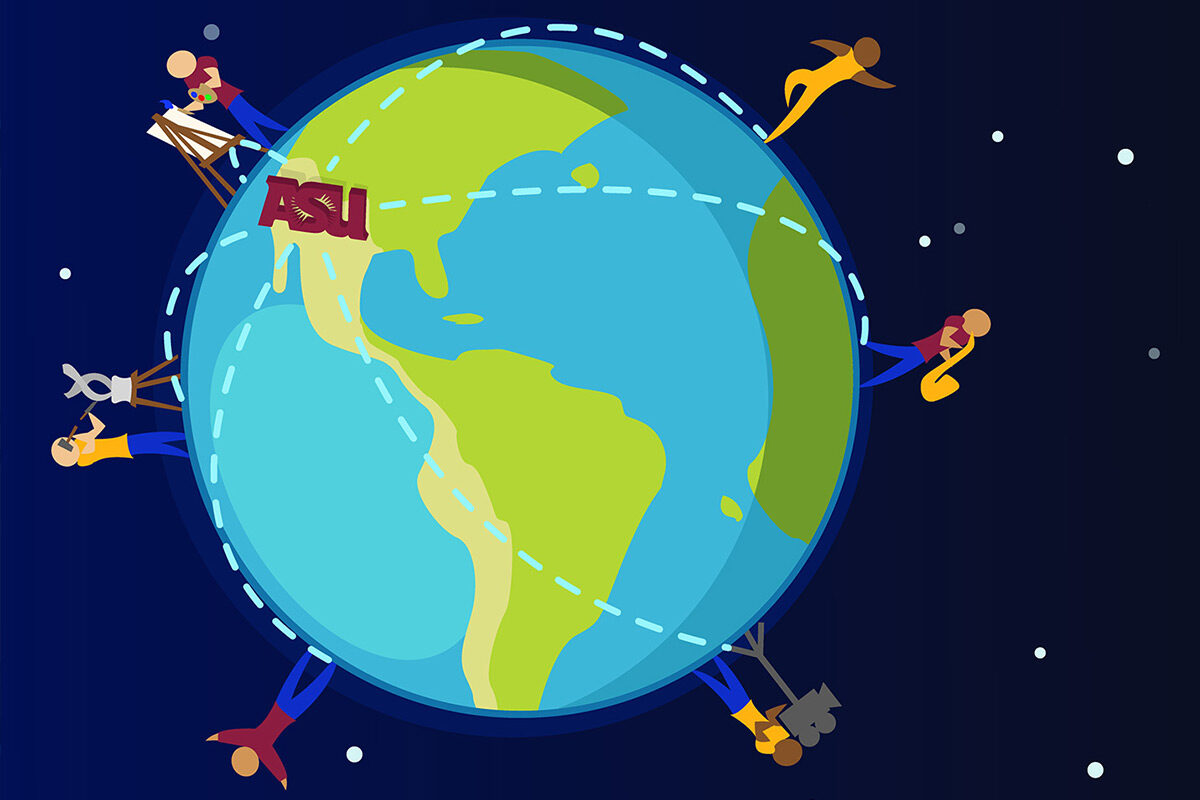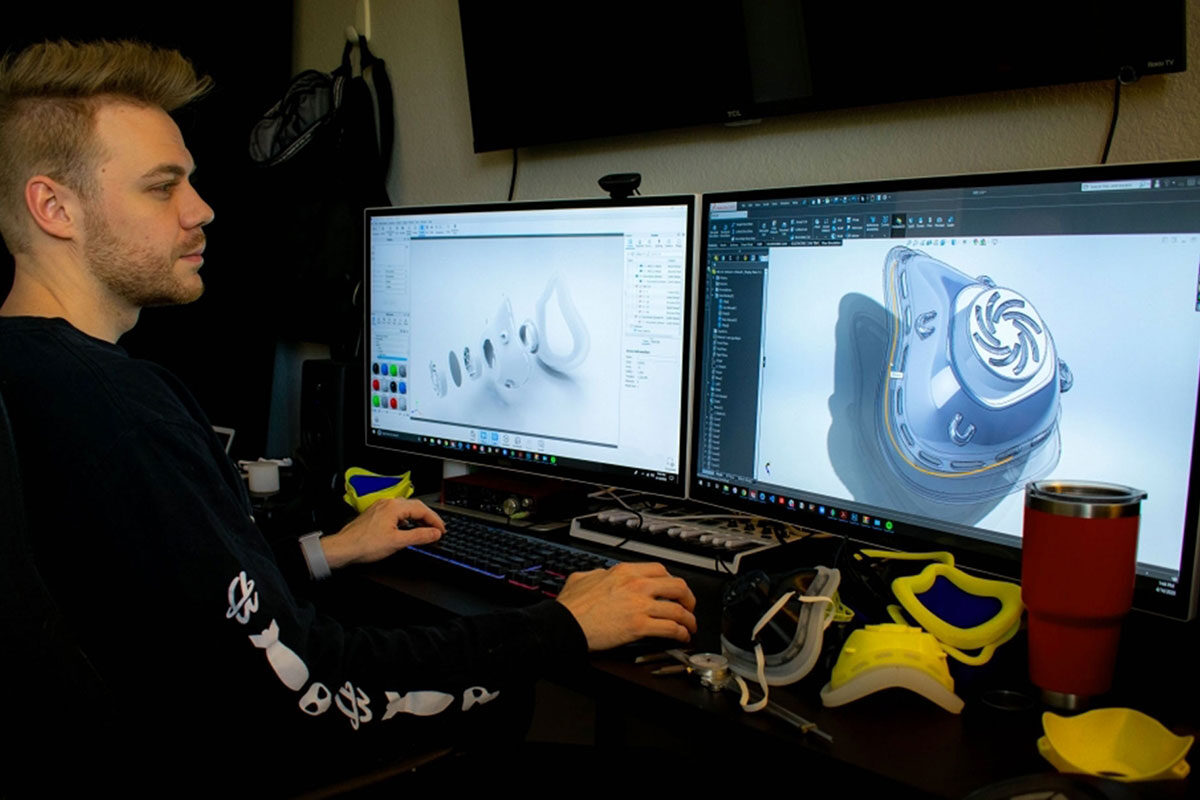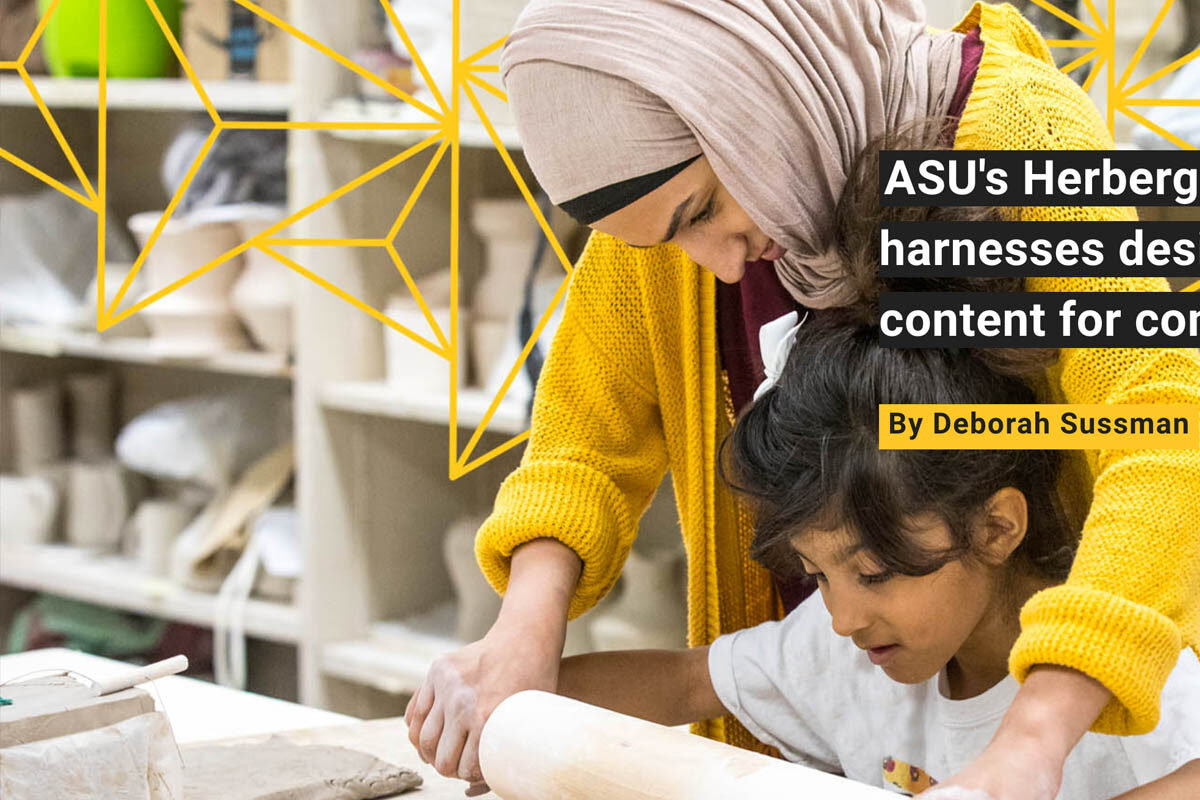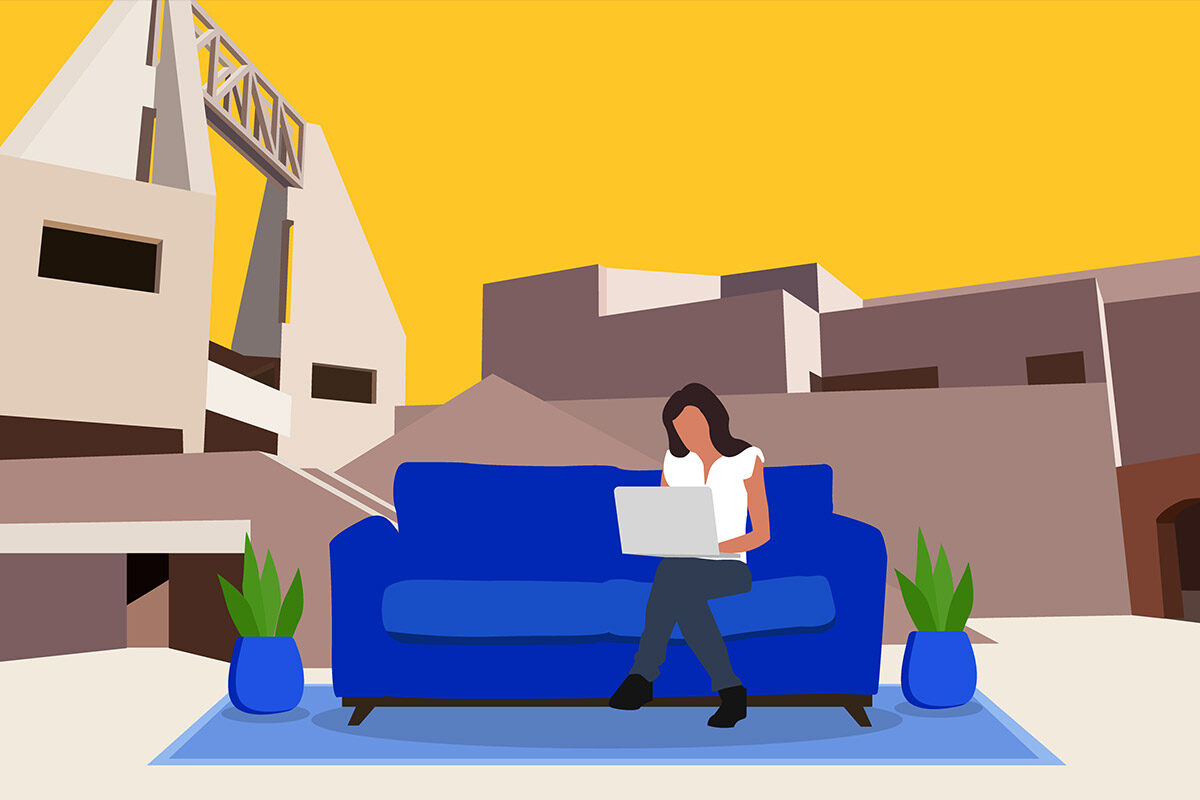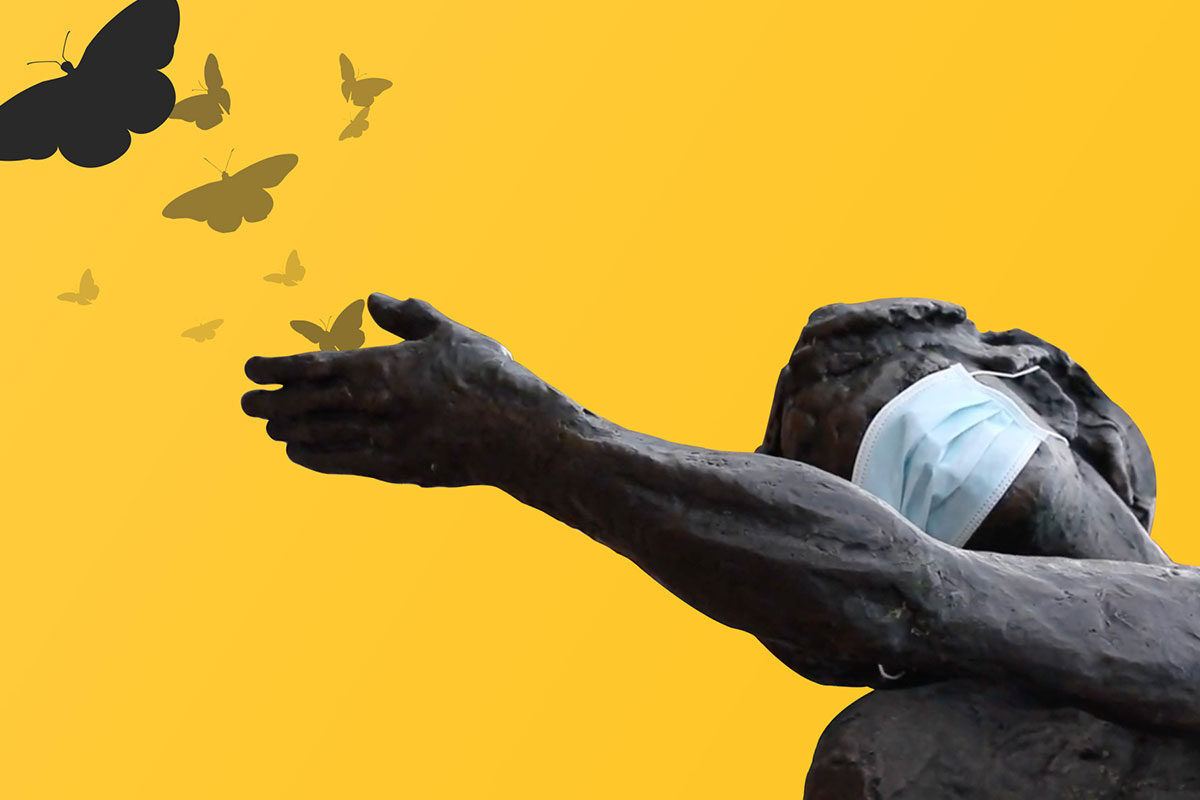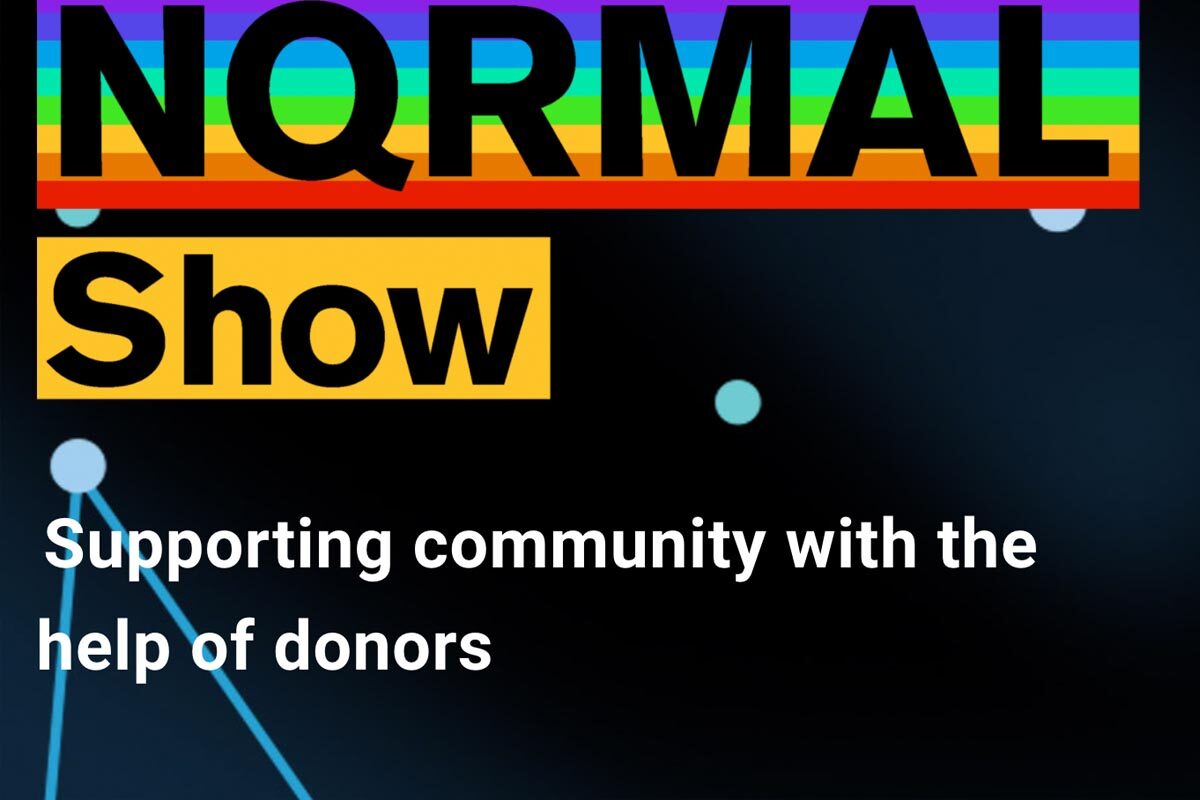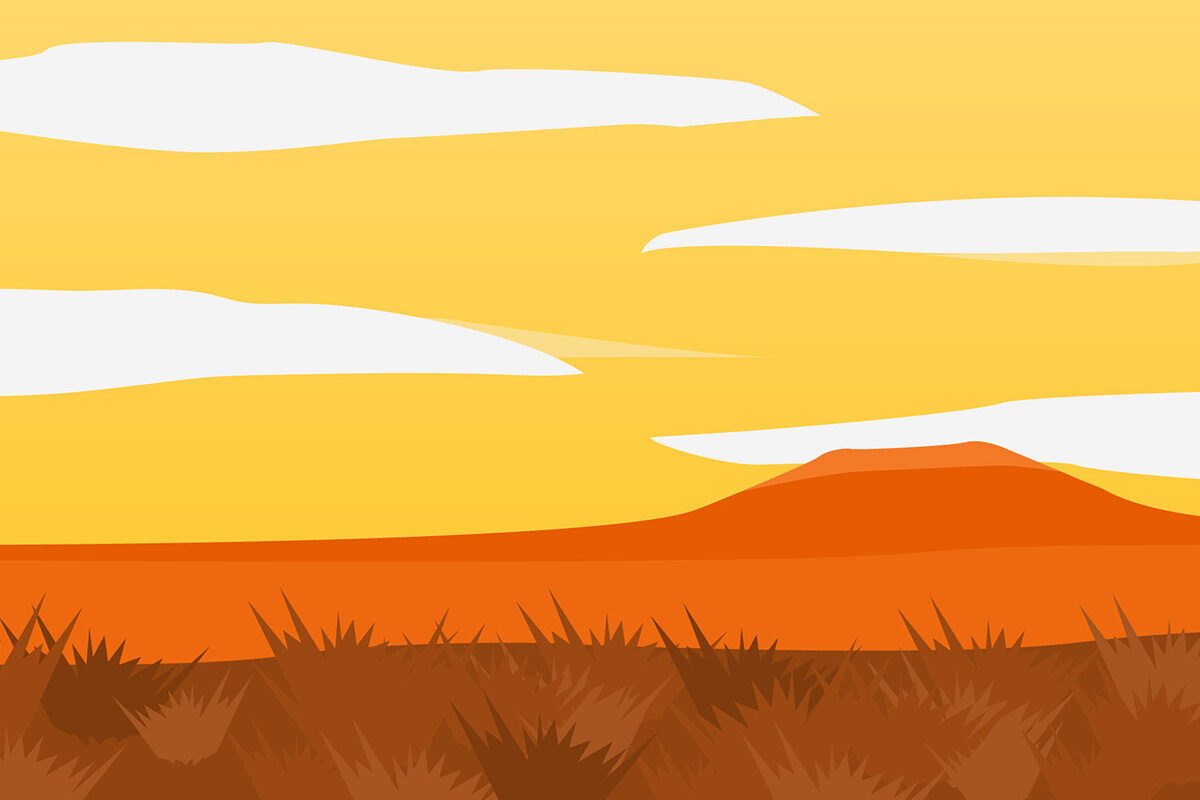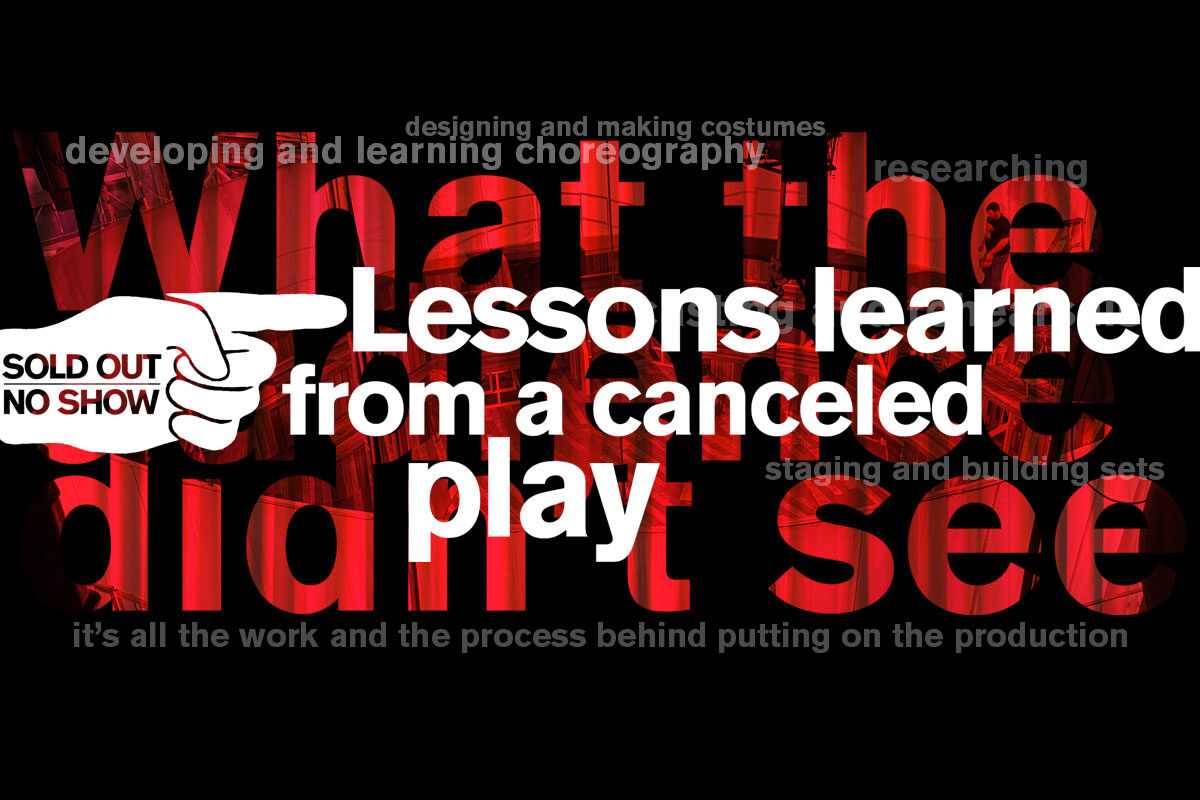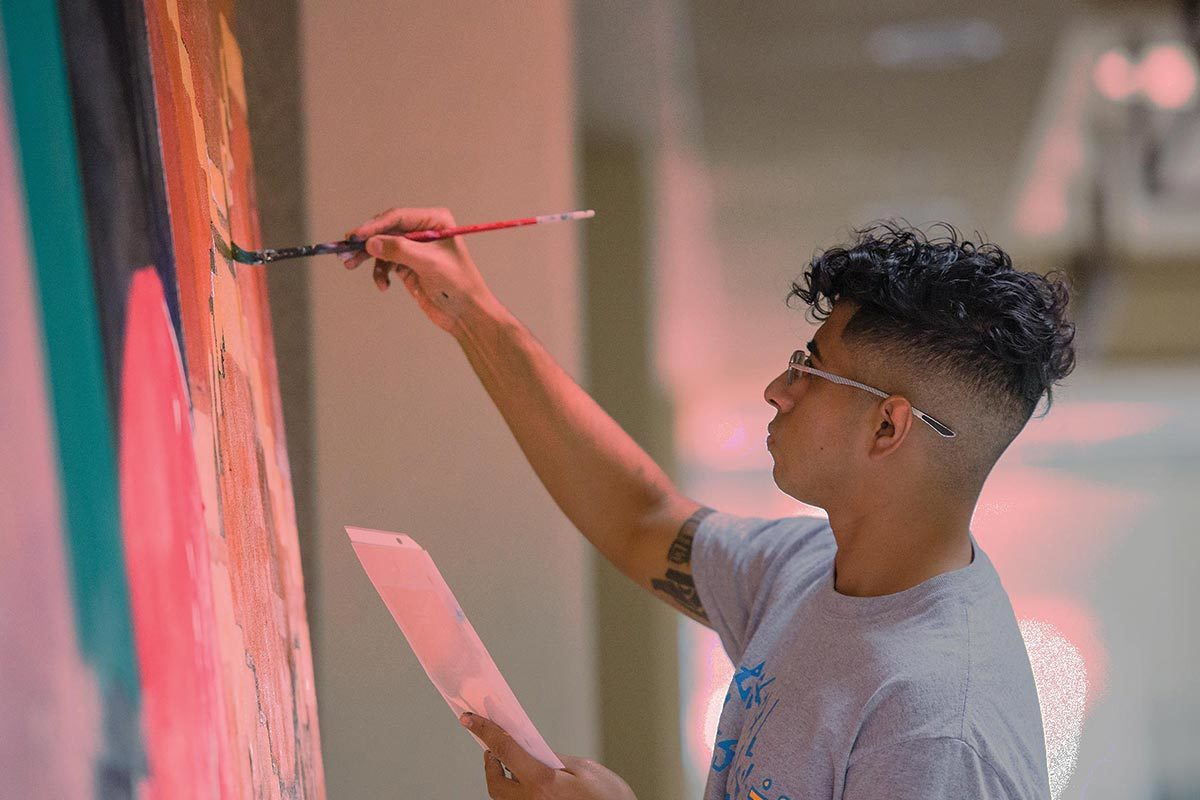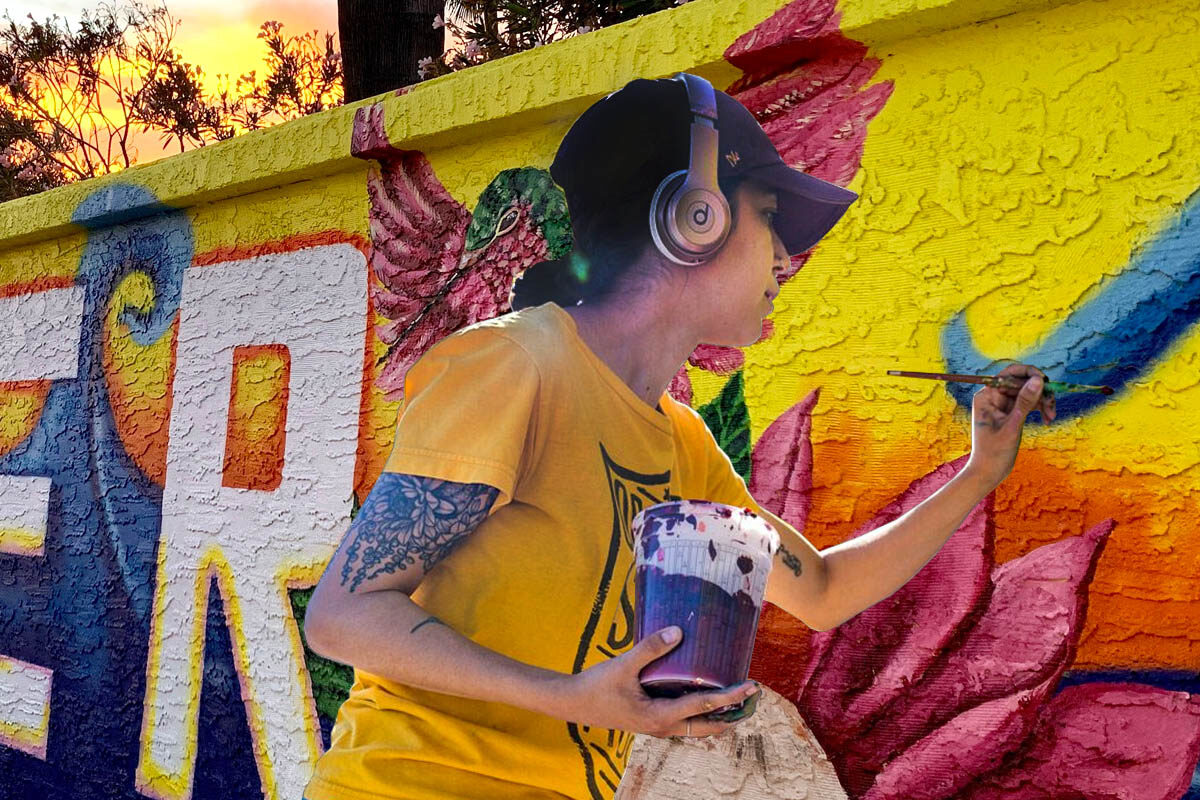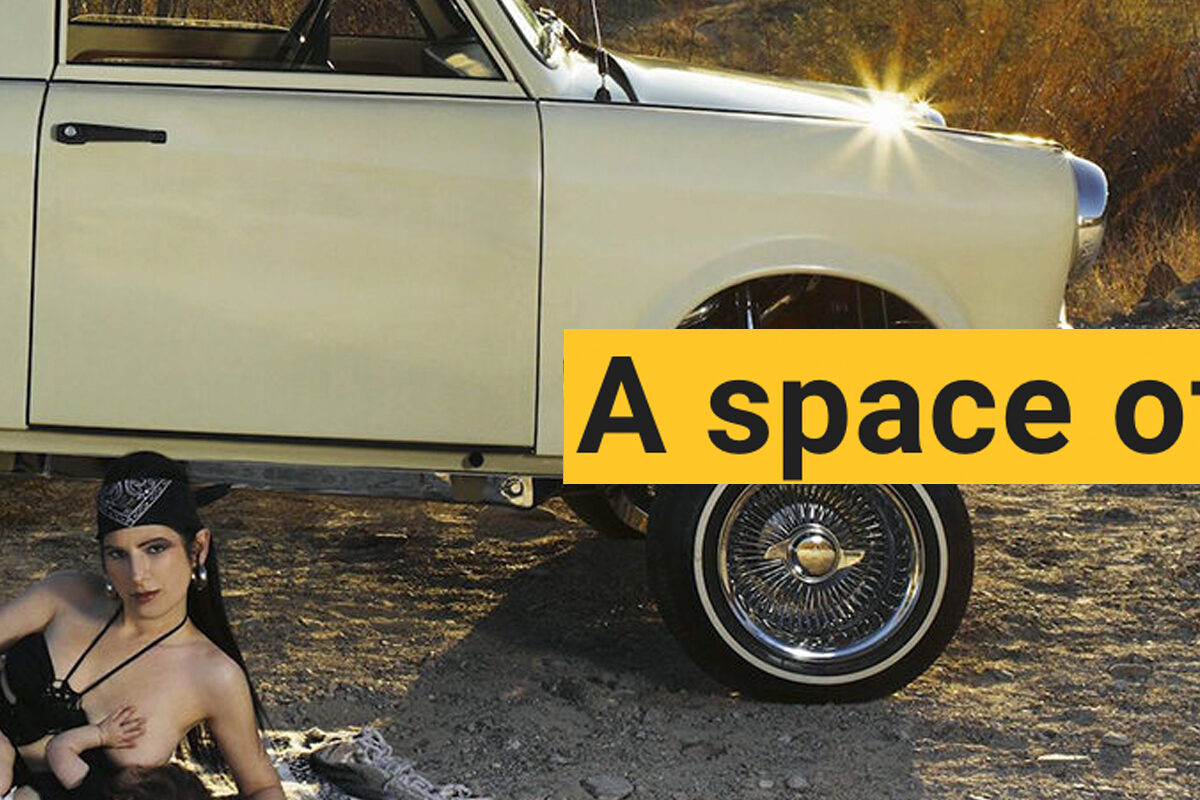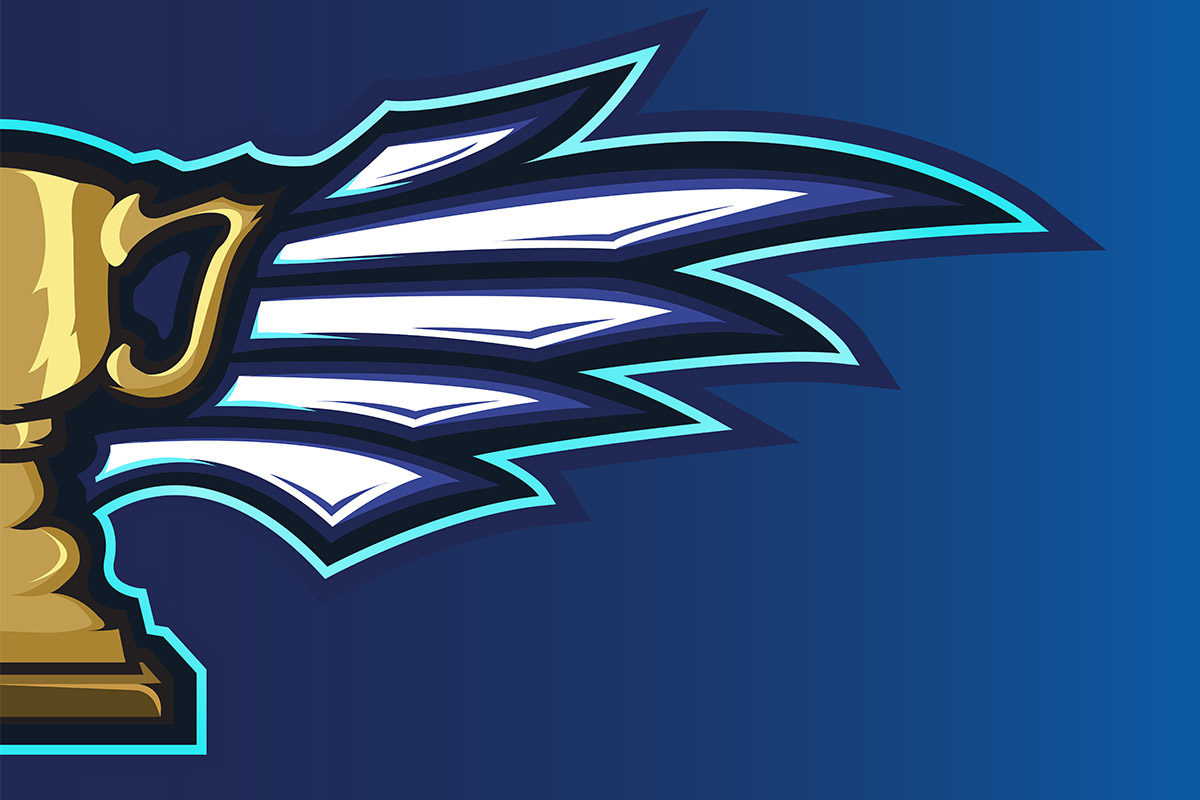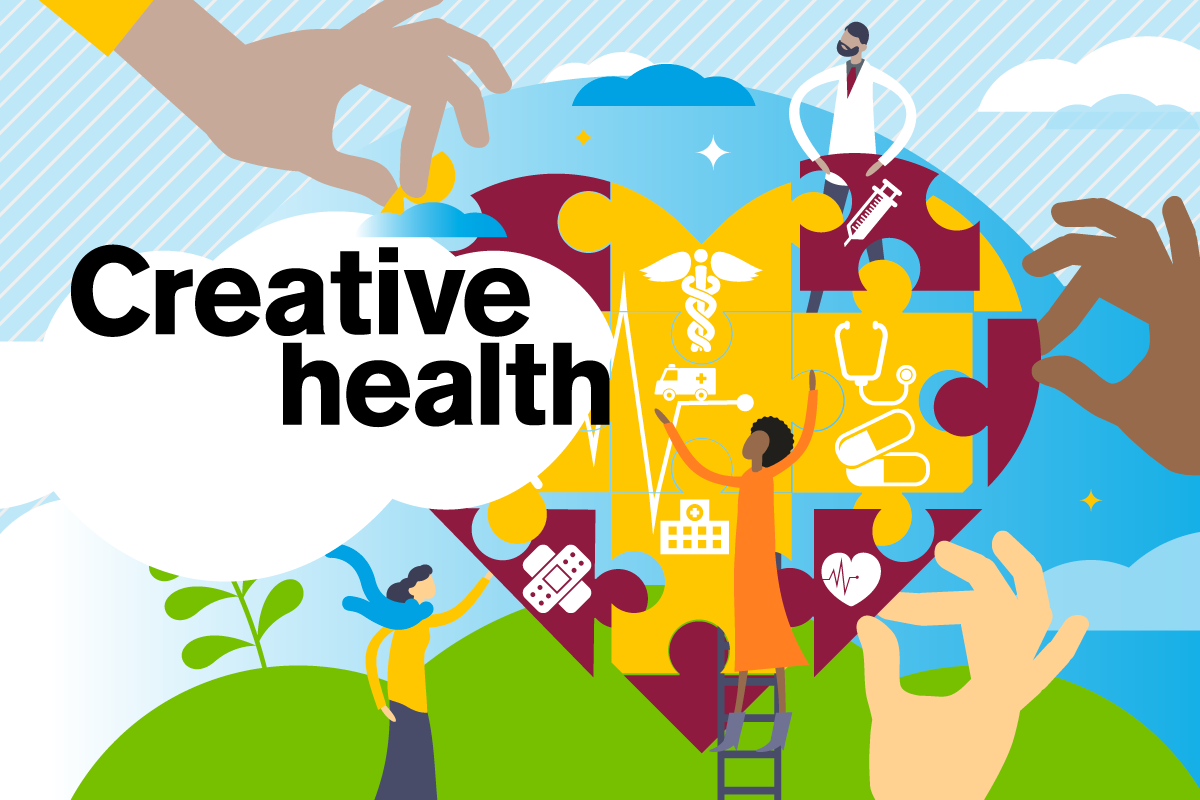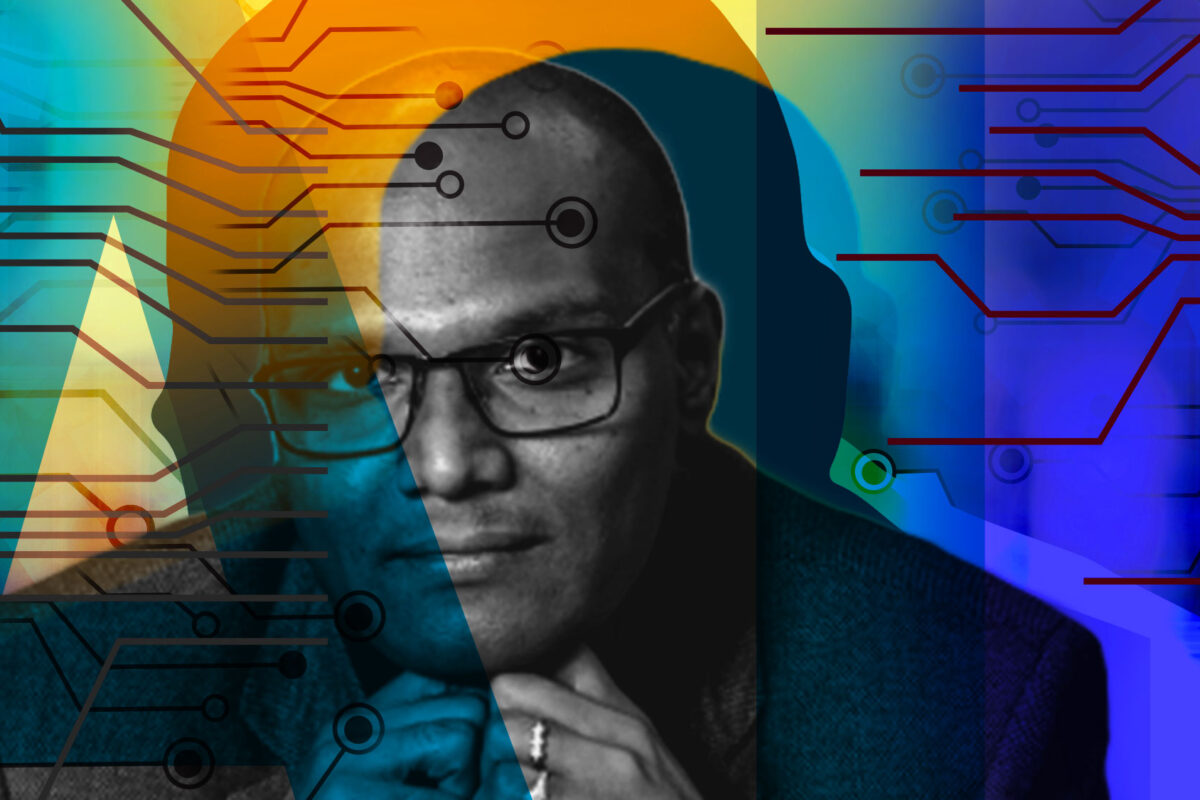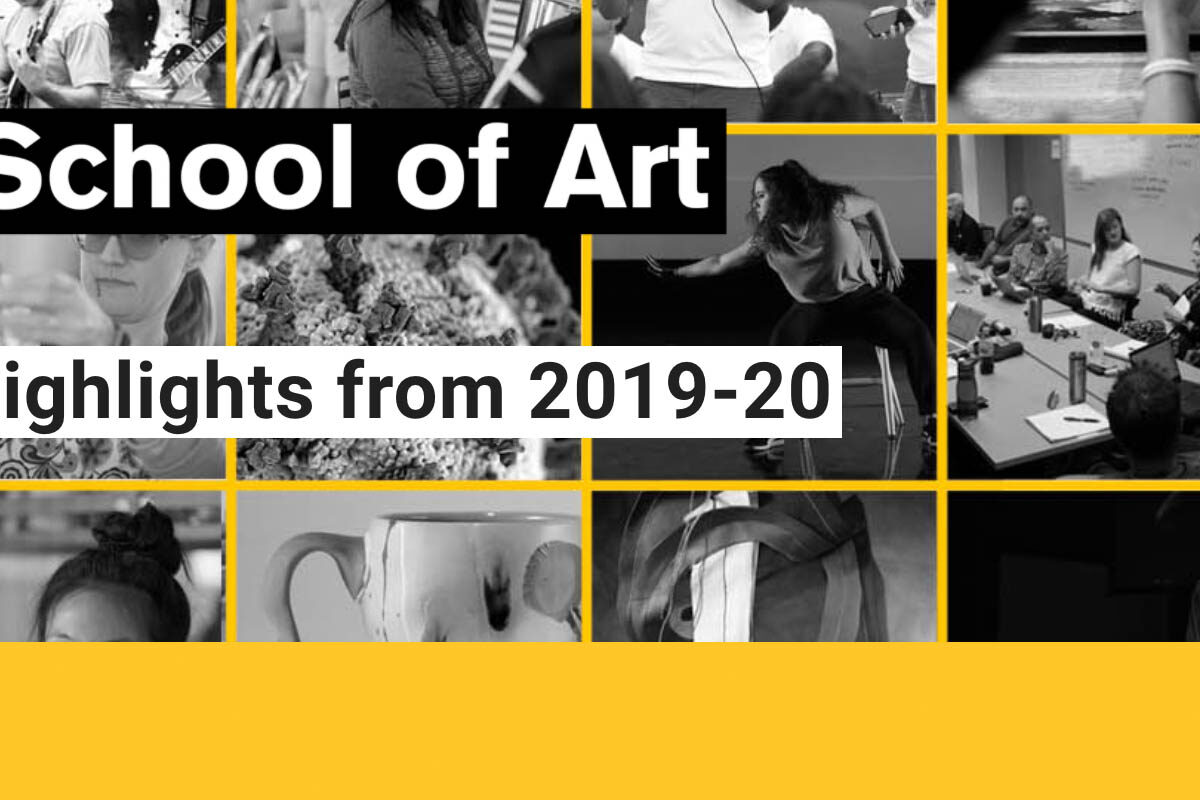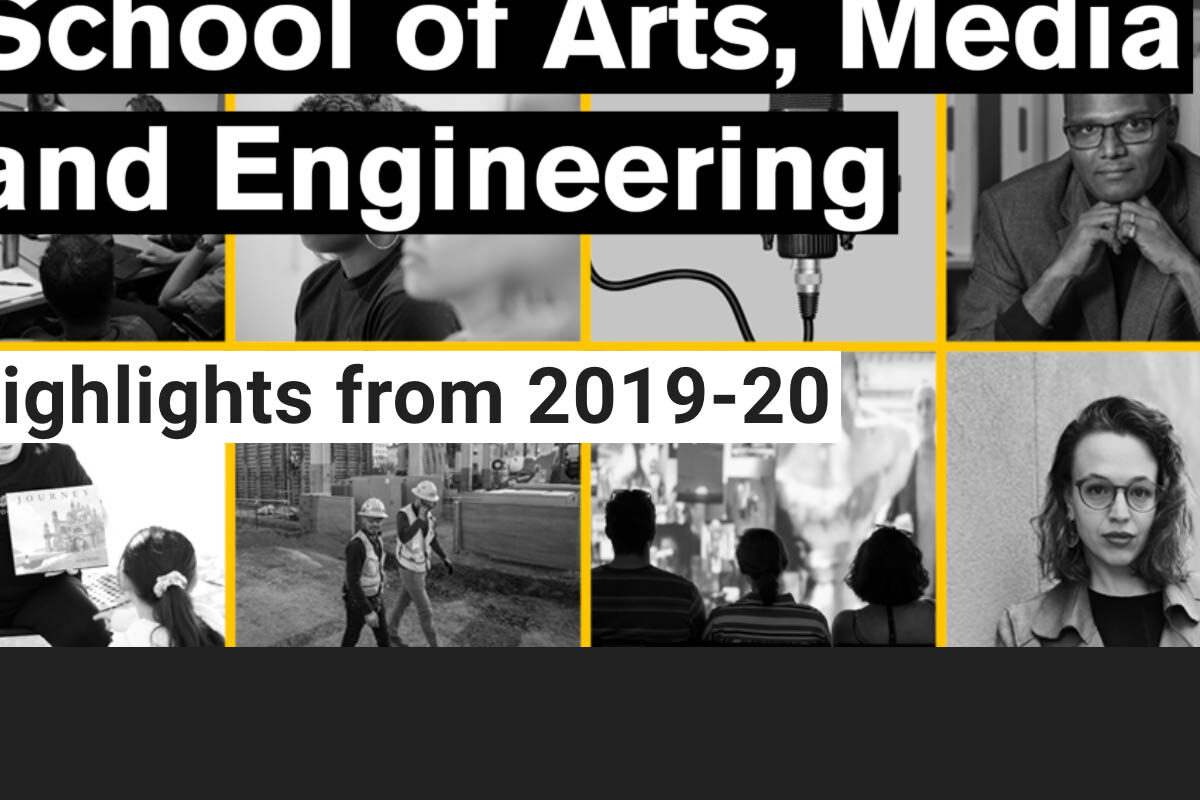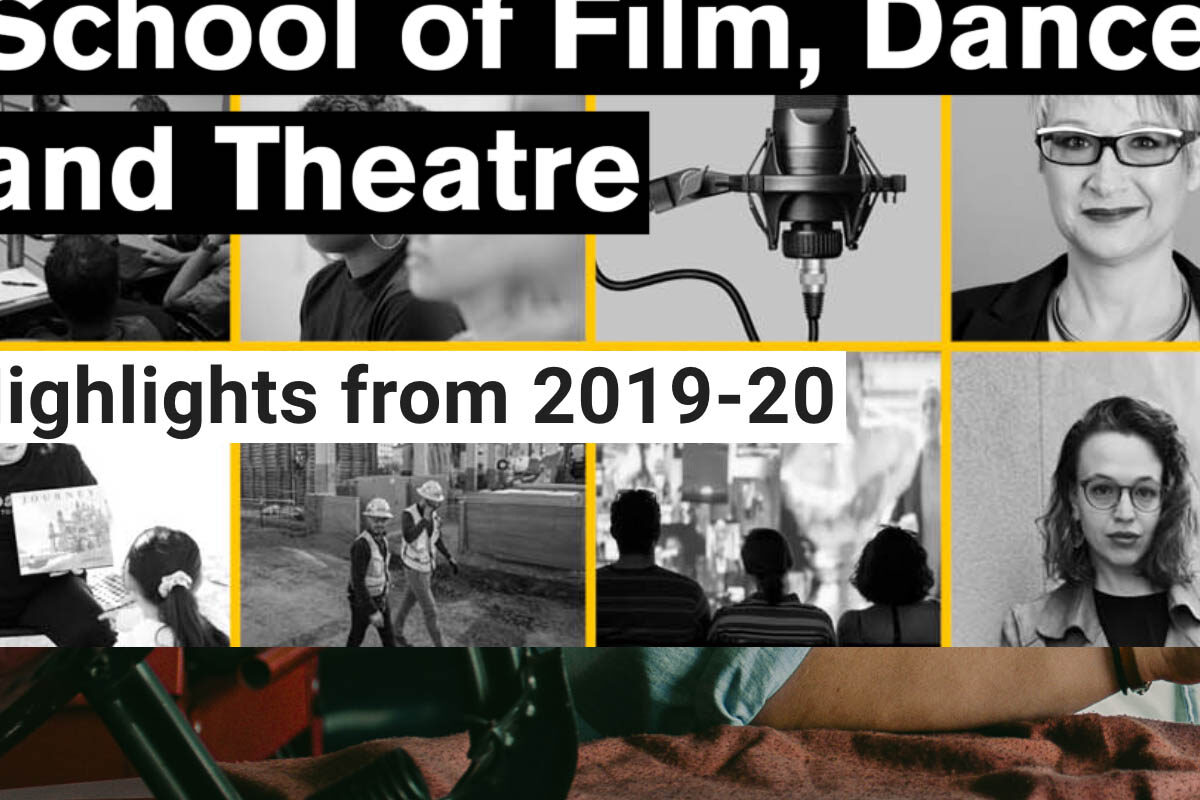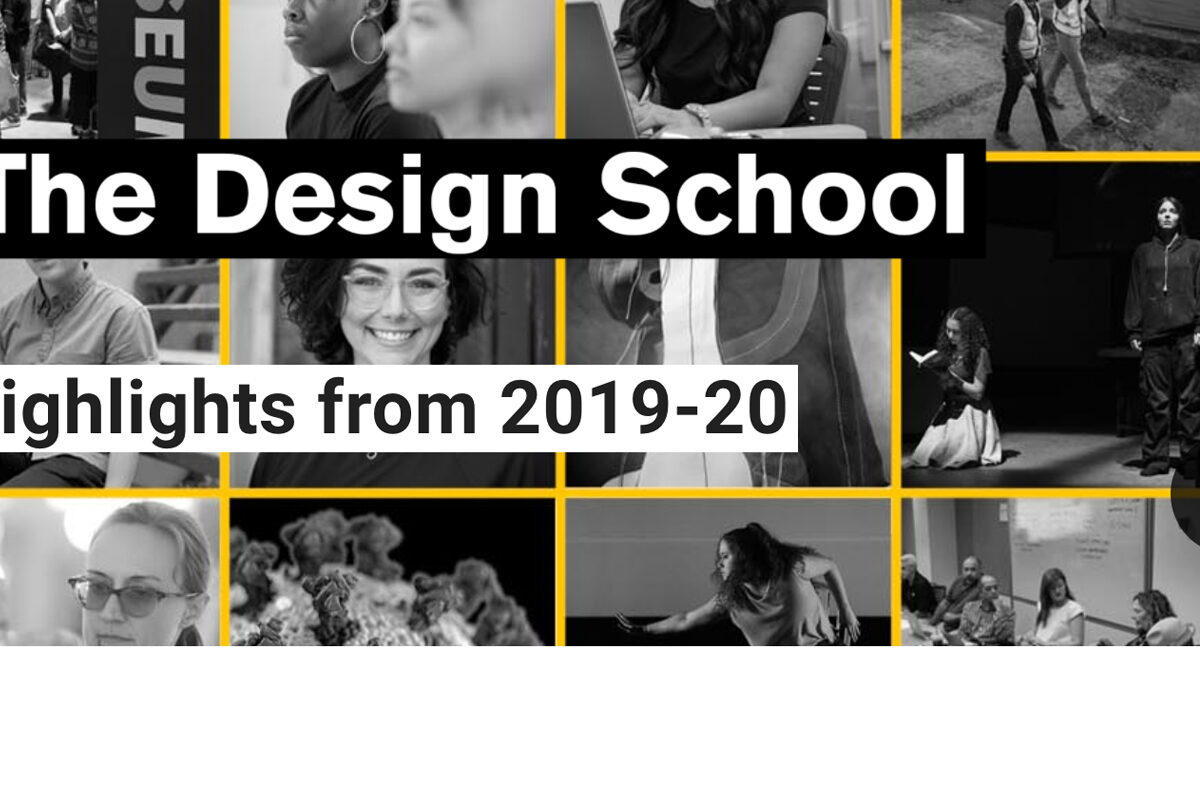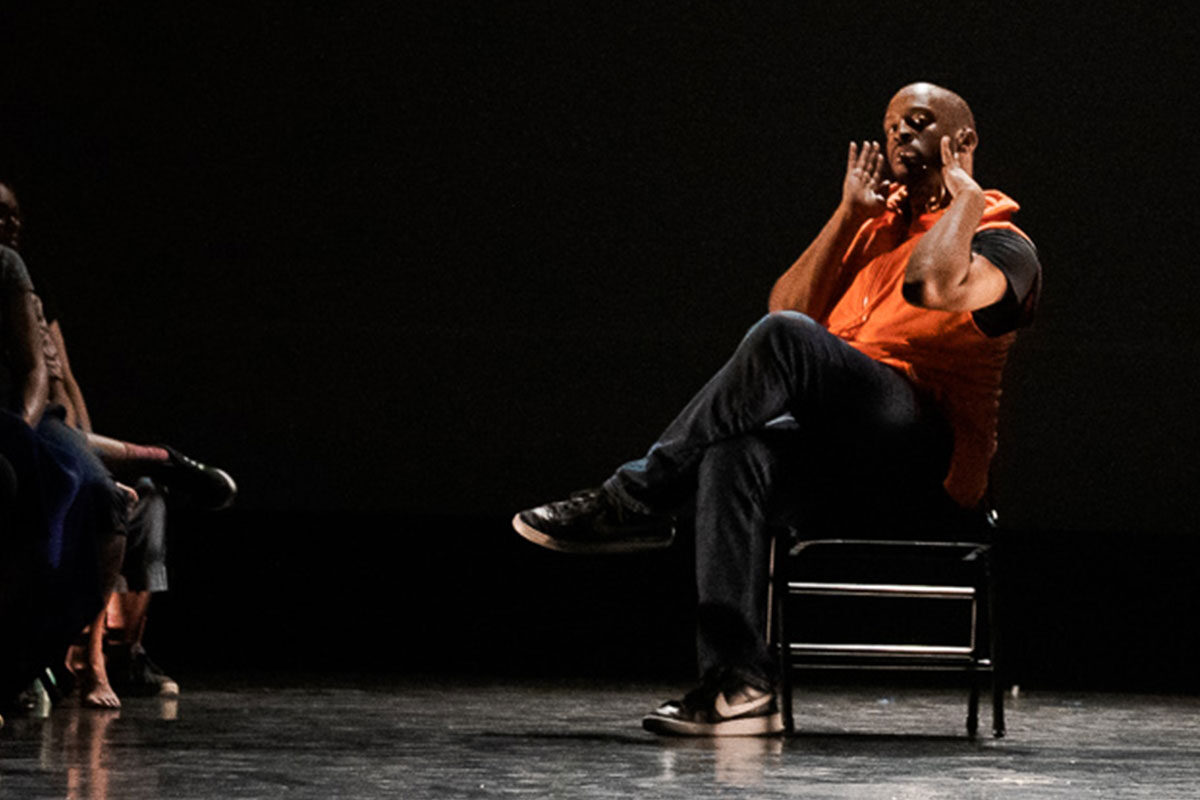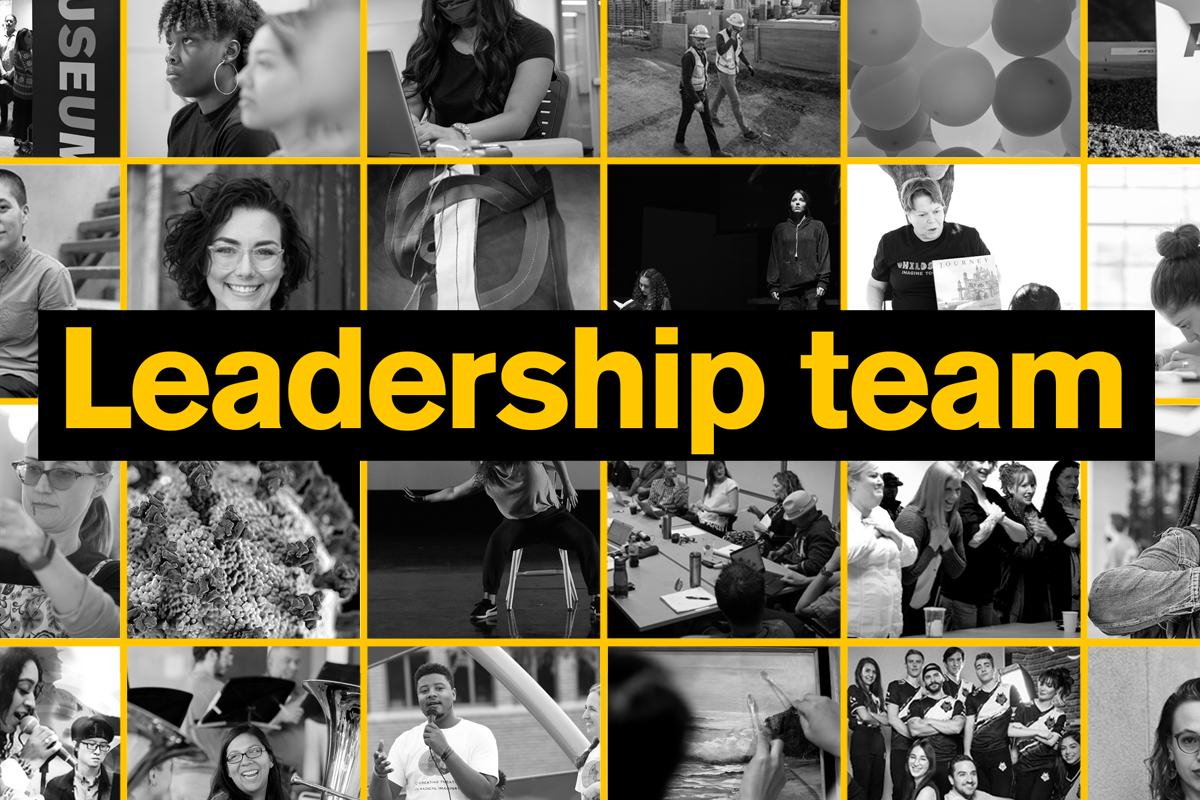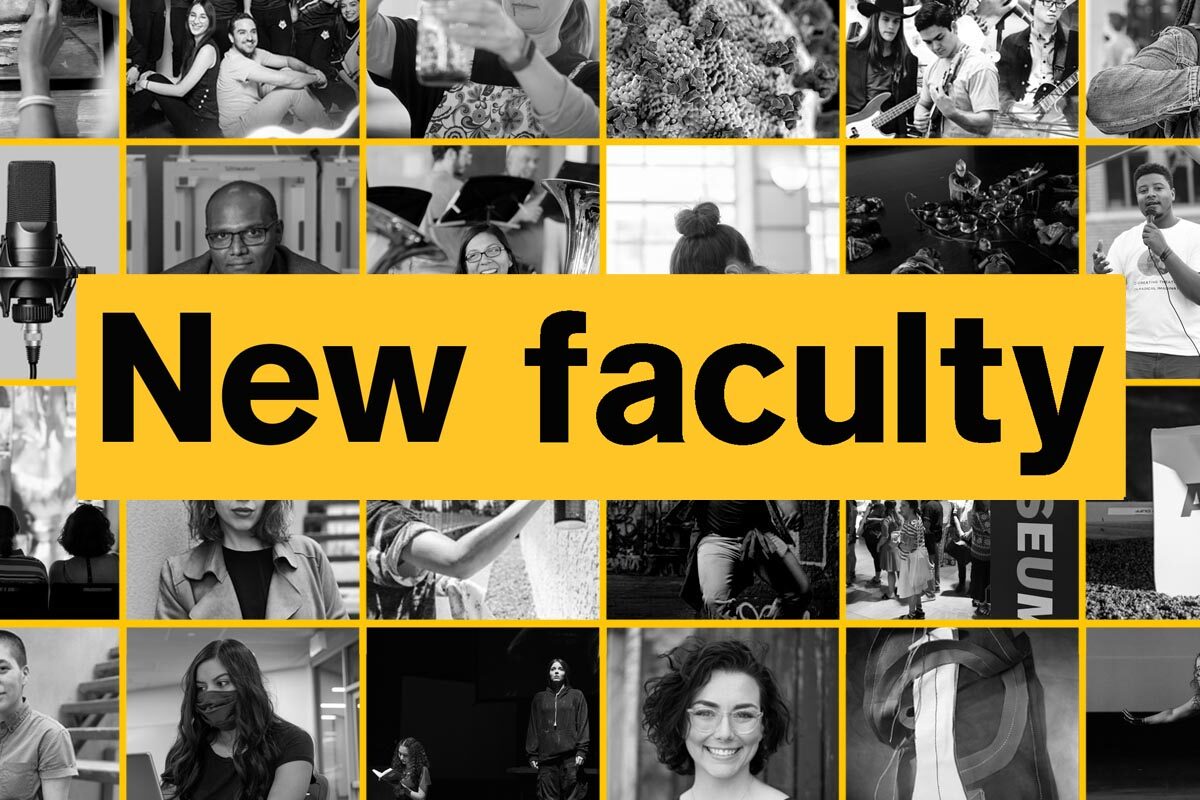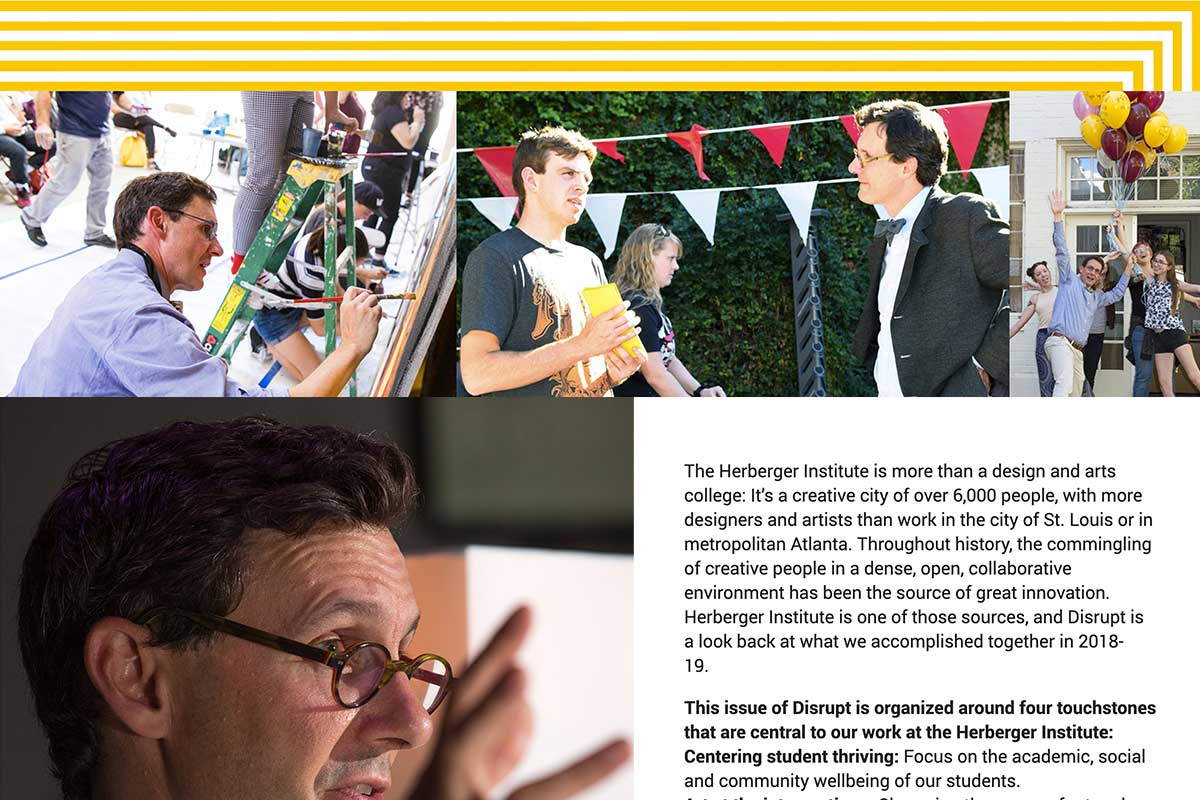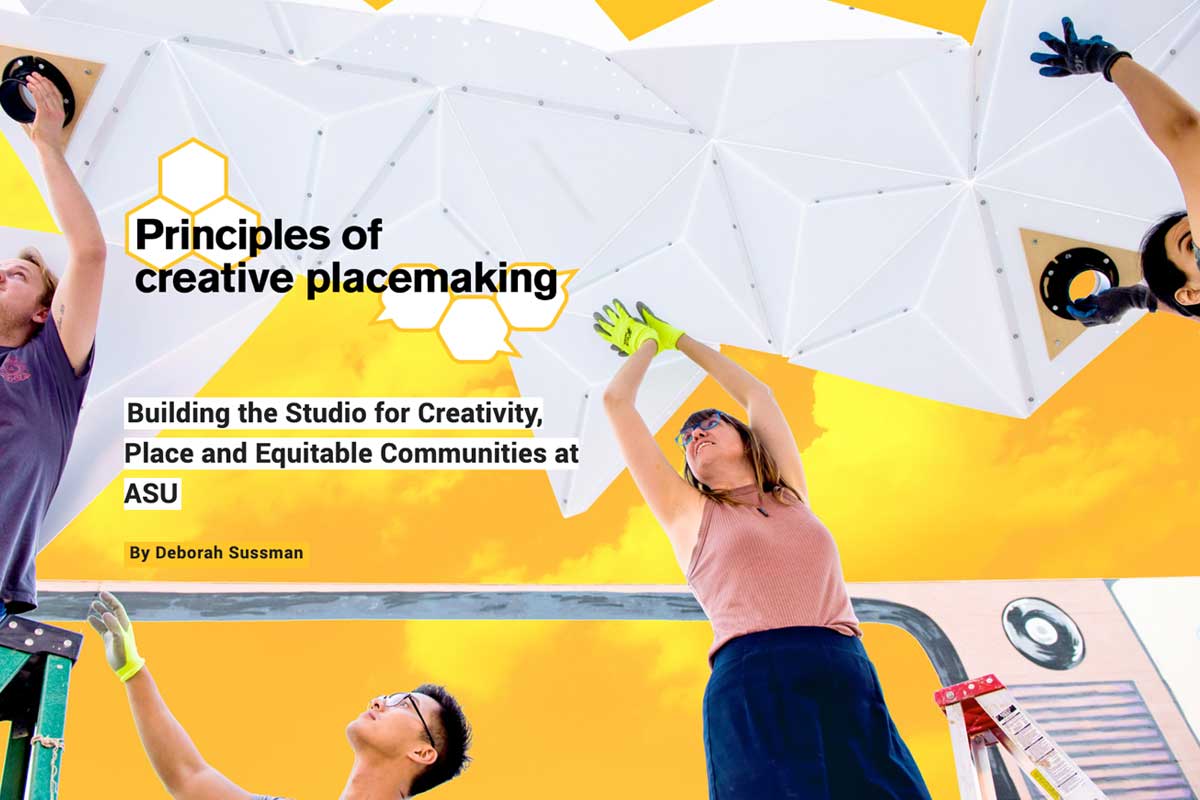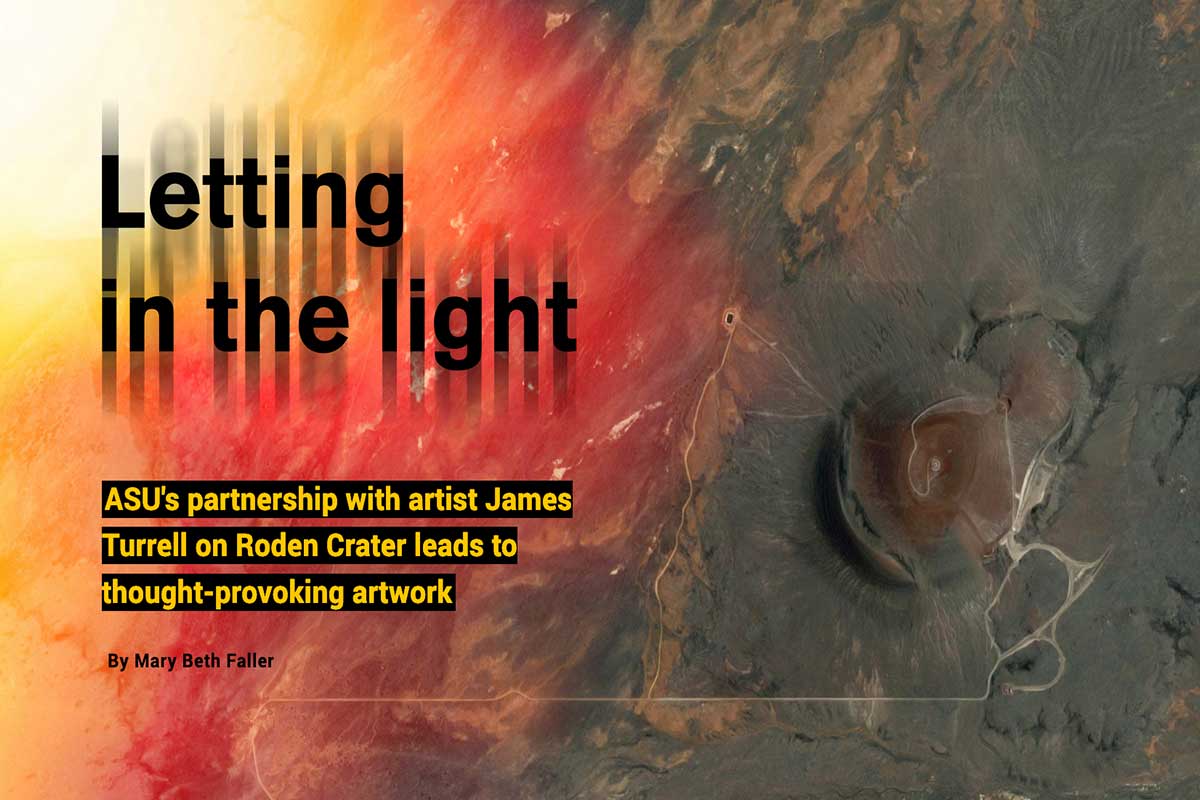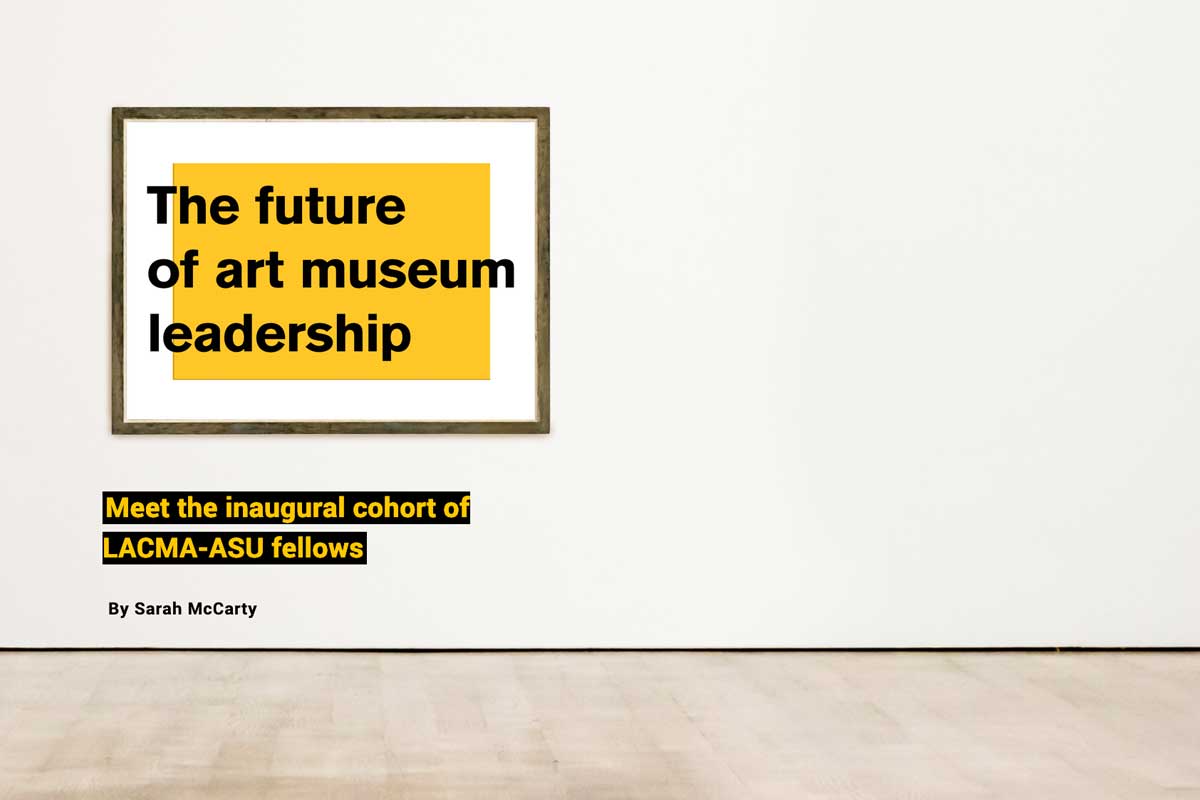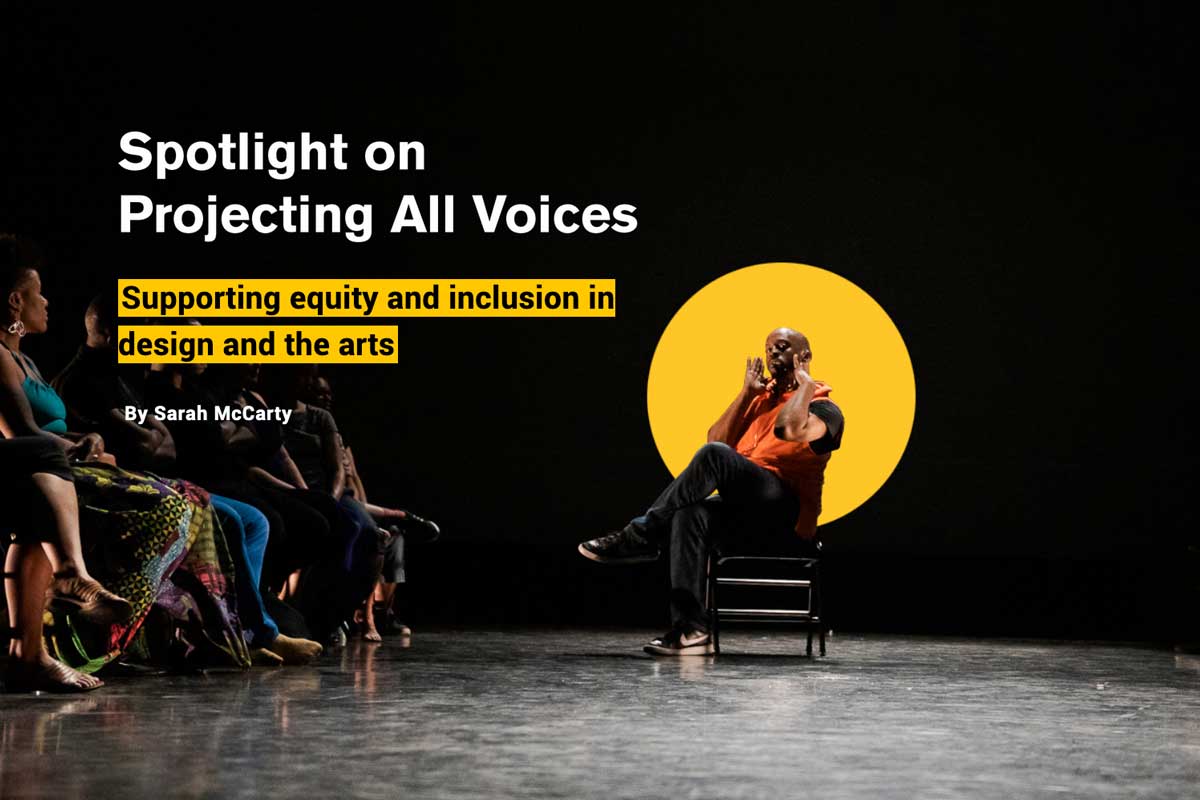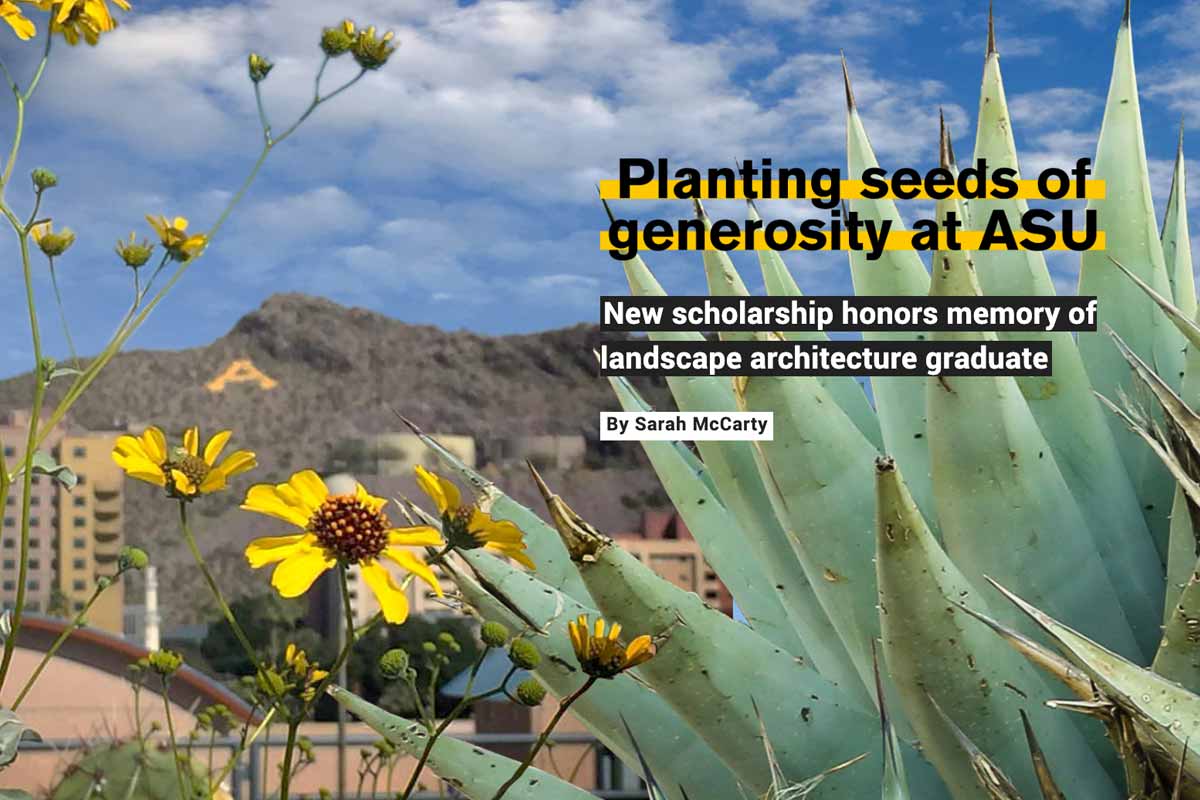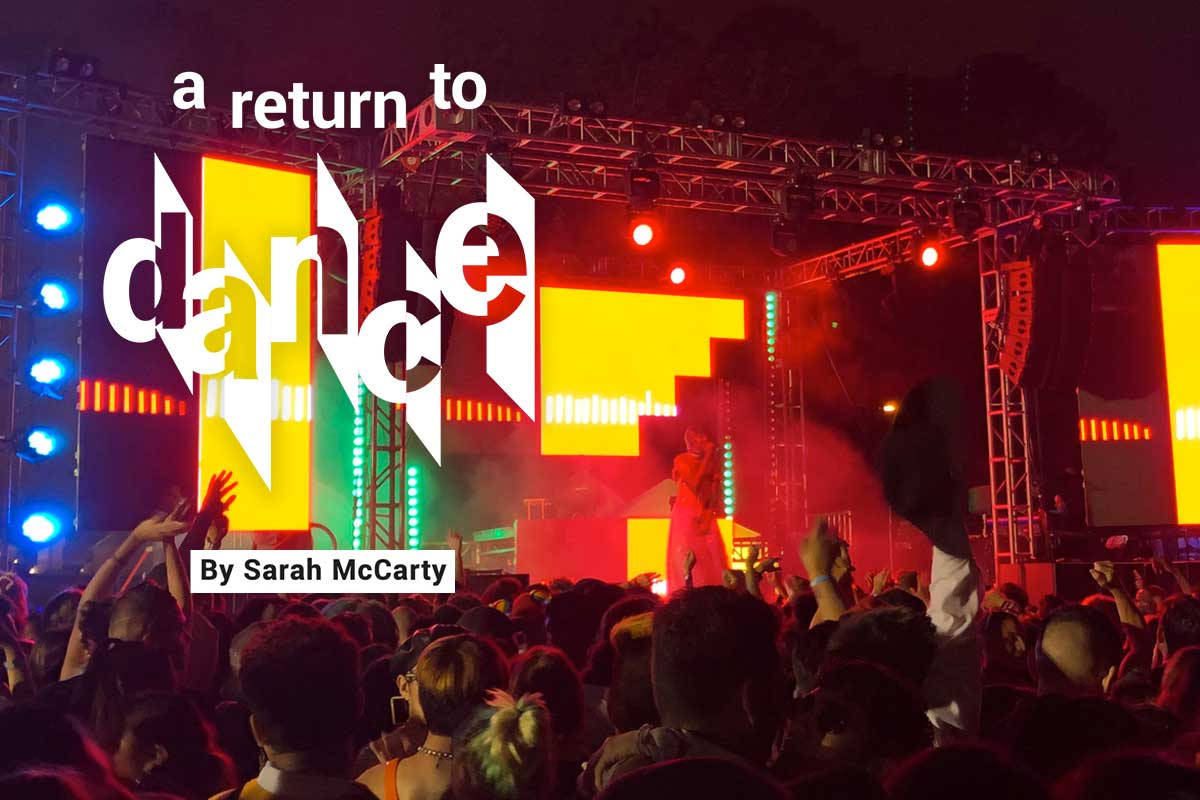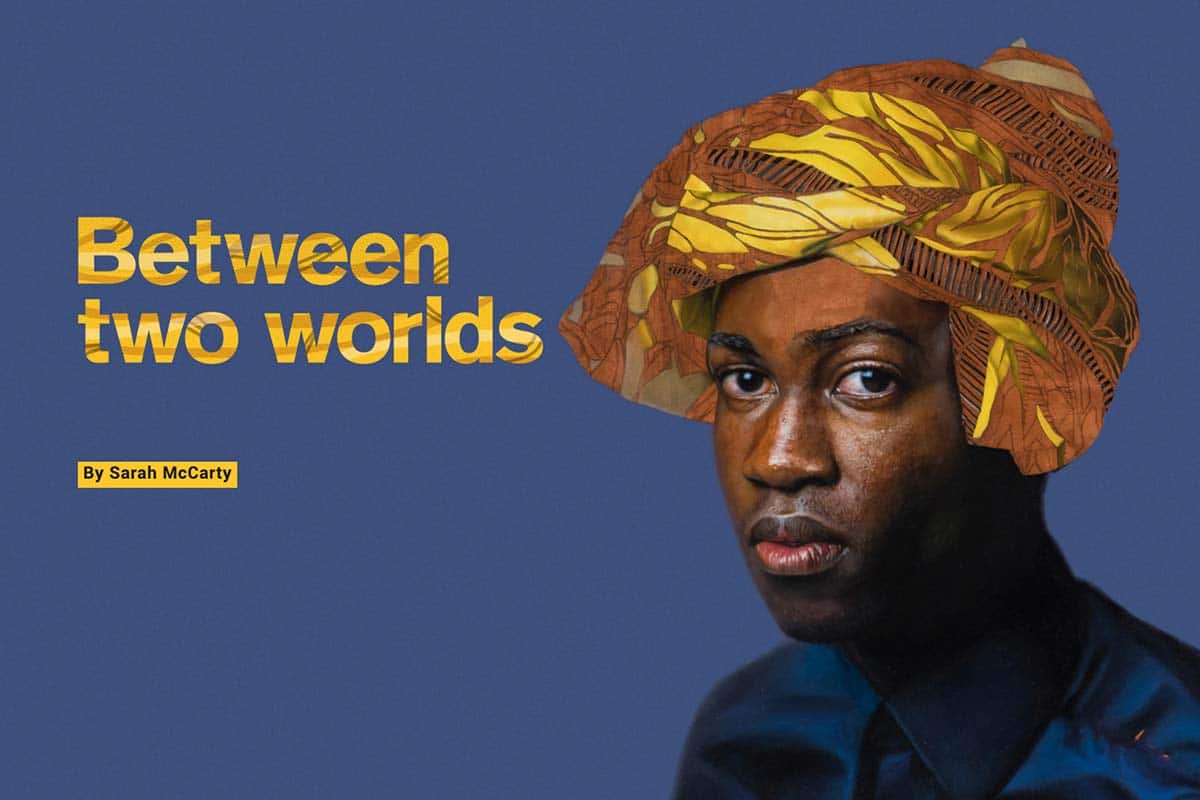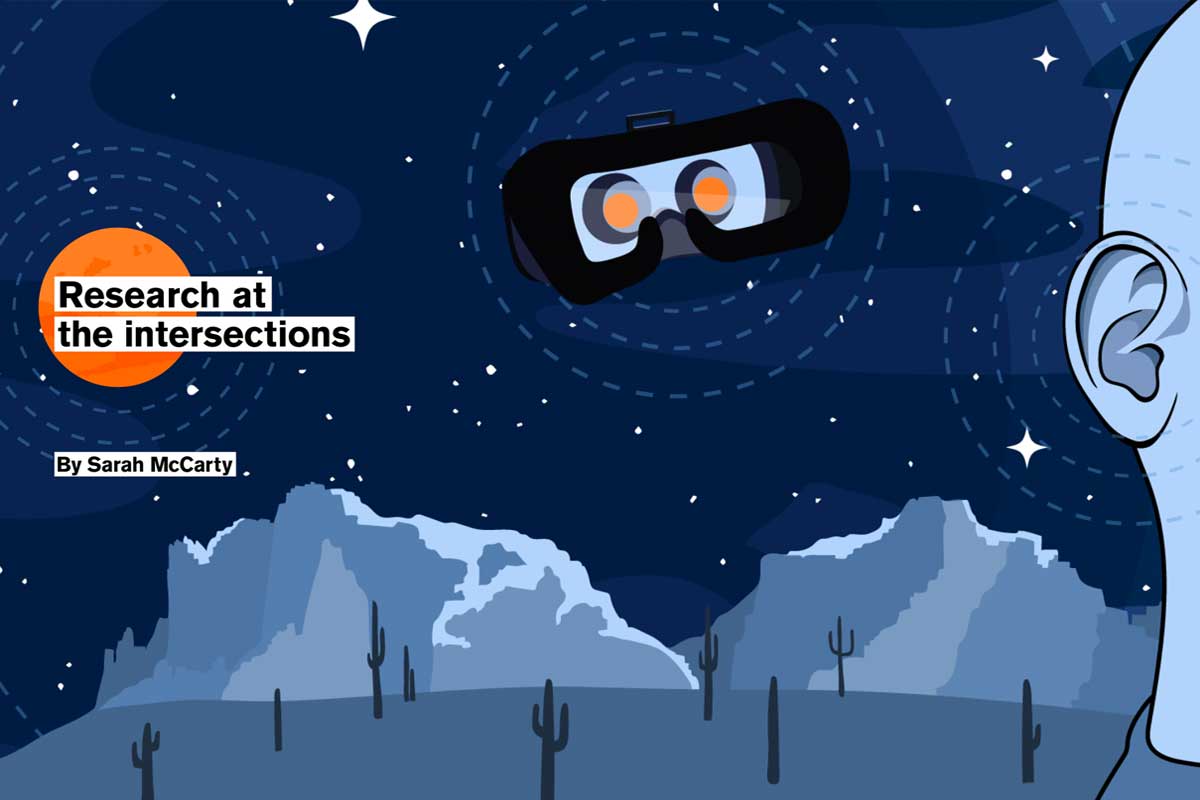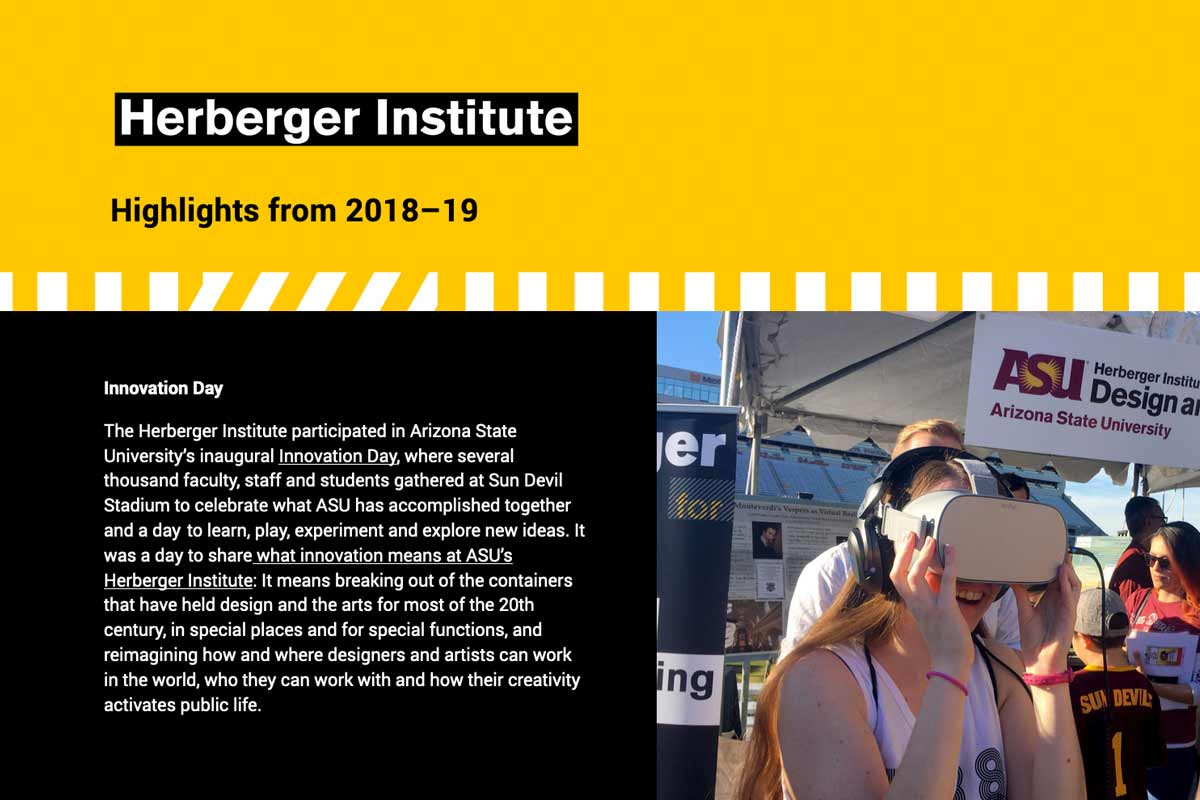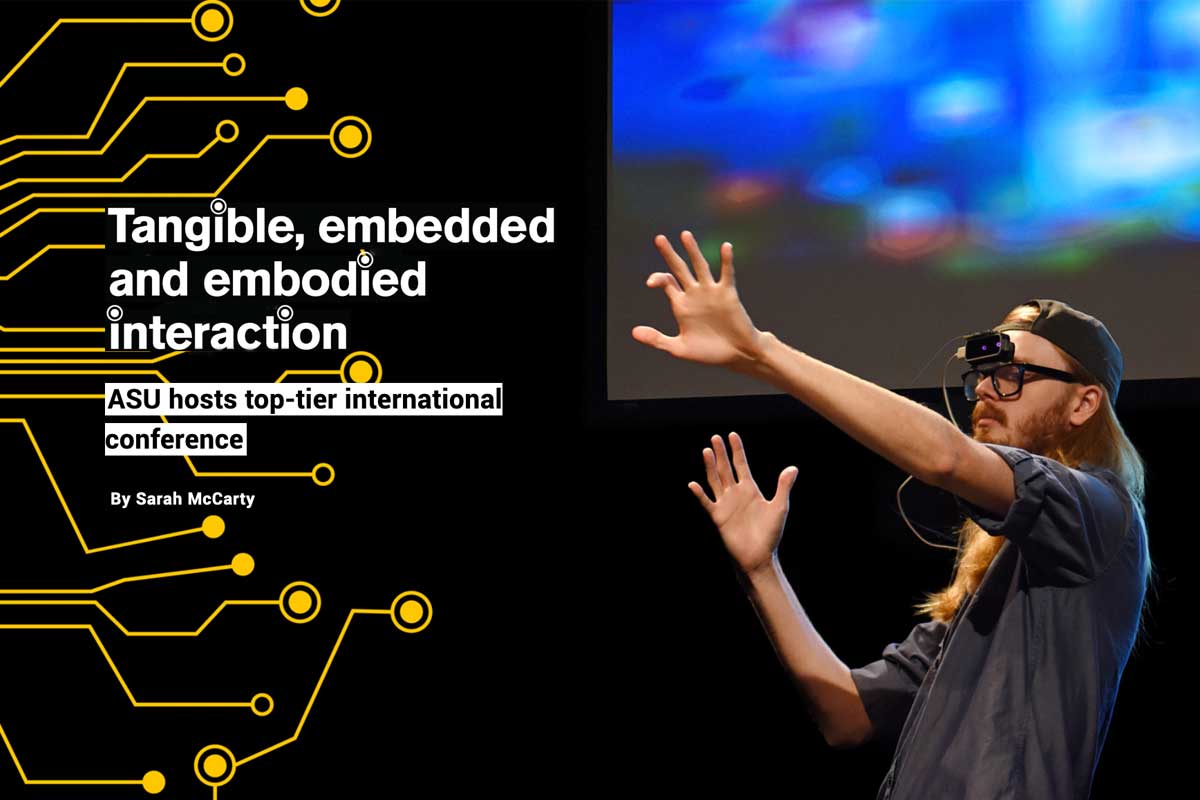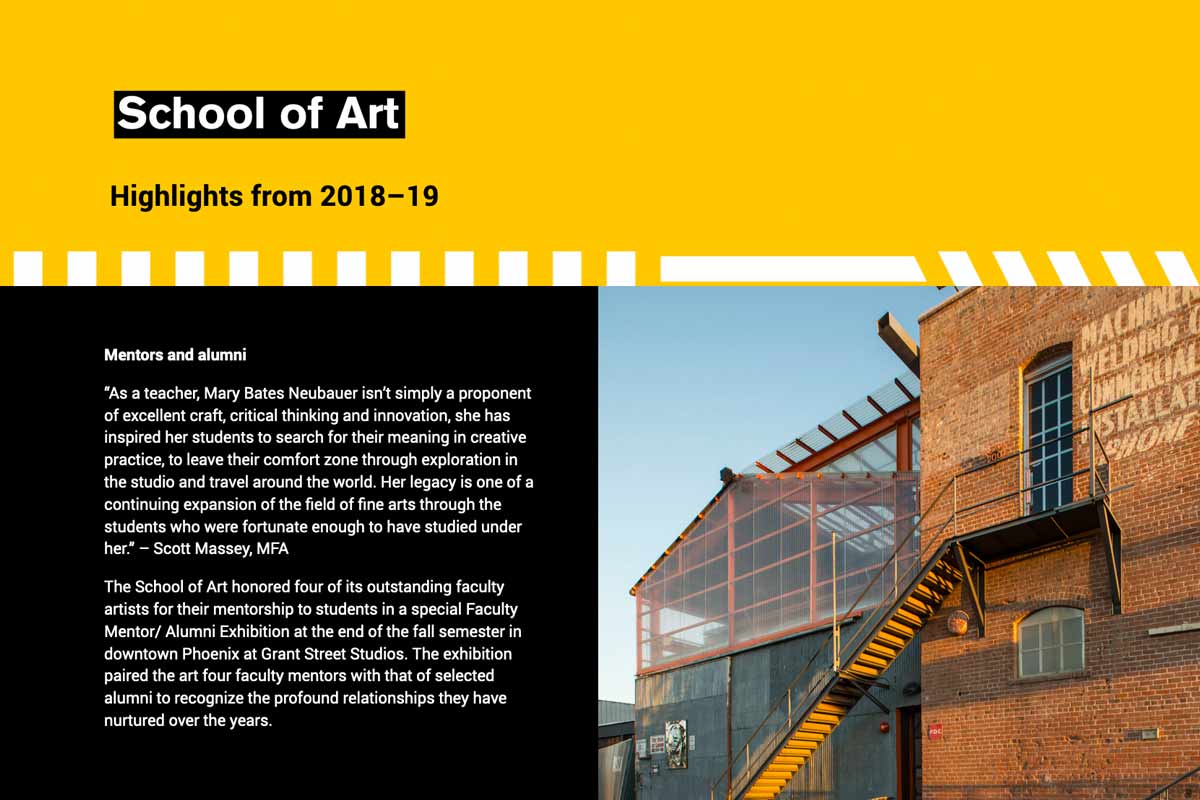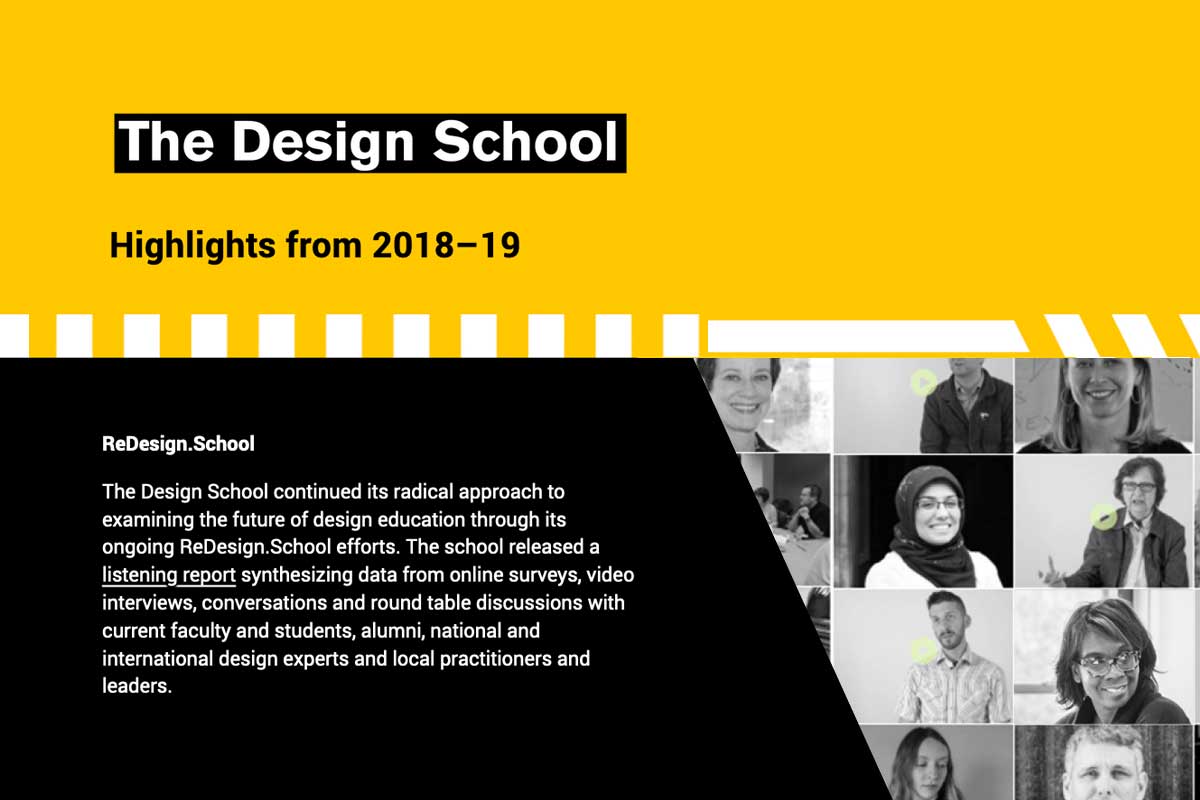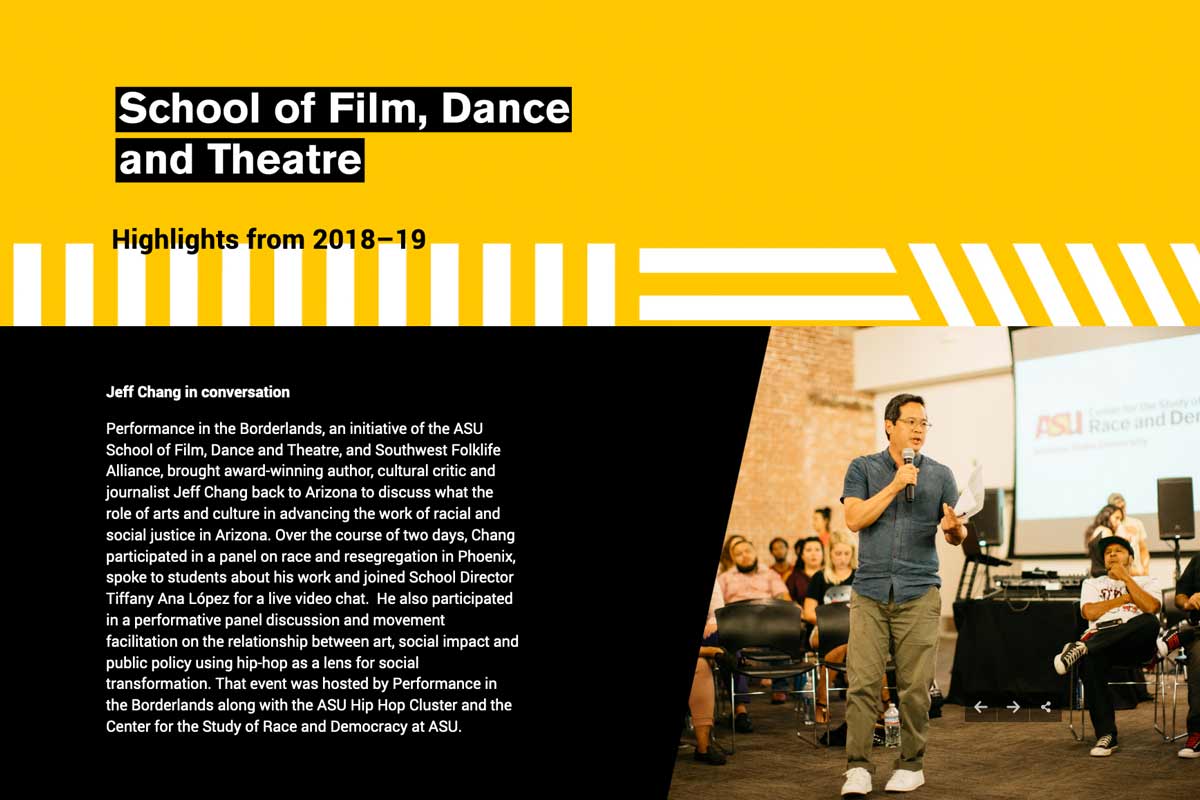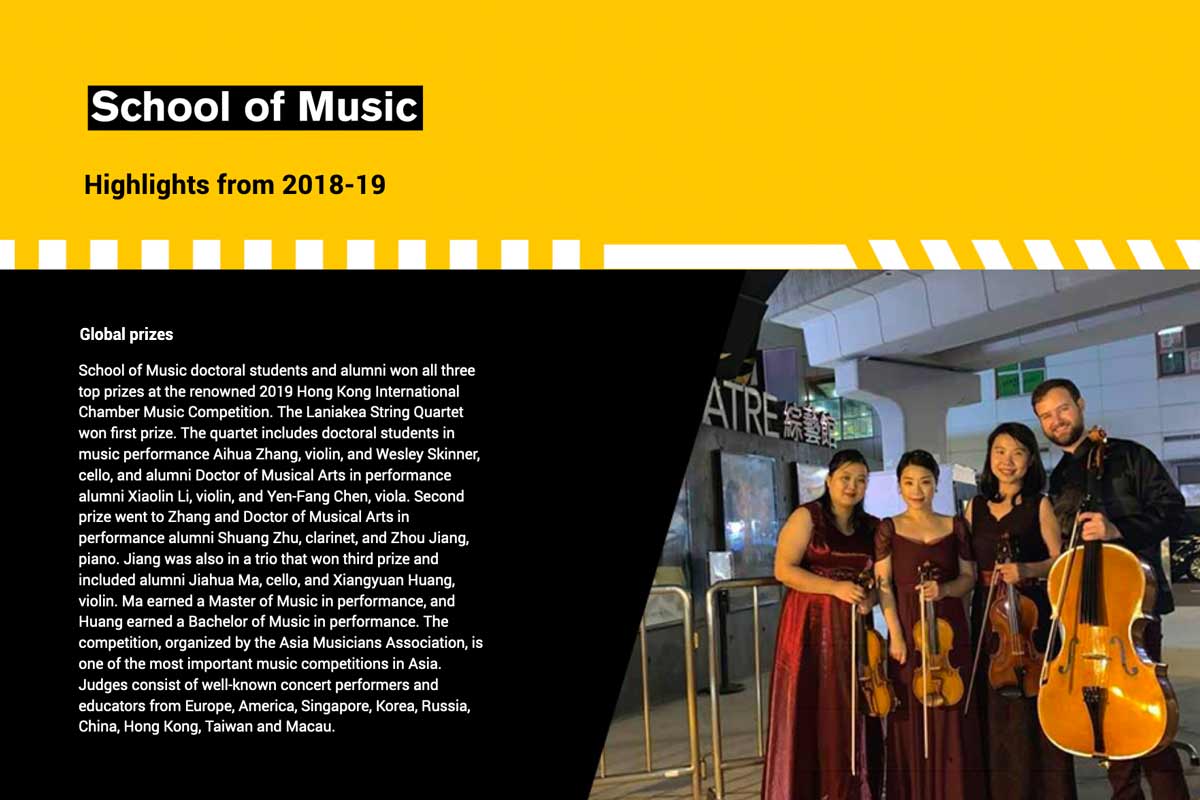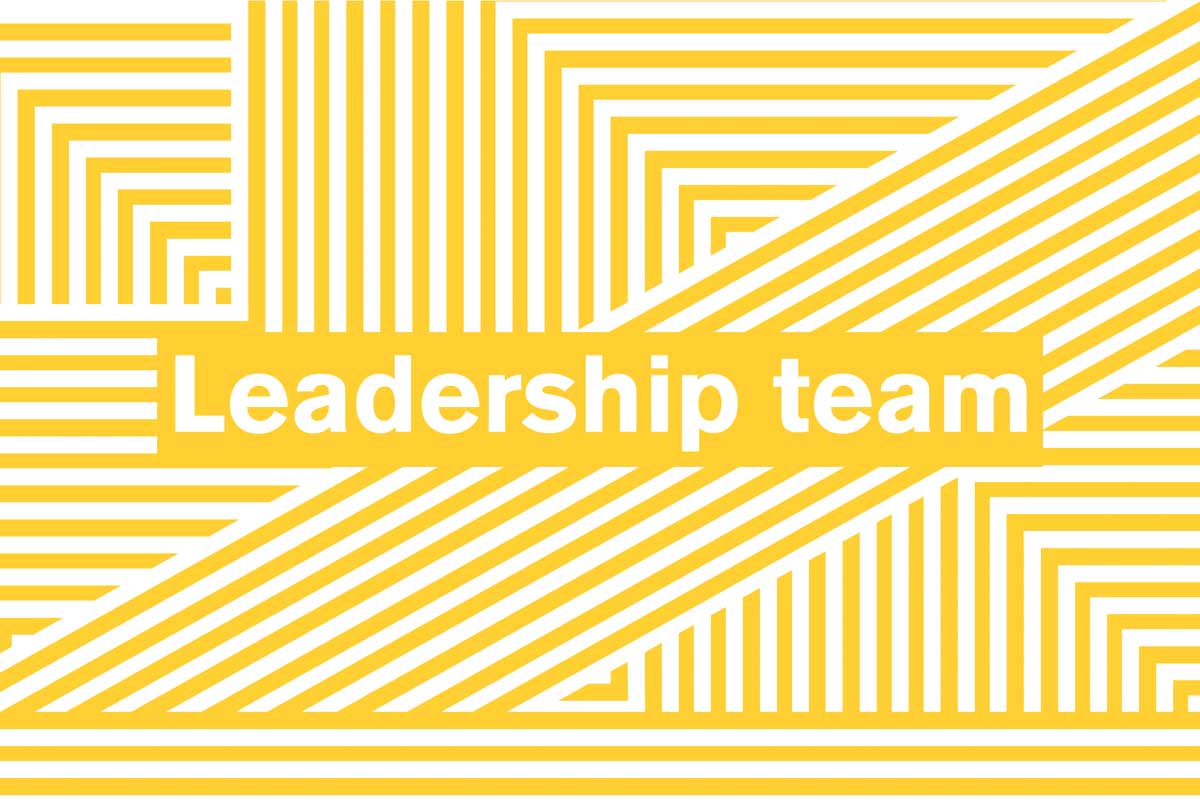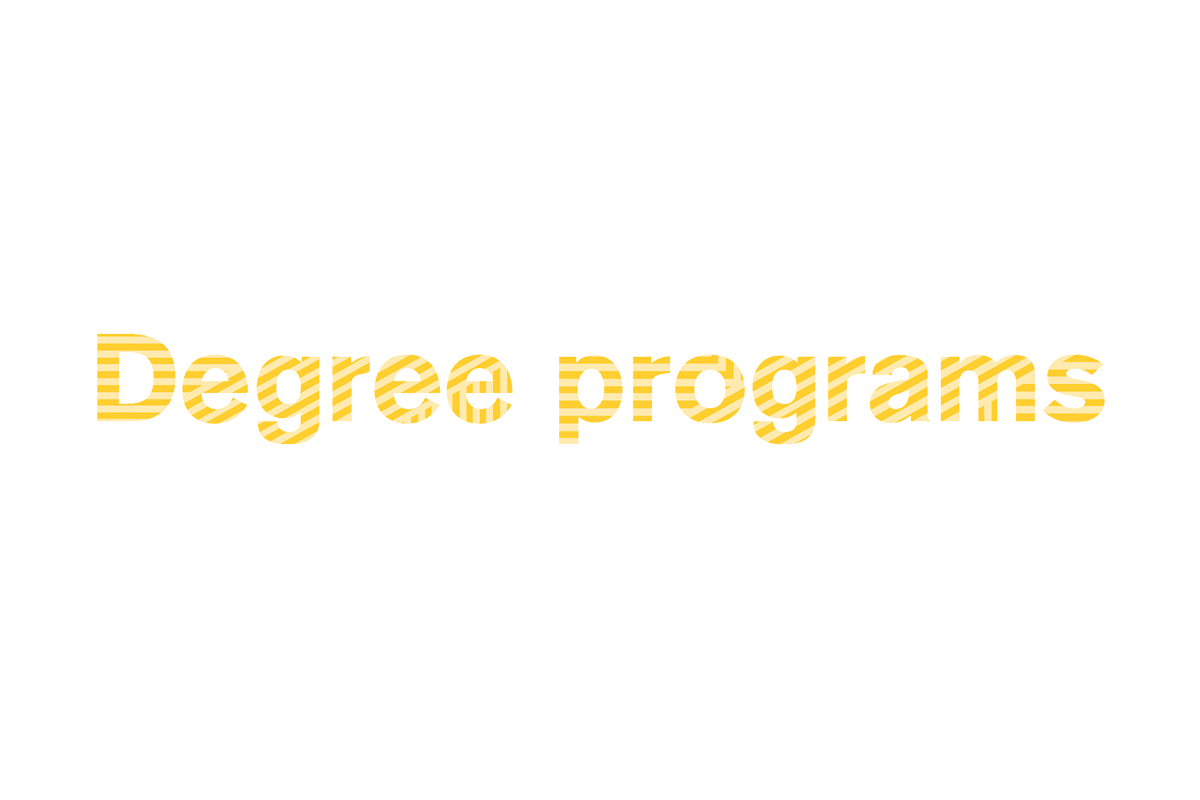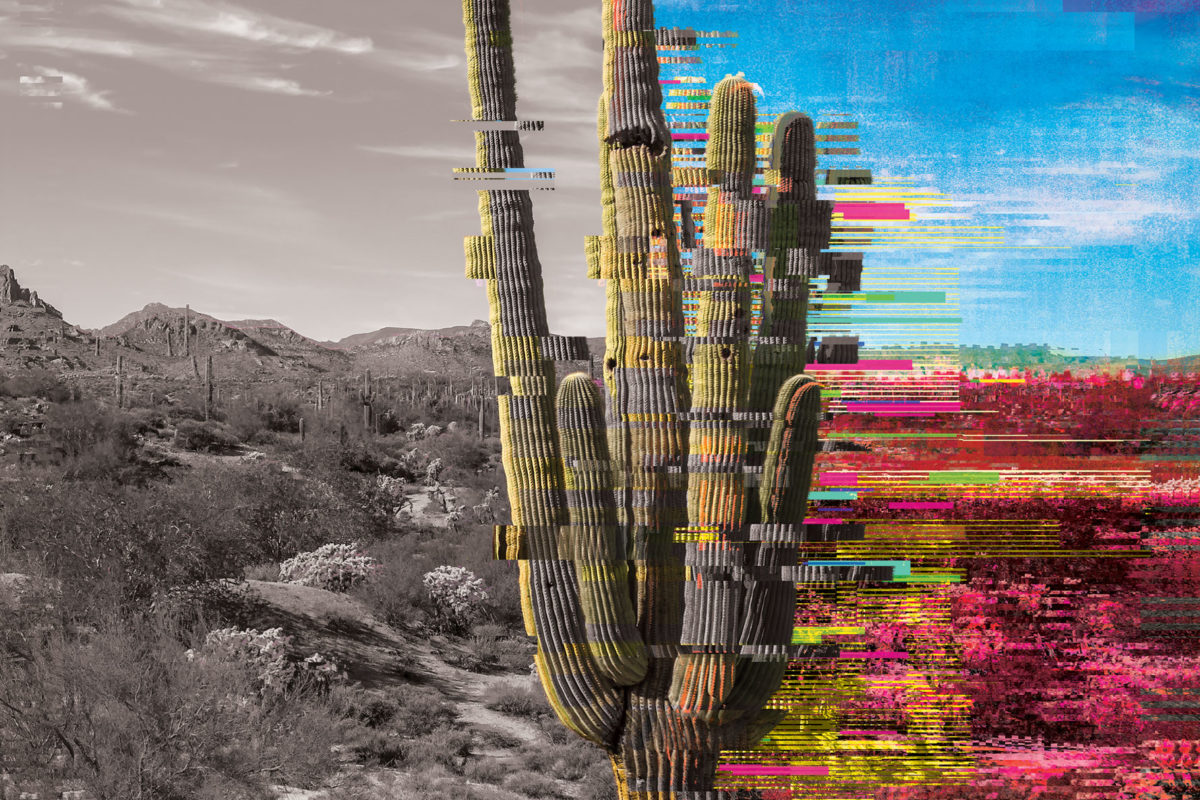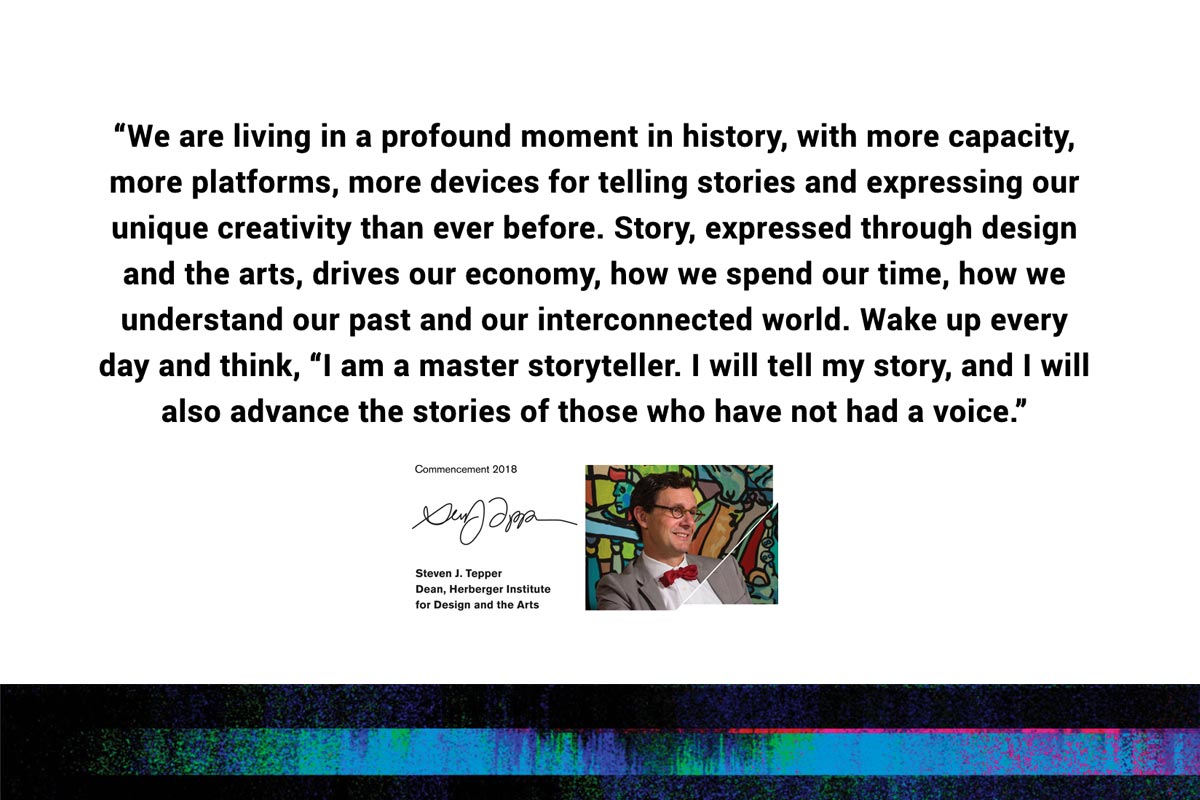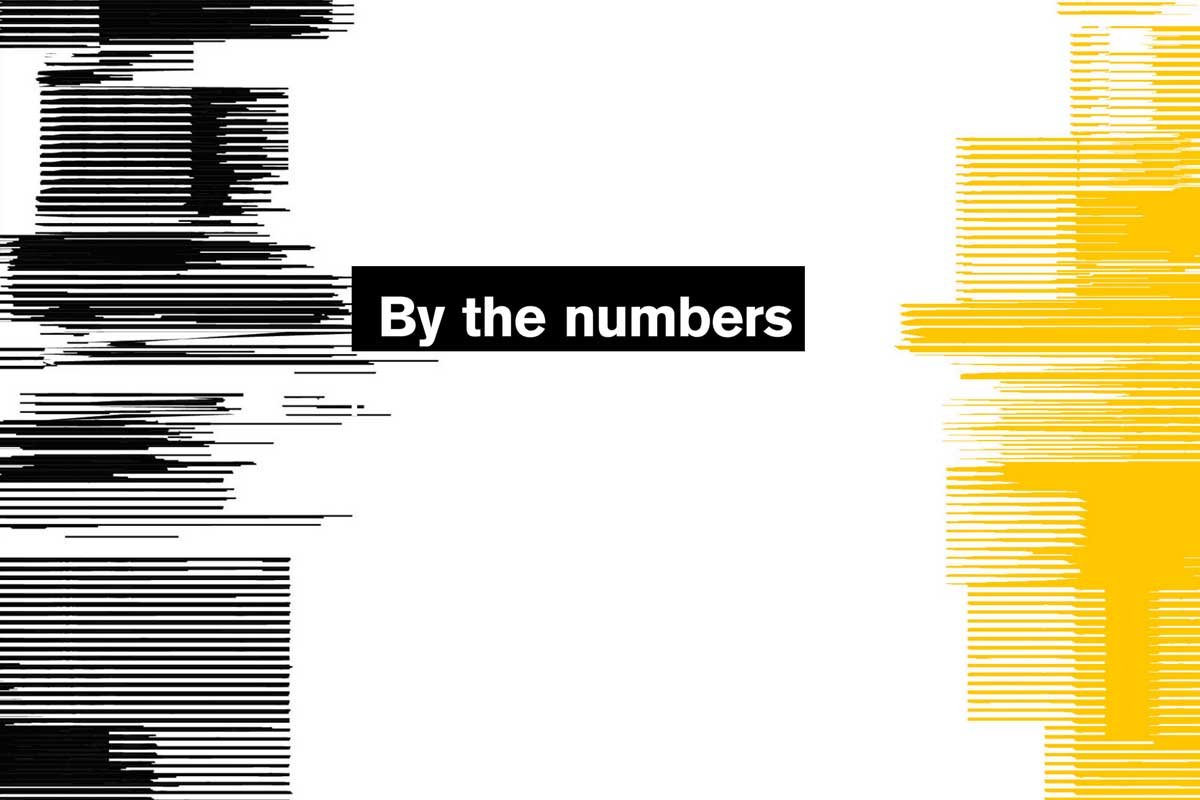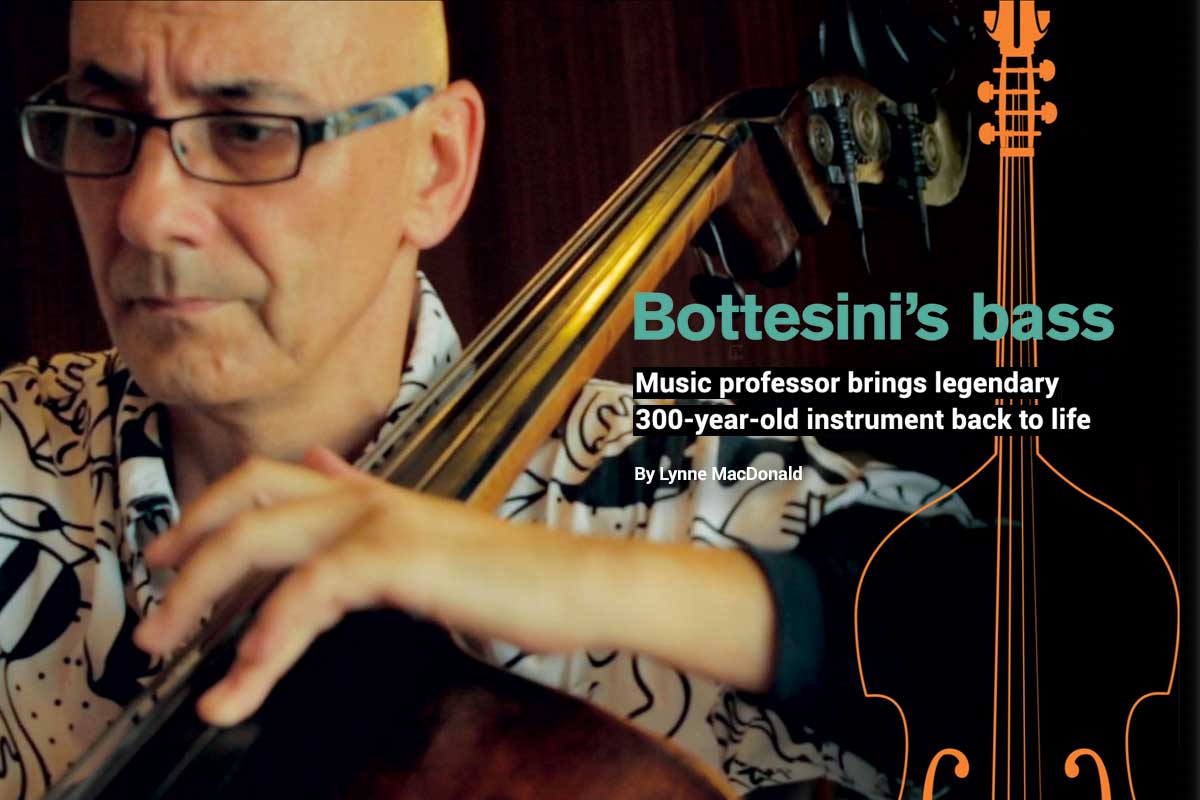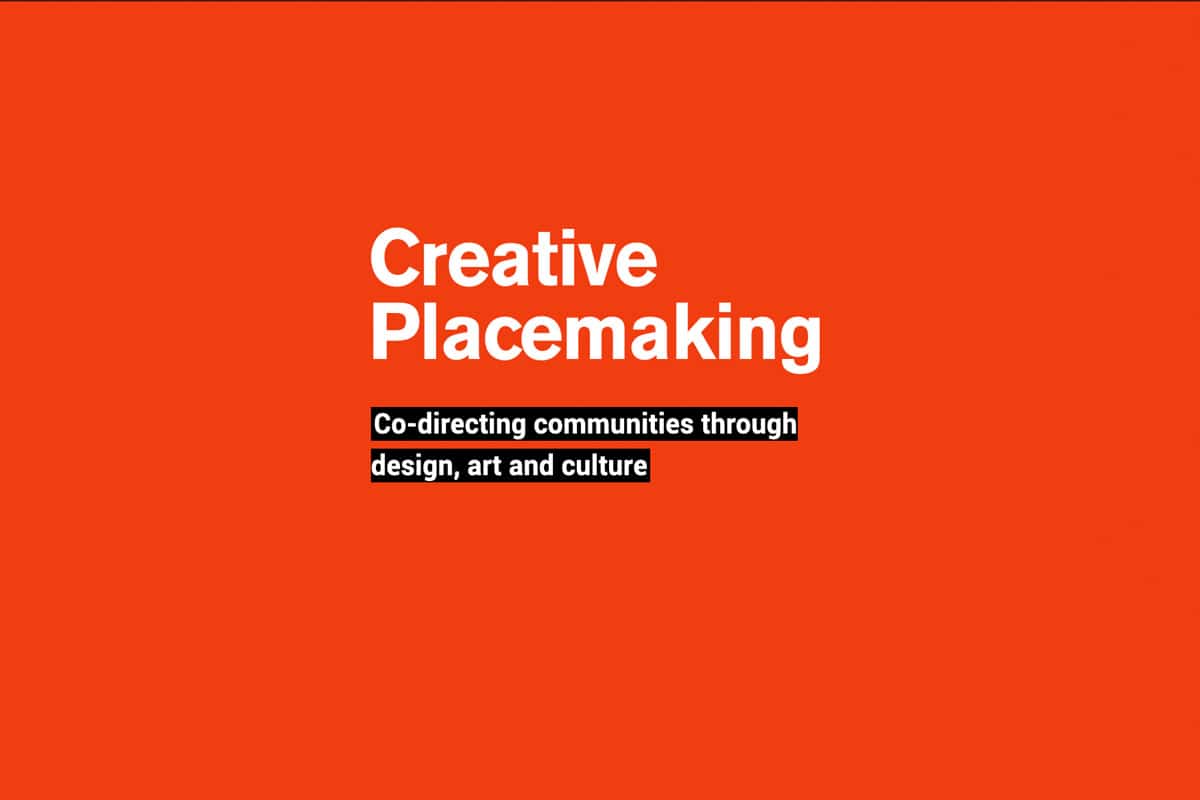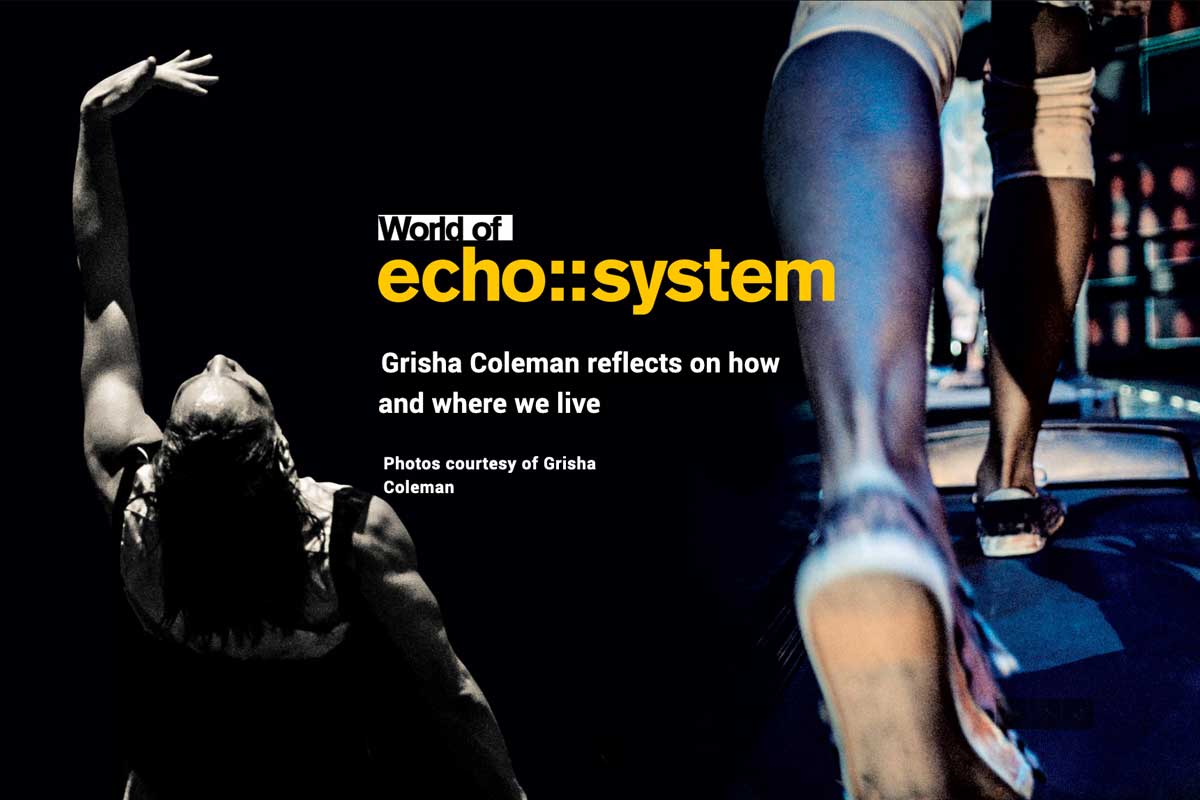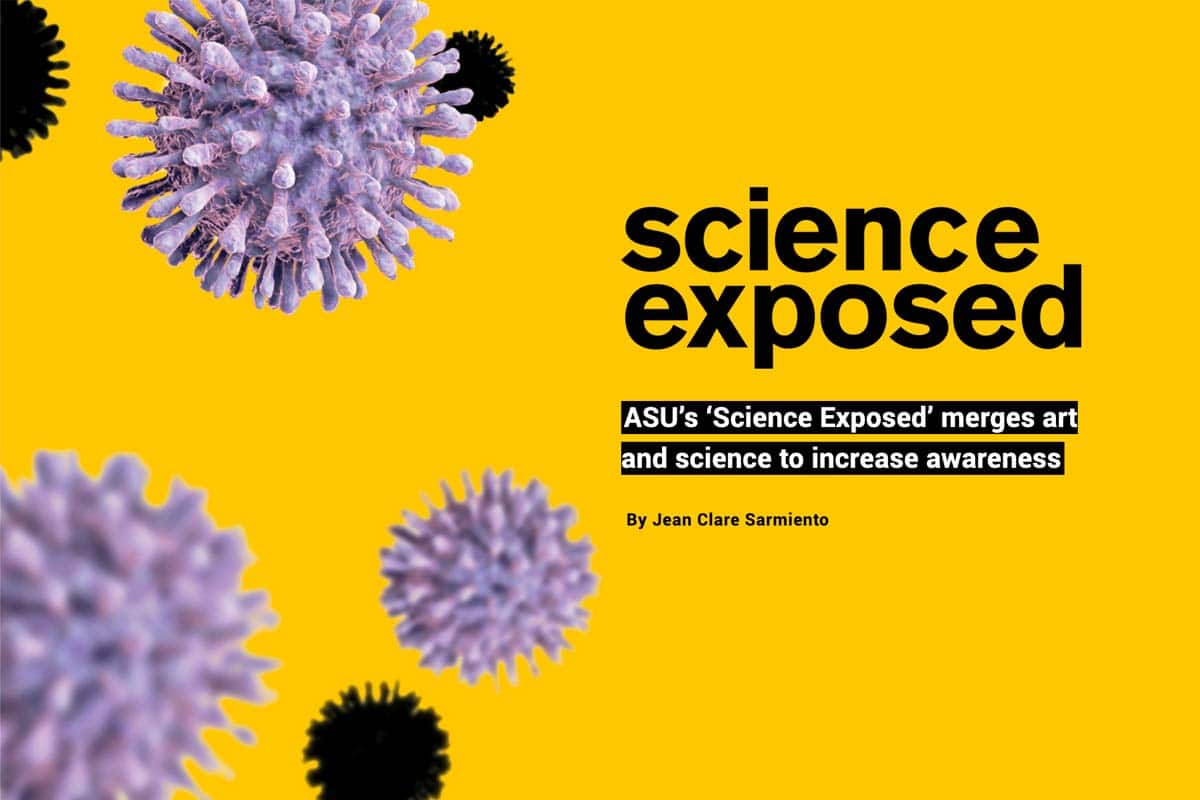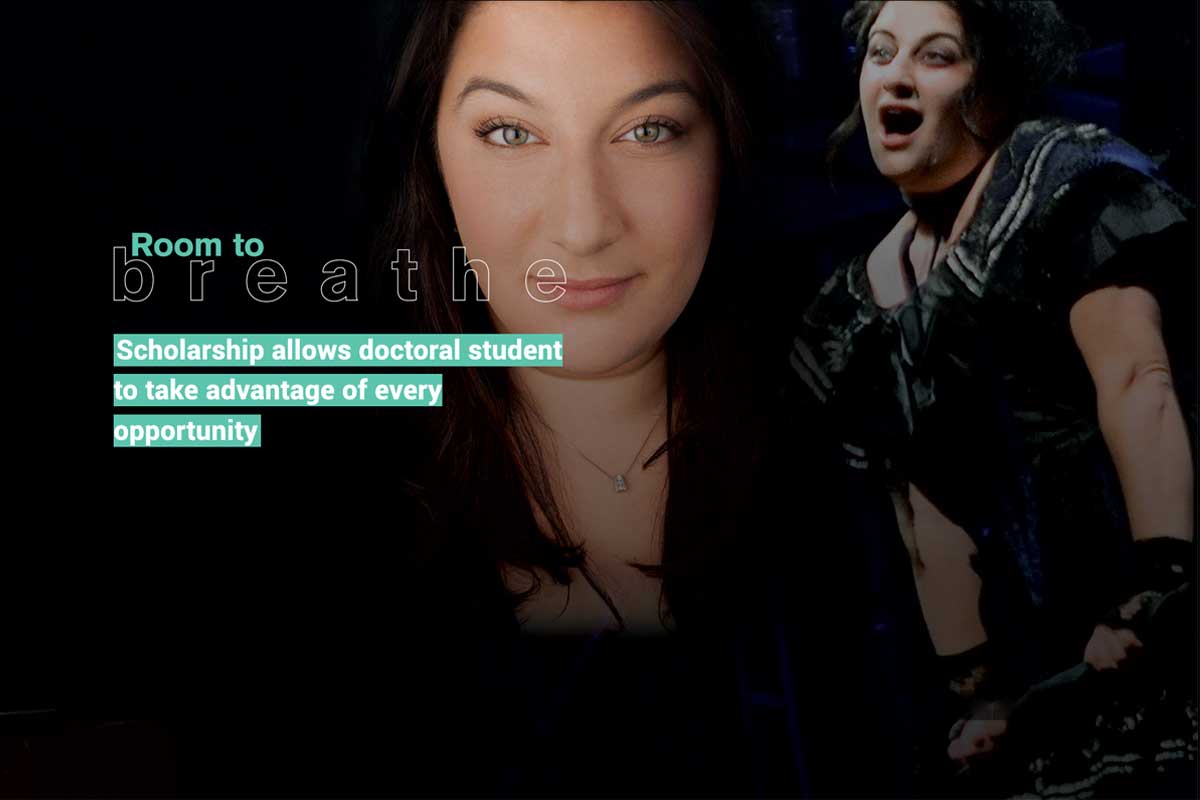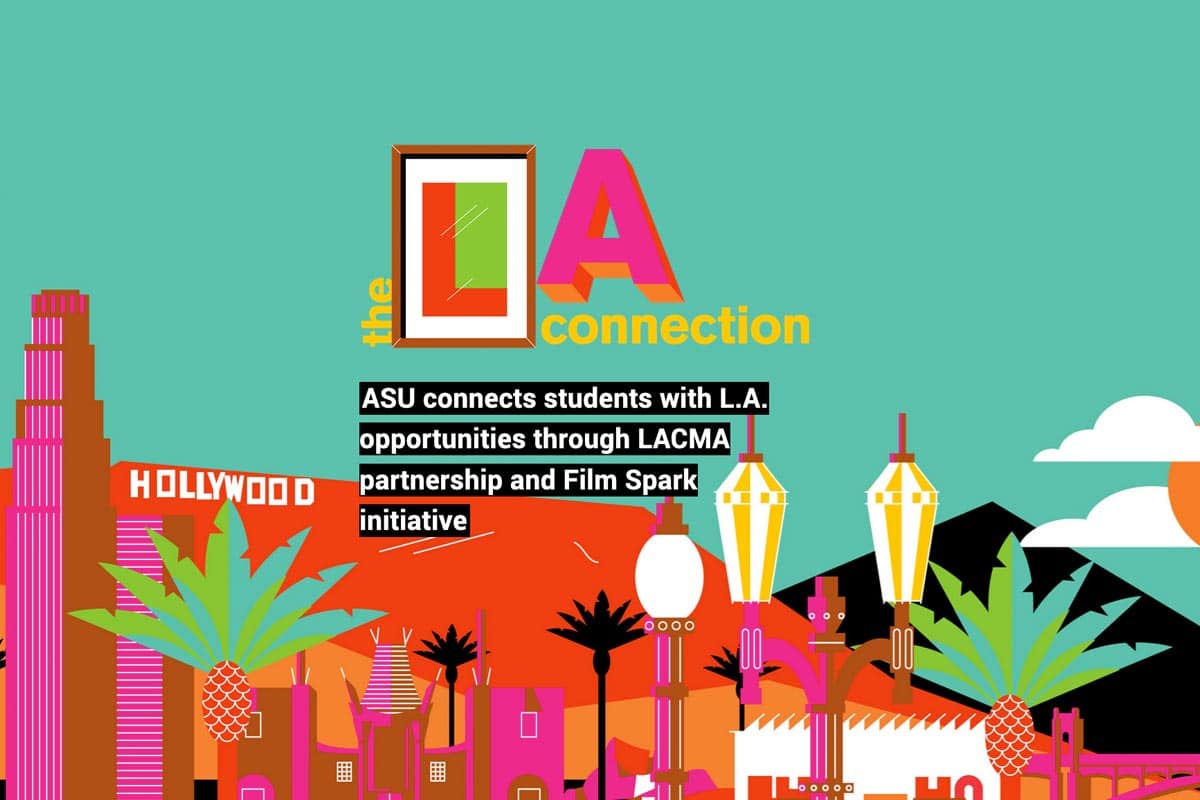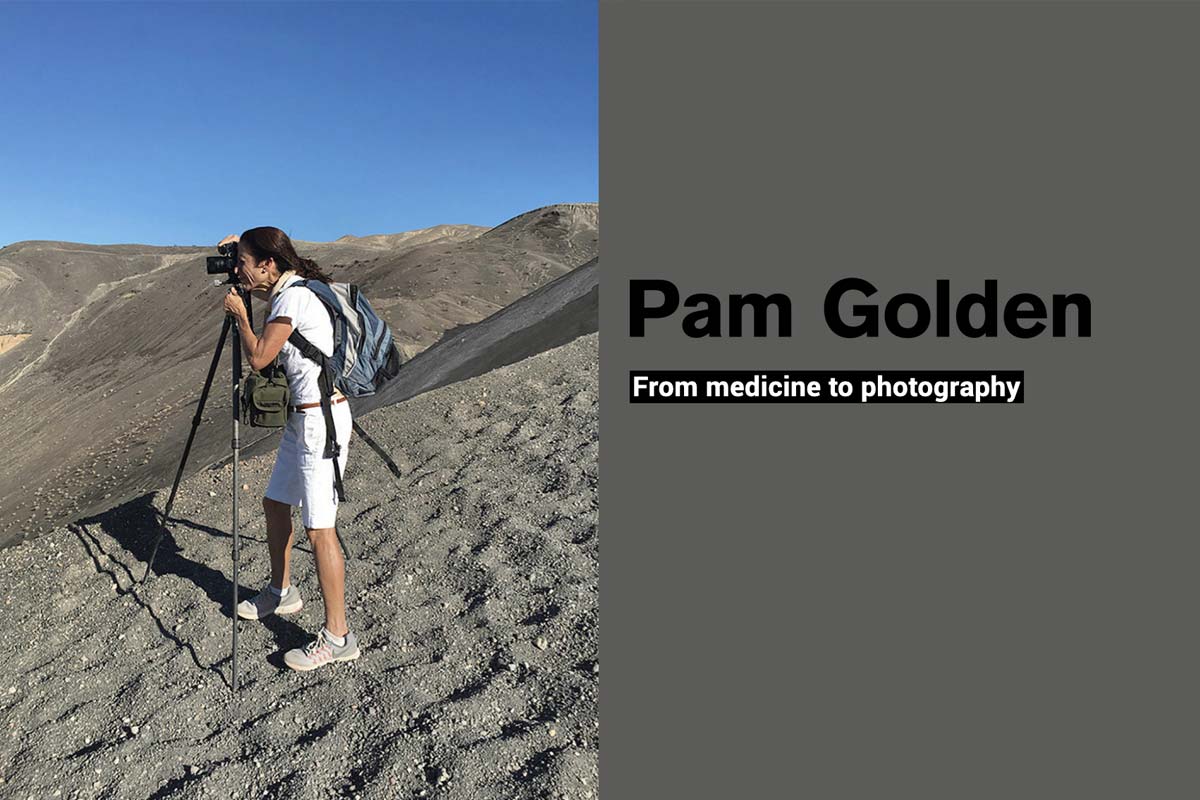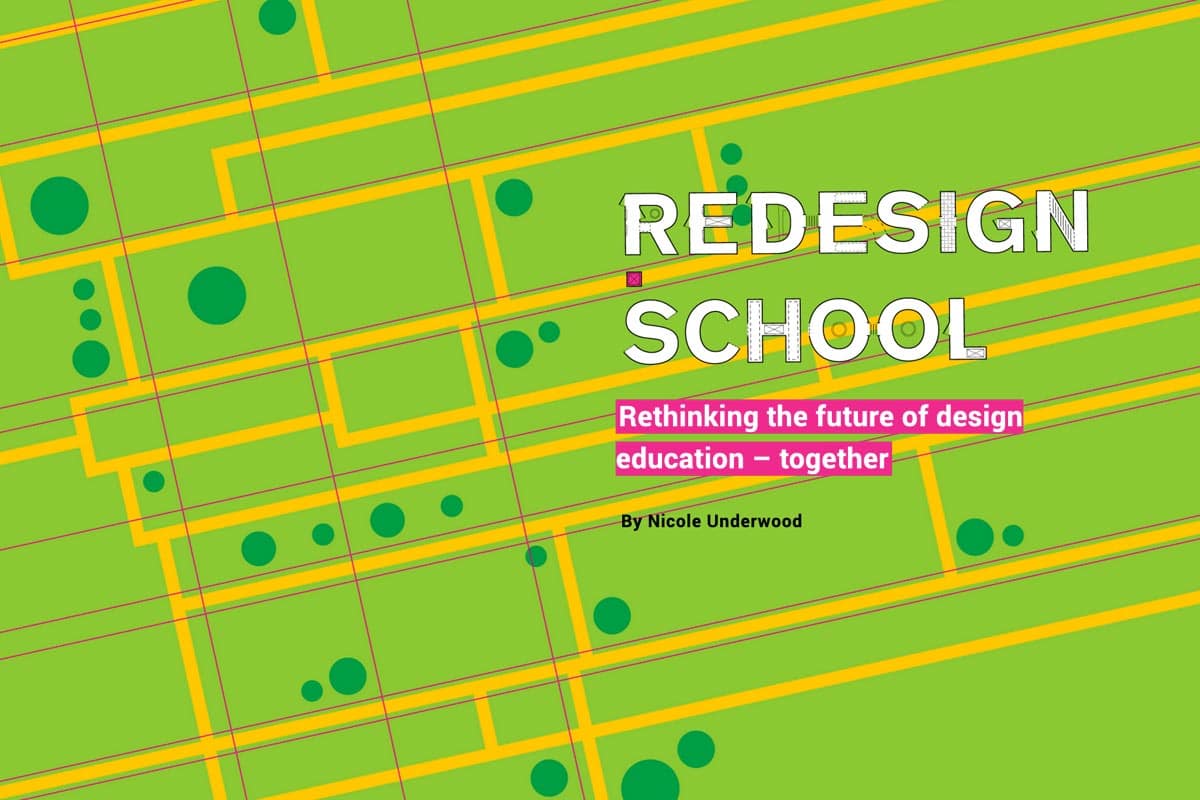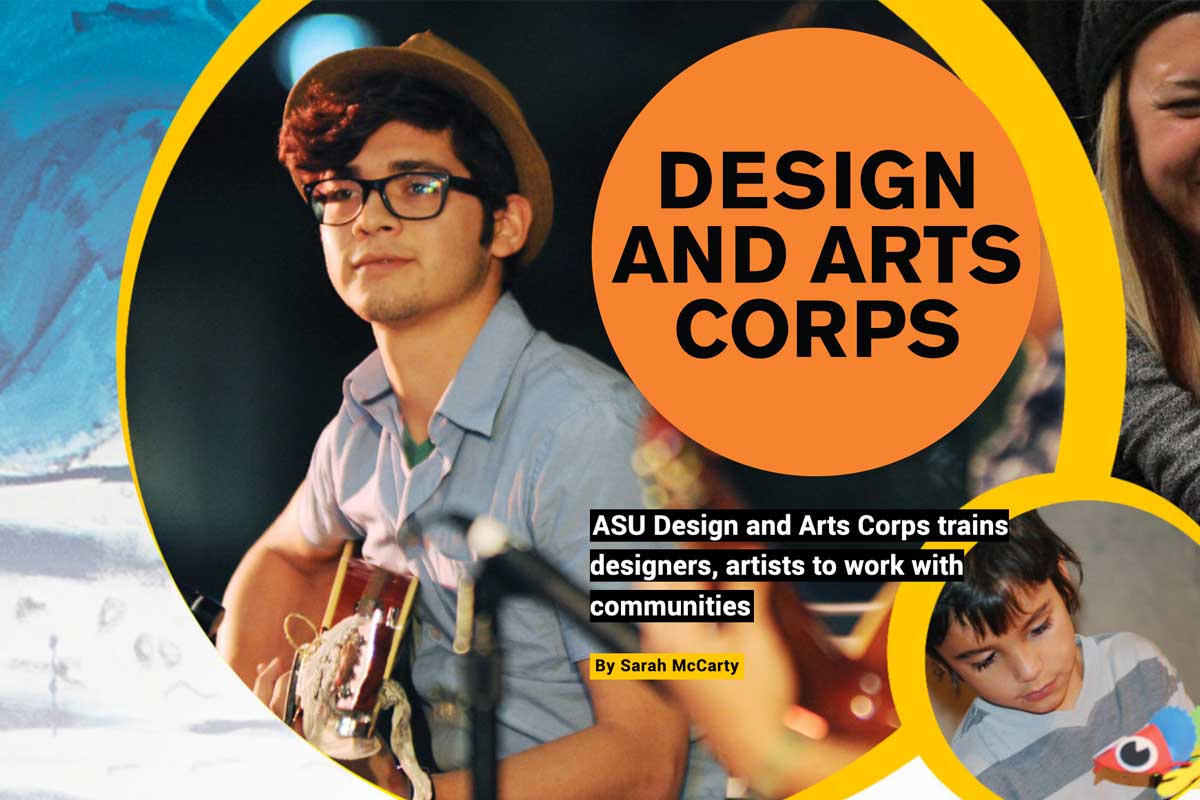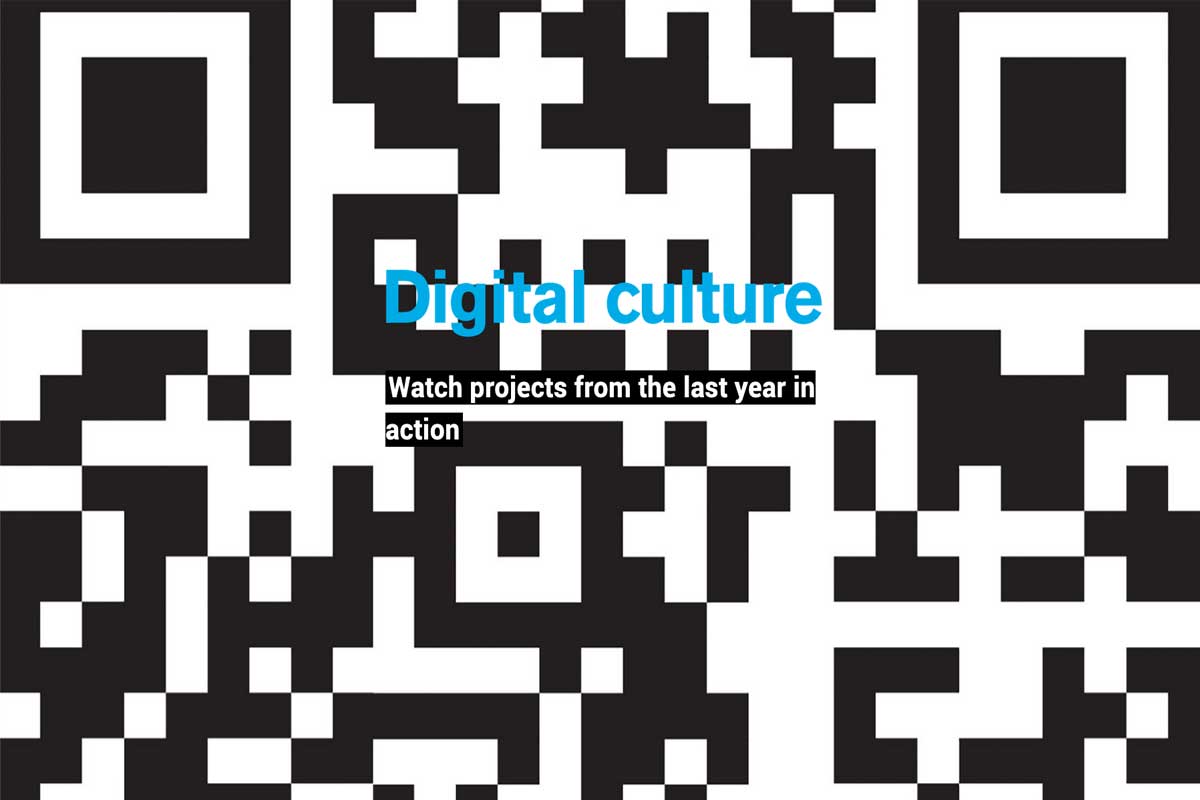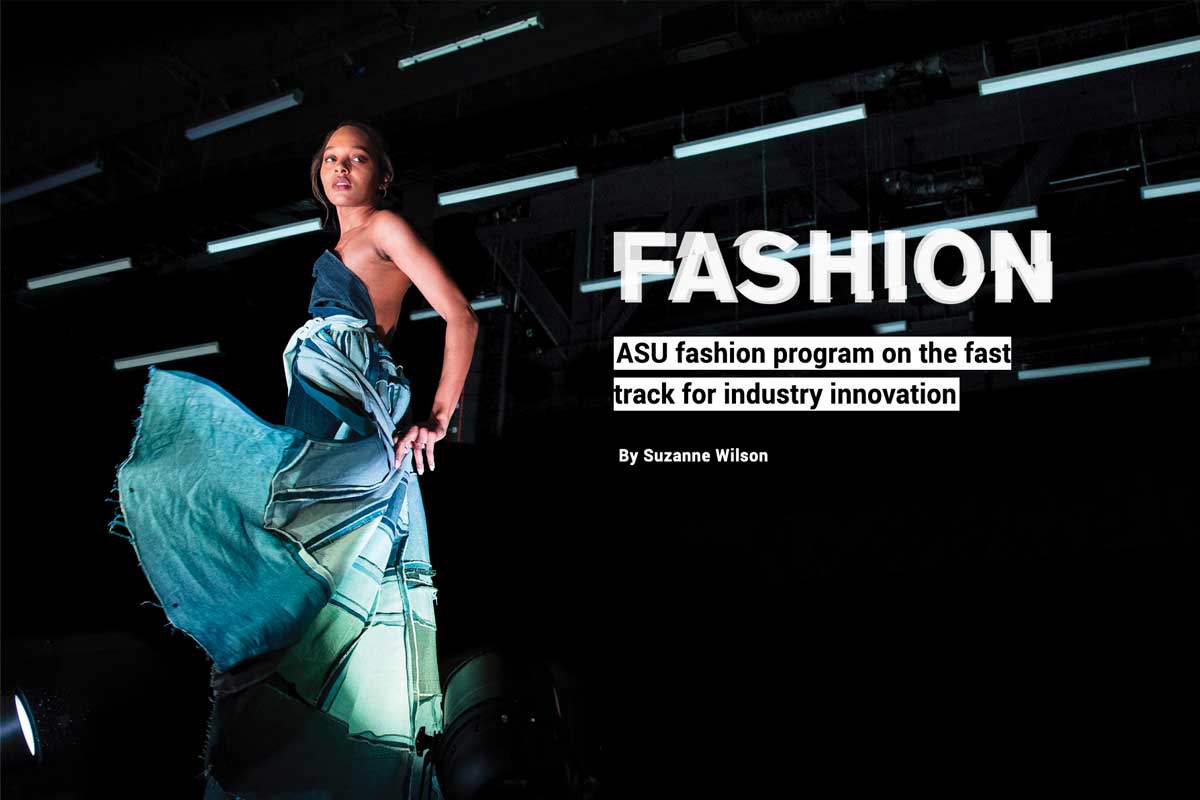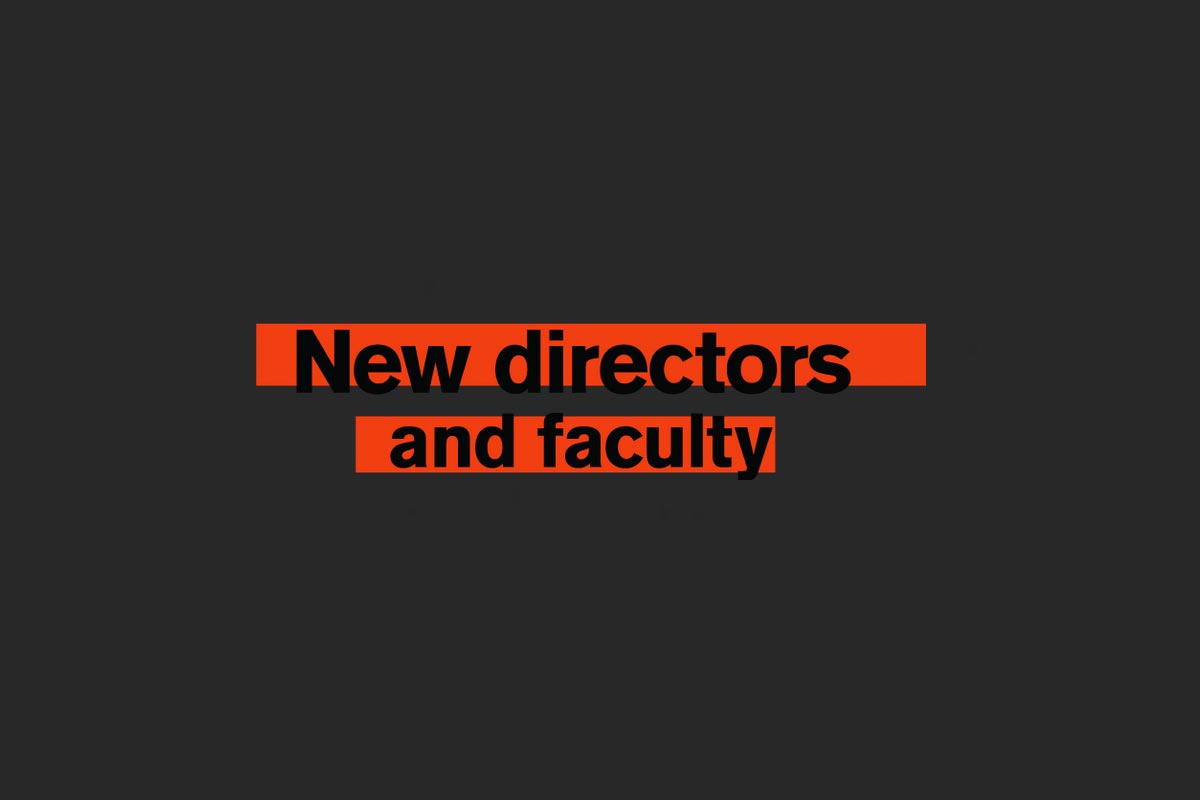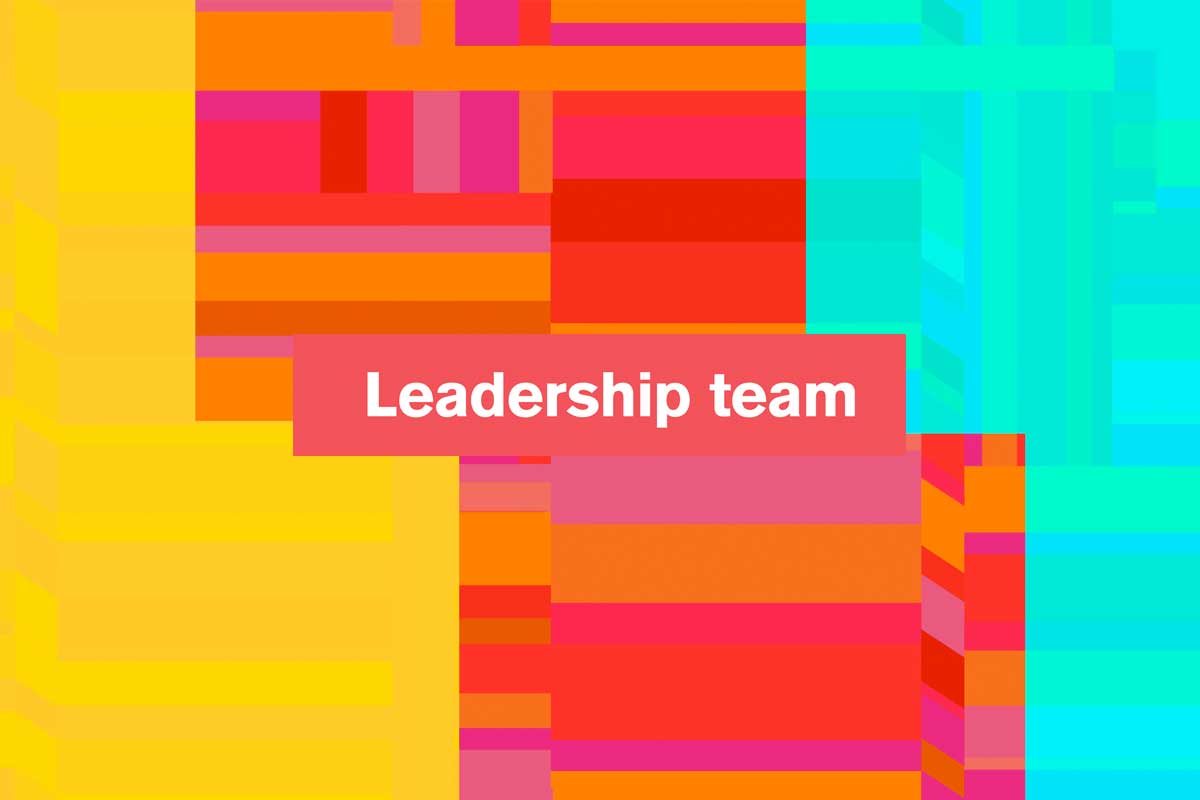When ASU launched the National Accelerator for Cultural Innovation in 2018, the goal was to learn, understand and interrogate what a university might do to fully support the lives of creators, who are the engines of social change. Many of these artists, designers work outside of traditional cultural institutions and find themselves earning a living with public agencies, social sector nonprofits and in justice movements. According to the Strategic National Arts Alumni Project (SNAAP), more and more artists and designers make careers in “non-arts” spaces, and the Accelerator aimed to understand those creative workers, their work and what it means to thrive in careers at the intersections. Our initial approach was to deeply understand this work and those artists working in this way. We did this by:

Expanding healthy careers for creative workers






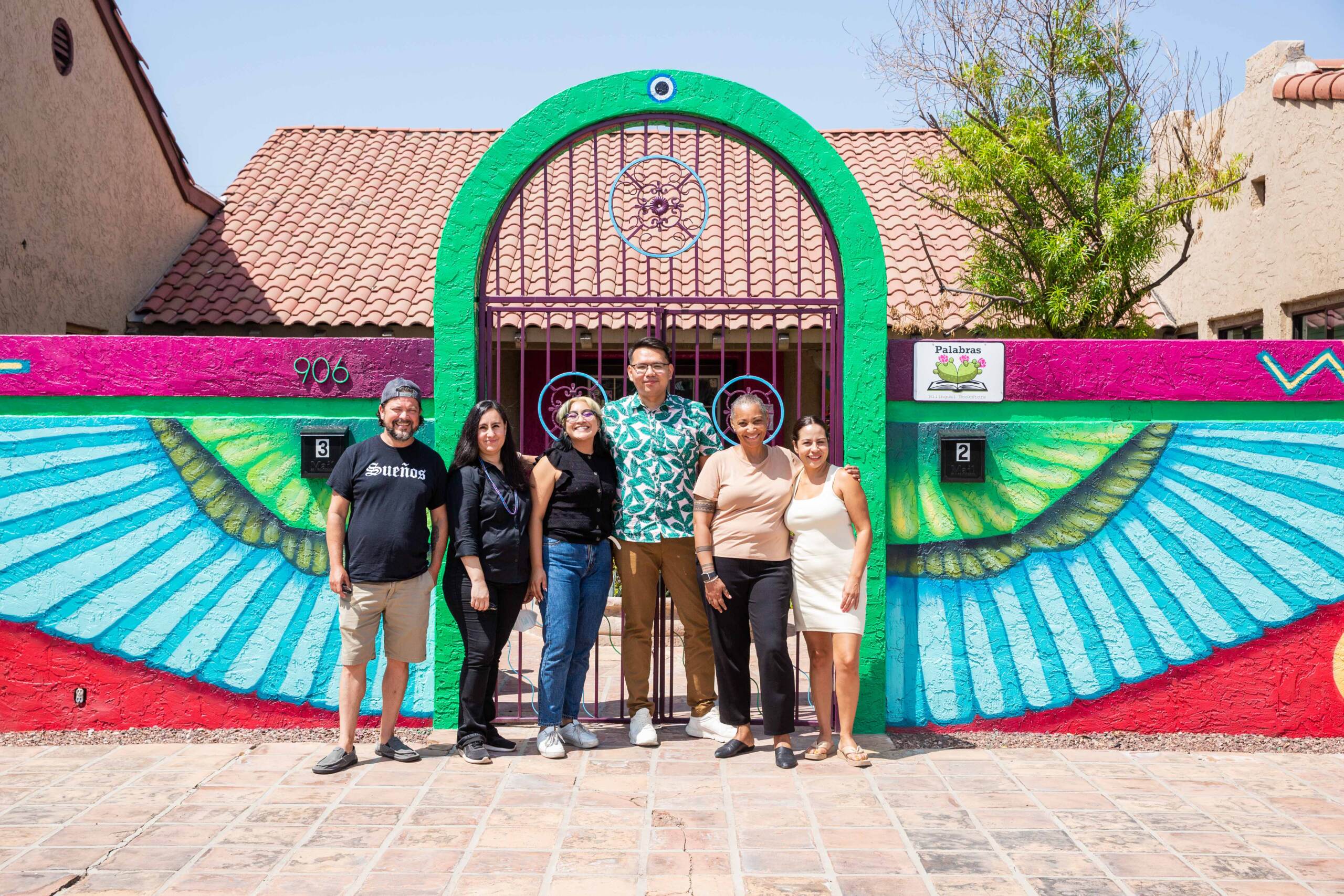
Learning in action
The Projecting All Voices Fellowship and visiting artist series launched with a grant from The Andrew W. Mellon foundation. The program provides opportunities for BIPOC (Black, Indigenous, People of Color) artists to advance ideas and projects that investigate race, identity, cultural heritage, power, policy, ability and/or place and community, particularly in the Southwest.
There have been three consecutive fellowship cohorts, supporting 10 fellows from underinvested communities across the country, and public programs that have engaged nearly 300 visiting artists and scholars. Projecting All Voices fellows connect with ASU students, faculty and staff, and learn from and with Arizona’s communities. This last year in the midst of the pandemic, four talented artists were selected as fellows across Arizona, Utah and the Diné Sovereign Nation: Liz Burden, Milta Ortiz, Horacio Rodriguez and Jake Skeets. The Projecting All Voices program supported these four artists to advance their careers, develop new artwork, and expand their support networks for continued growth. Through this program, the Herberger Institute is centering the needs of BIPOC artists and engaging a wide range of partners both within ASU’s community and more broadly among its regional and national colleagues. “Together we are investing in the development of a rhizomatic network of support to strengthen the artistic ecosystems that fellows, visiting artists, scholars and our very own graduating students can benefit from as we strive to honor and represent the full creative diversity of our country’s population” said Gabriela Muñoz, program lead.
In conversations with students, the Accelerator team found a high desire to lead careers of purpose and social impact, but low connections to artists, designers and culture workers who are living as professionals in that space. Together with student leaders and the Herberger Institute’s Creative Career Services, the team developed Assembly Required, a co-curated set of public programs, videos and other public-facing content focused on building, sustaining and collaborating in careers at the intersections.

Through dynamic programming and production, this team demonstrated creative ways of exploring how students might follow a career path with intentionality, purpose and social responsibility. Centering femme and BIPOC individuals as subject matter experts, they built new virtual learning opportunities within the Canvas platform in collaboration with Creative Capital, ASU alumni, Creative Capital awardees, and Design and Arts Corps staff. Culturally-responsive Herberger Institute competency-based curriculum was collaboratively developed and produced to address the current needs and career development goals of future and emerging creative workers.
“Collaboratively, we are building relevant tools and creating the space for knowledge exchange which honors and values the wisdom of those who have a deep understanding of their community and their practice, and the generosity to share it,” said program lead Estrella Esquilín.
Over the last year, this Accelerator team developed a policy research and thought partnership with Grantmakers in the Arts, the National Association of Community Economic Development Agencies, Get Creatives Back to Work Coalition and other state agencies. In addition to thought leadership collaboration, the team led research and authored “Opportunities at the Intersections: Advancing Racial Equity via Arts and Culture in the Public Sector,” a report that details how arts and culture can be a critical tool for advancing racial justice in the public sector through workforce development, juvenile justice, green infrastructure and public health.

Three years after the launch of the Accelerator, the pursuit of its goal continues to be challenging, and doing so has placed the university squarely in a position to learn from and respond to the needs of artists and designers currently working within intersectional fields. “Quite simply, as we adapted, invested and prototyped in the Accelerator,” said Jen Cole, executive director, “we came back over and over to a simple notion – creative work isn’t working for creative workers.” The pandemic and the national movements for racial justice served to further expose the income instability, lack of safety net and overall precarity of cultural work and the interrelationship of healthy work to healthy communities.
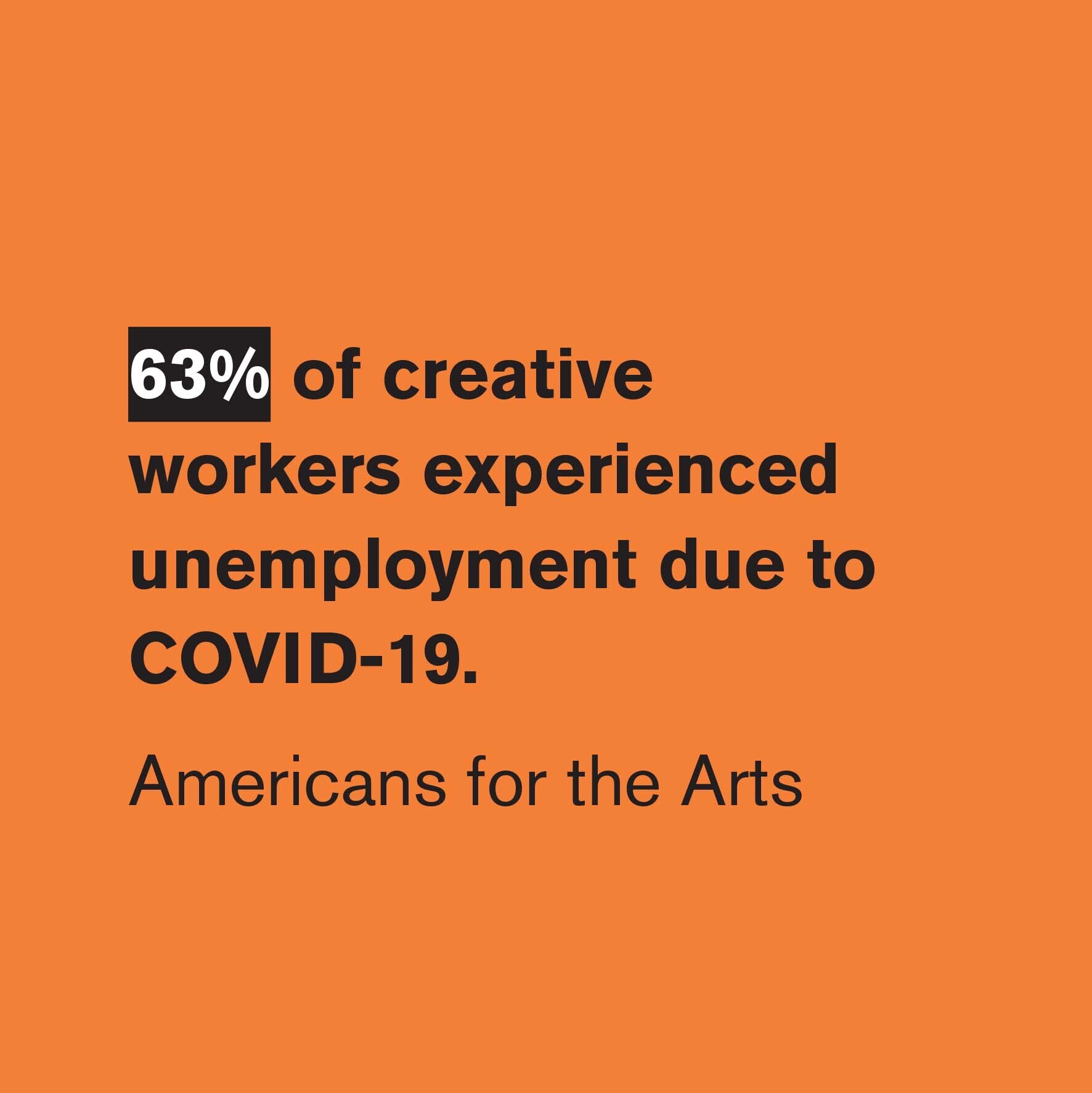
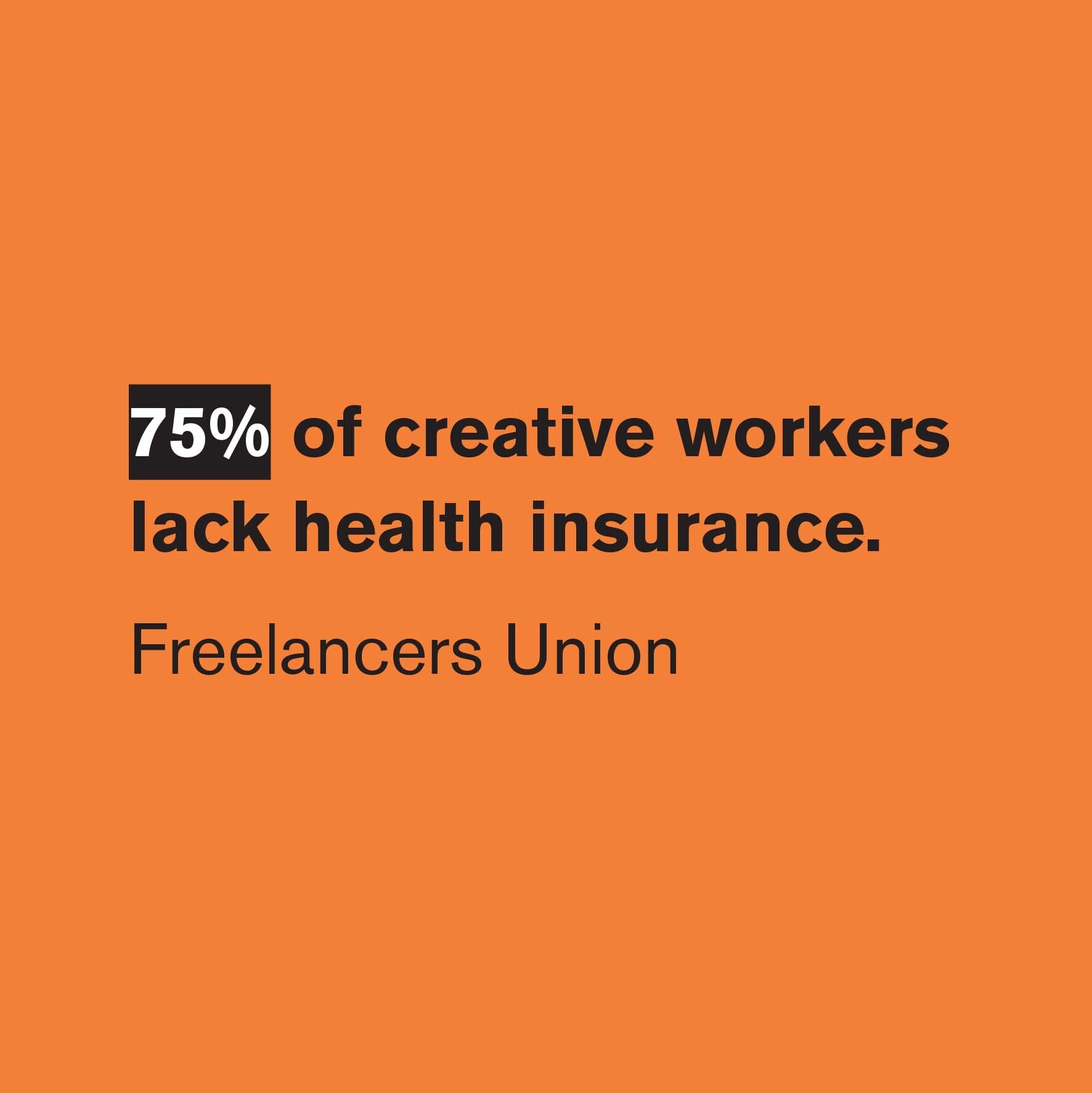
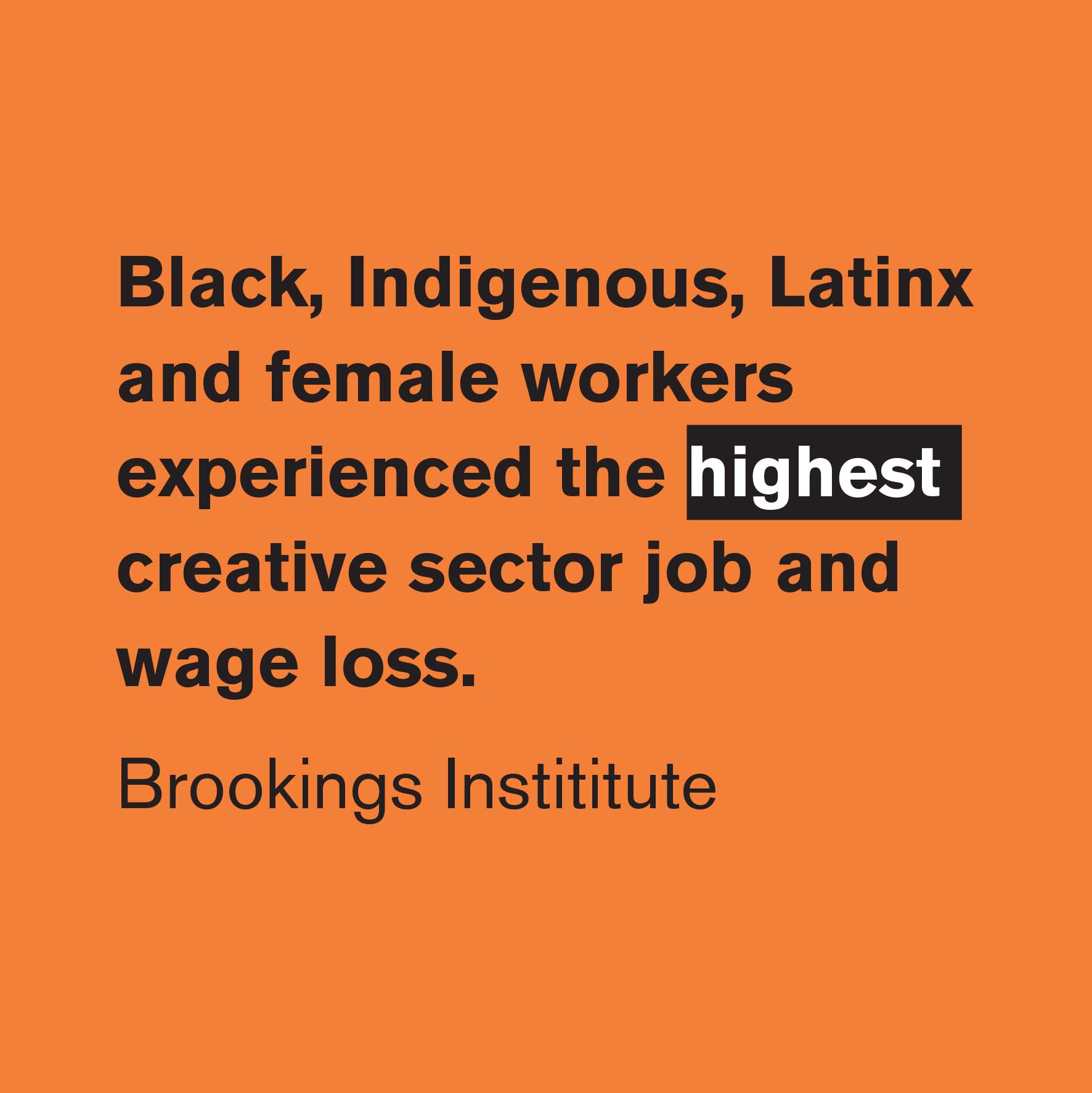
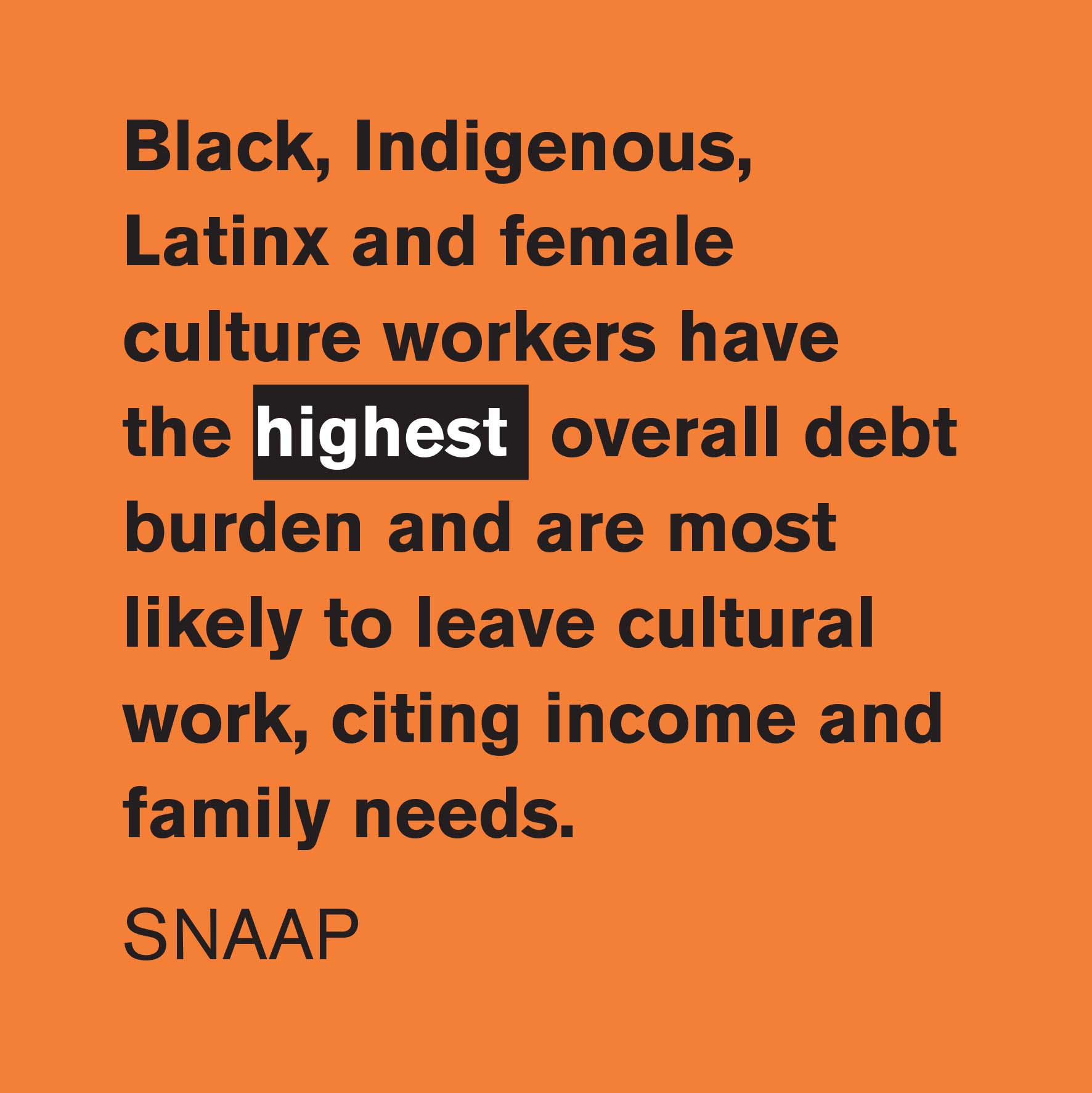
A way forward
From September 2020 through February 2021, the team, with input from faculty allies and external collaborators, recast the mission and vision of the Accelerator. Taking into account its own experiences and findings, and the rapidly changing external forces facing culture workers at the intersections, the team put forward new questions:
What would a university do if it loved BIPOC artists, designers and culture workers?
What would a university do if it was committed to helping cultural work at the intersections move from precarity to abundance?
How would it think about honoring community wisdom the same way it honors institutional knowledge?
The team began to imagine this new set of questions and imagine a new way of work, but realized the National Accelerator for Cultural Innovation name was not serving its core mission. Cultural Innovation specifically focuses on a public output, rather than the human capital behind that output. The team’s conversations with artists and broader studies demonstrated an urgent need to center workers rather than their cultural products. With these ideas in mind, the team made the collective decision to leave behind the National Accelerator for Cultural Innovation and go forward in its next chapter as the National Collaborative for Creative Work.
The National Collaborative for Creative Work operates as a network of creators, policy thinkers, movement makers and change agents that work together to weave projects, partnerships and policy solutions that enable healthy, equitable creative work in the United States. The team organizes this work around key frames:
Operate under a shared power model.
Focus on creatives and artist-led networks in the Southwest.
Focus on career support for creative workers.
Activate research and policy alliances that imagine more equitable work for creatives.
To learn more about the National Collaborative for Creative Work, including highlights from previous projects and work, visit herbergerinstitute.asu.edu/national-collaborative, and follow them on Twitter and LinkedIn for weekly updates.
Photos in order of appearance: Projecting All Voices fellows and ASU staff (l–r): Horacio Rodriguez, Gabriela Muñoz, Yolotzi Lopez Ortega, Jake Skeets, Elizabeth Burden, and Milta Ortiz gather at the Nurture House, summer 2021.
Teaching artists Sean Avery Medlin and Kate Watson-Wallace in Writing Your Story Canvas module with ASL interpretation by Aisha Simpson.
Teaching artists and ASU HIDA alumnae Erika R. Moore and M. Jenea Sanchez in the Sharing Your Story Canvas module, with ASL interpretation by Aisha Simpson with Sign Nexus.
